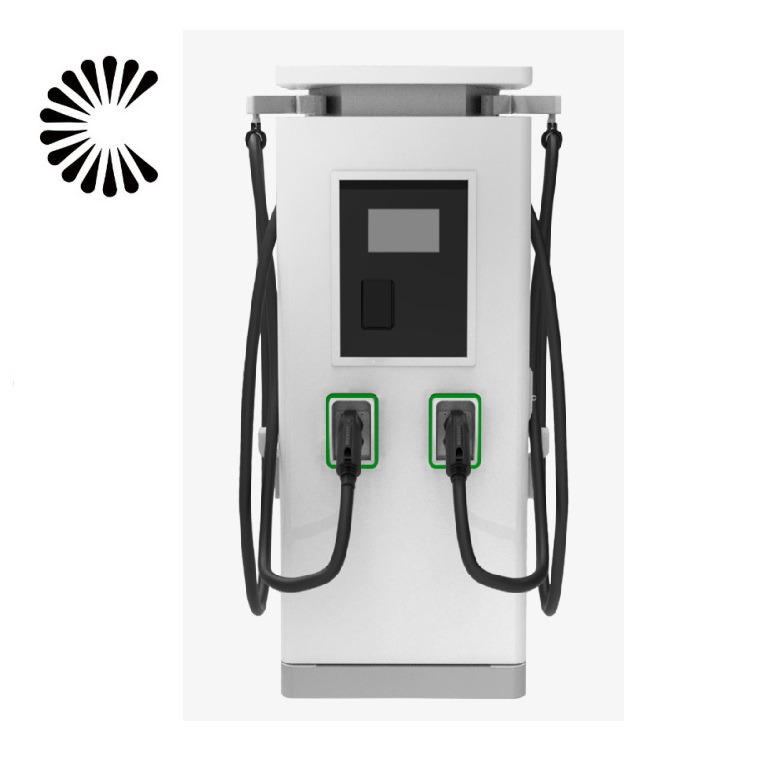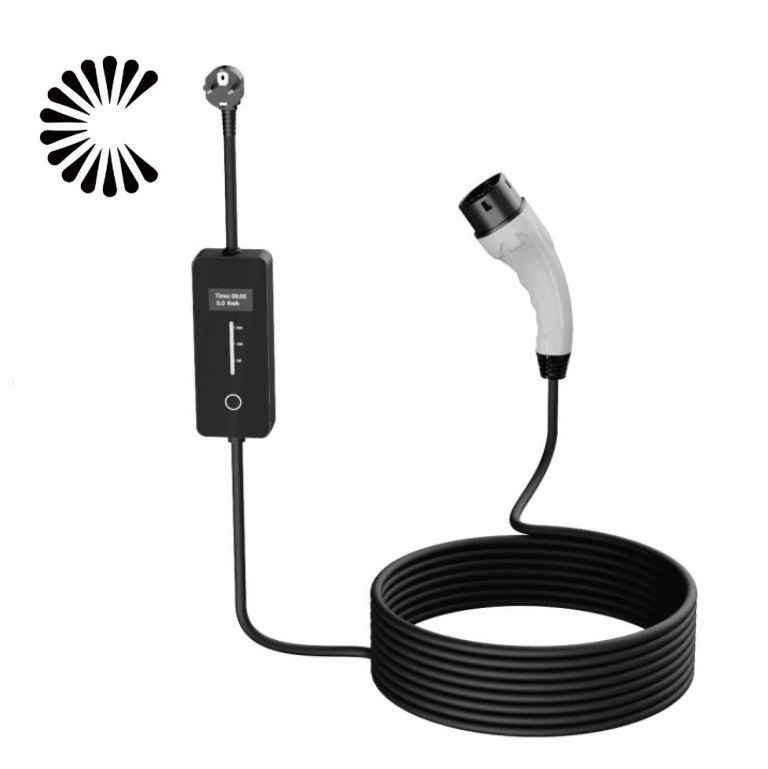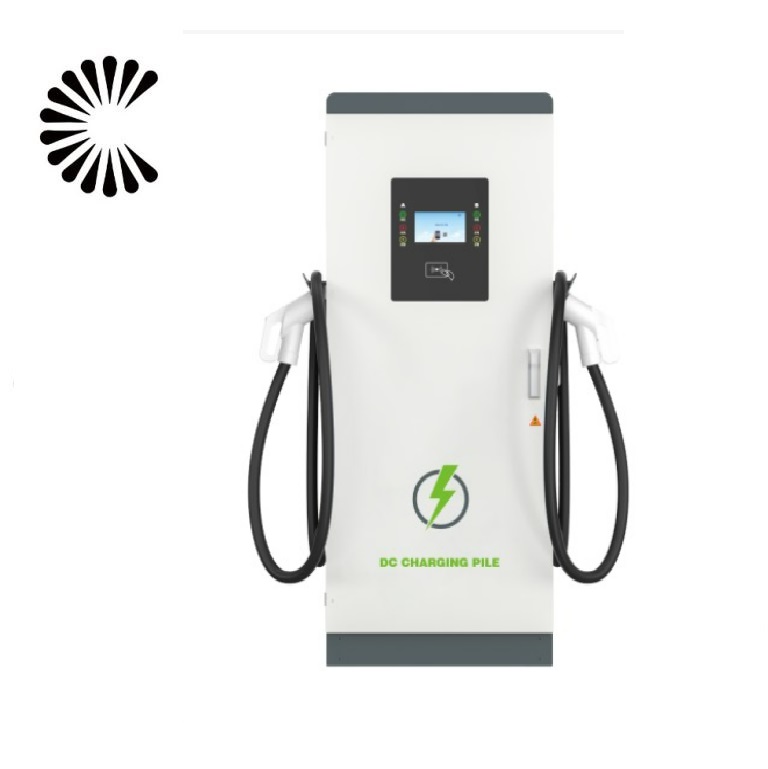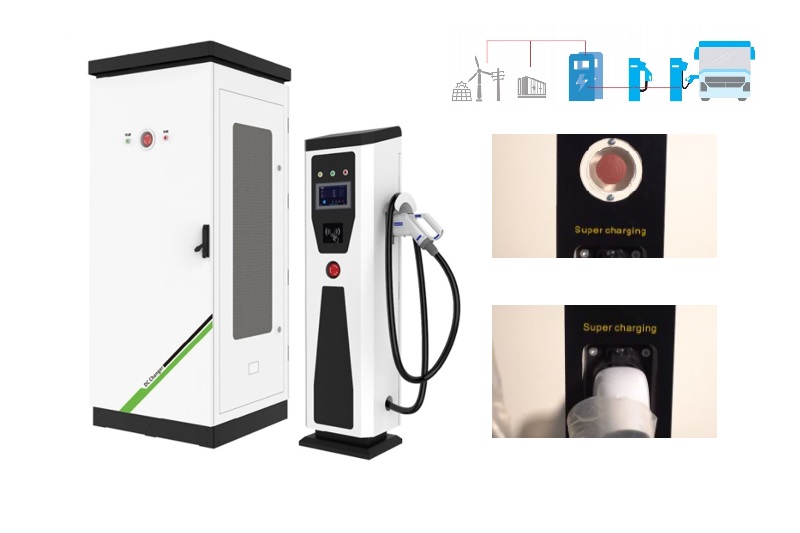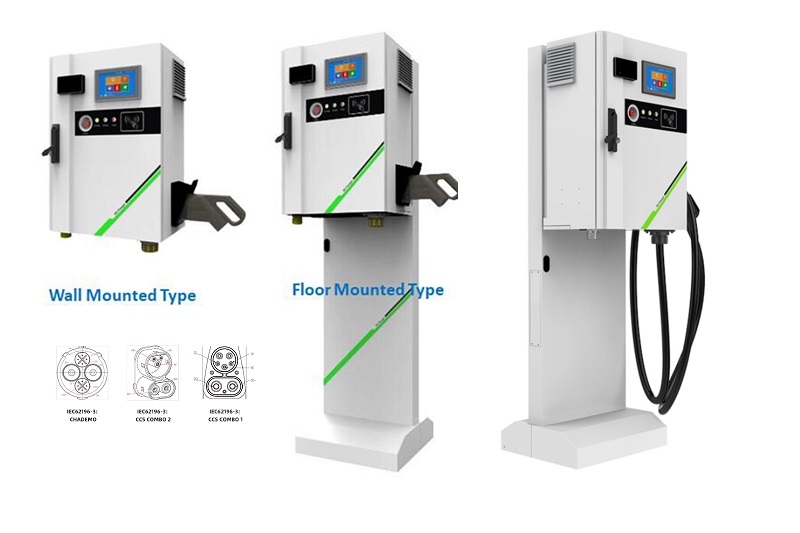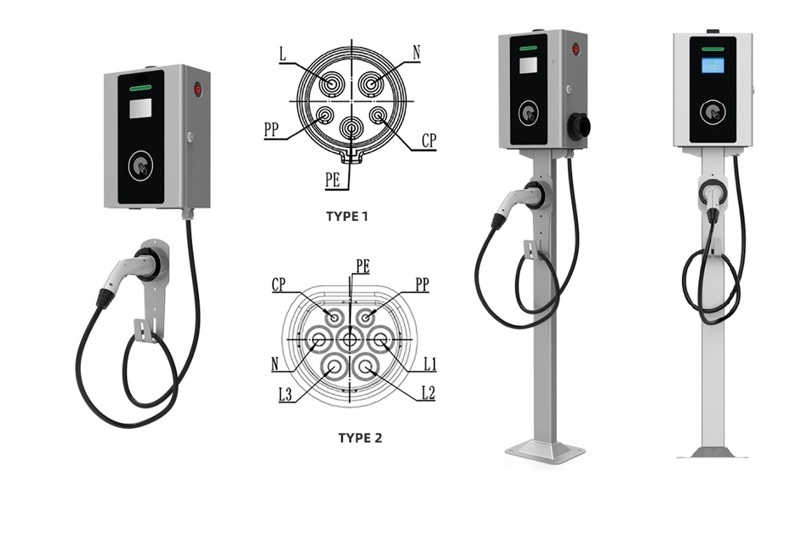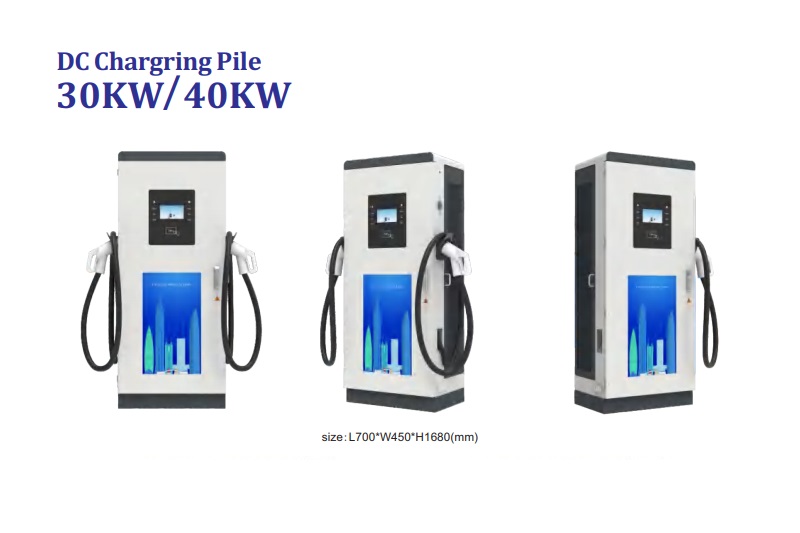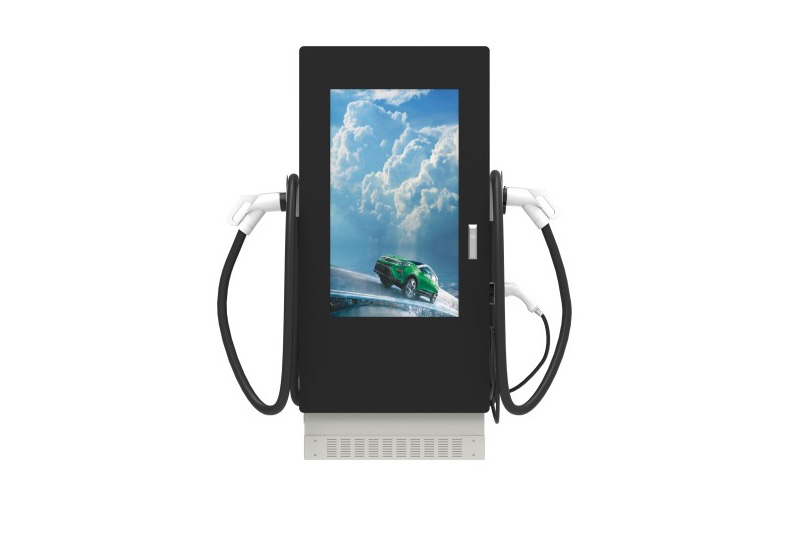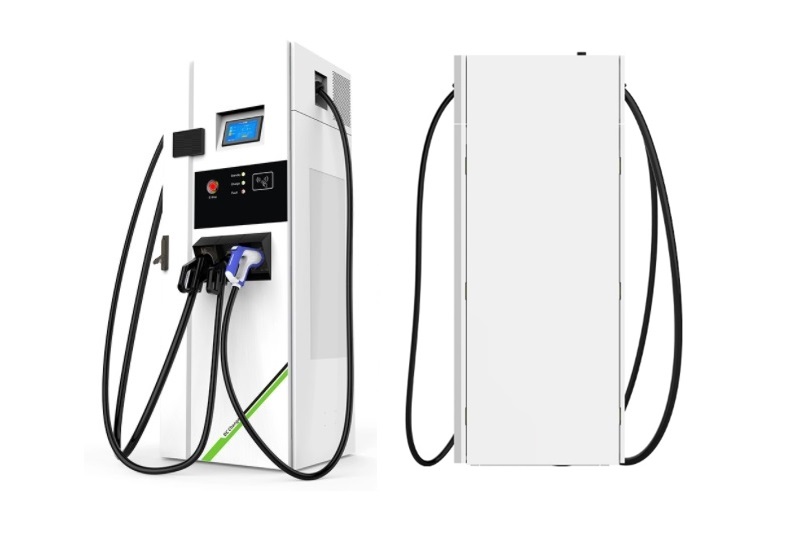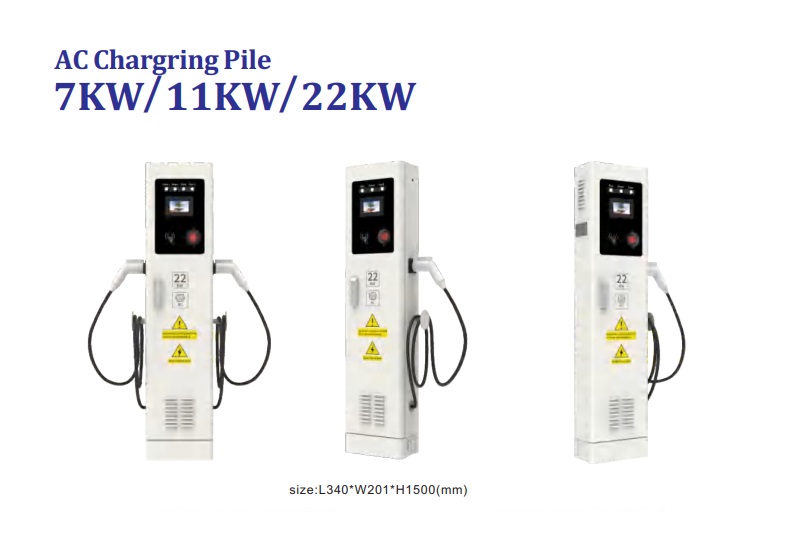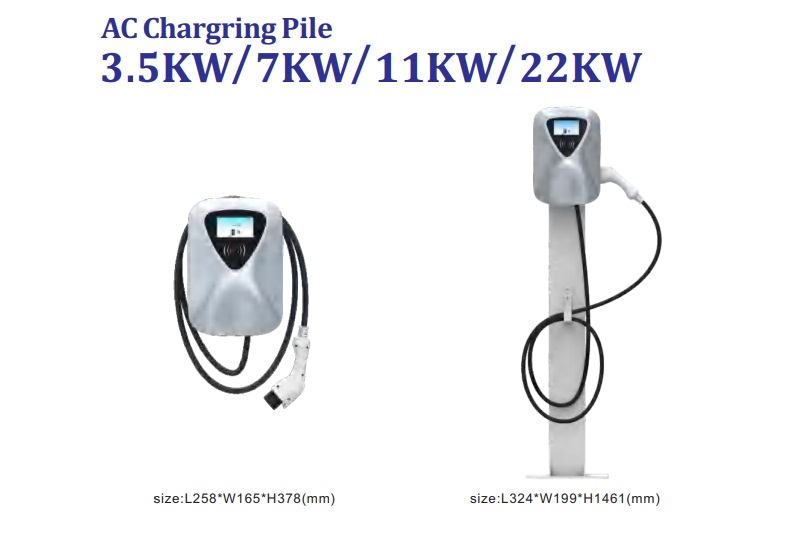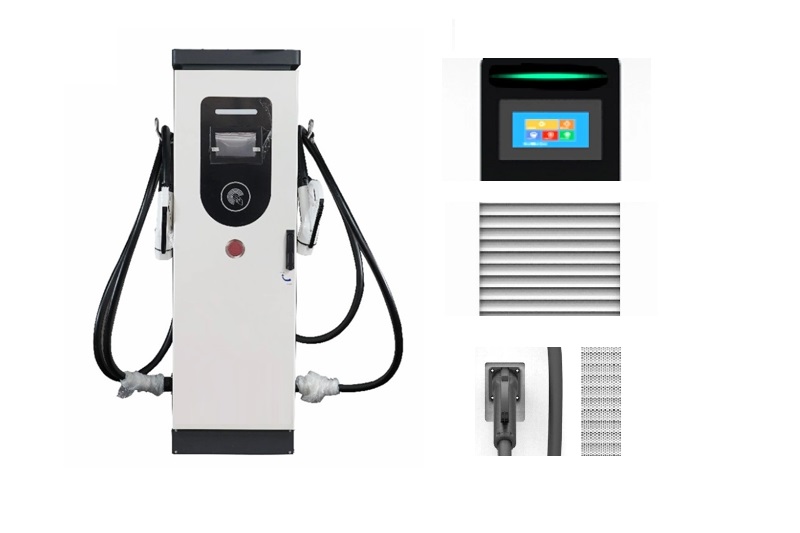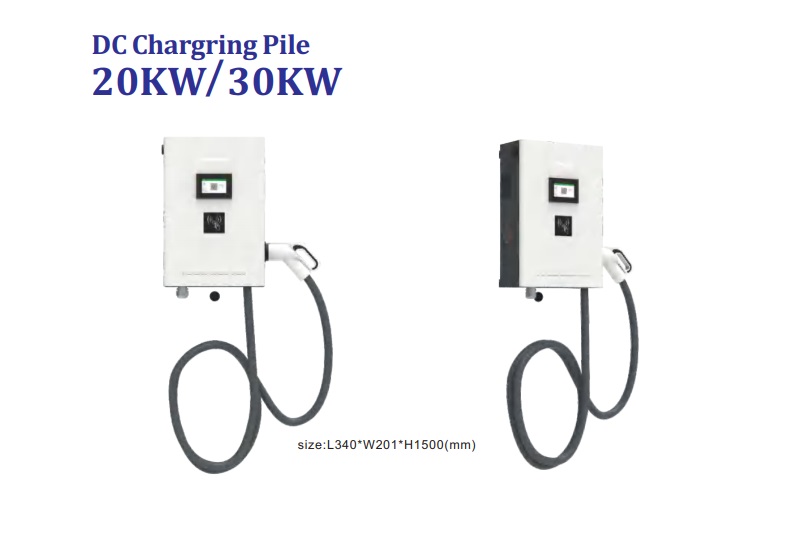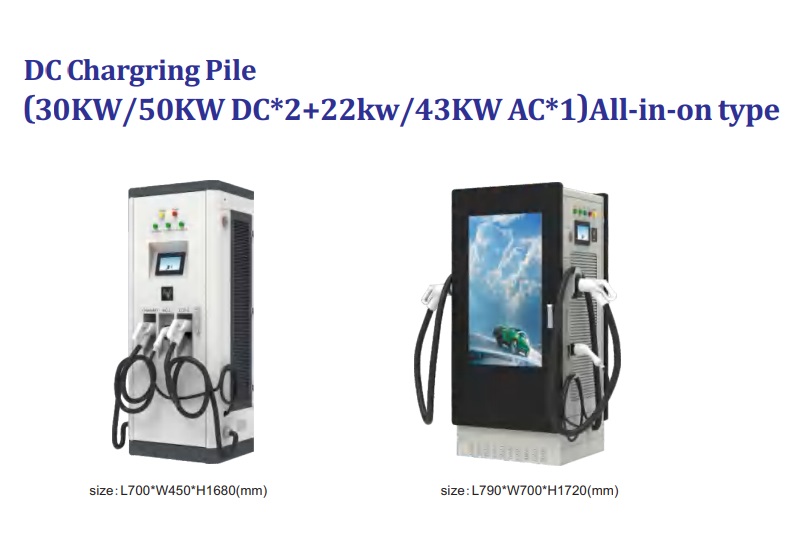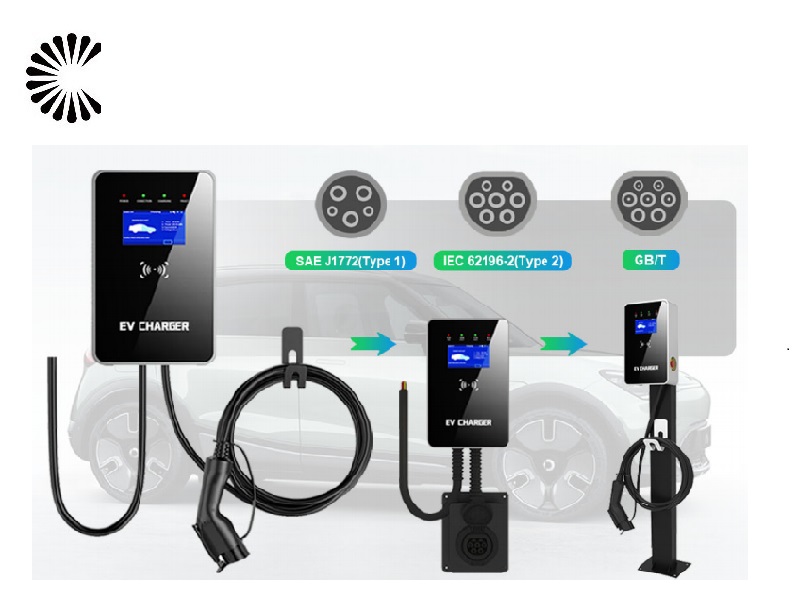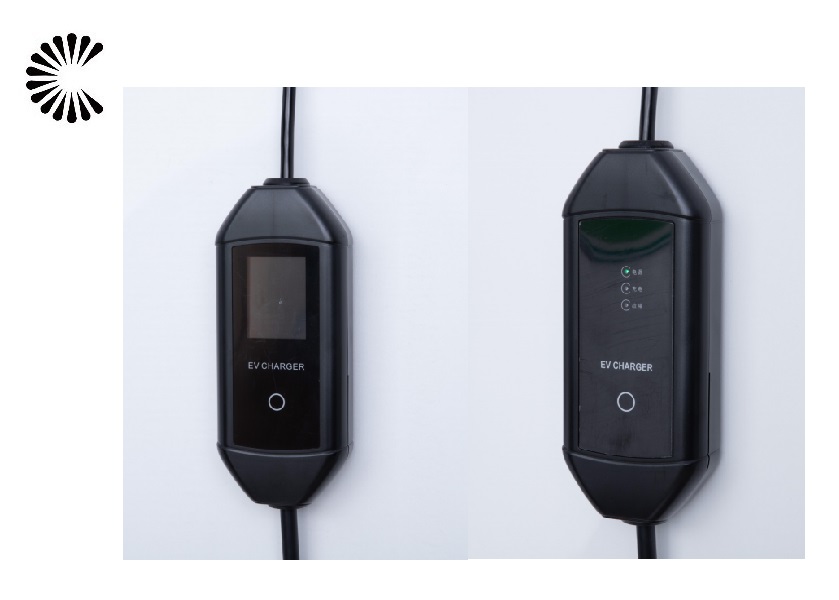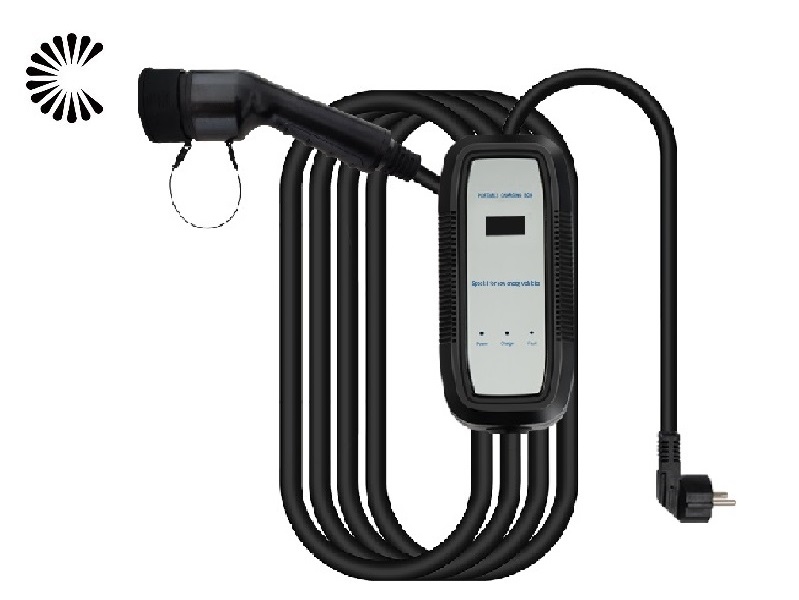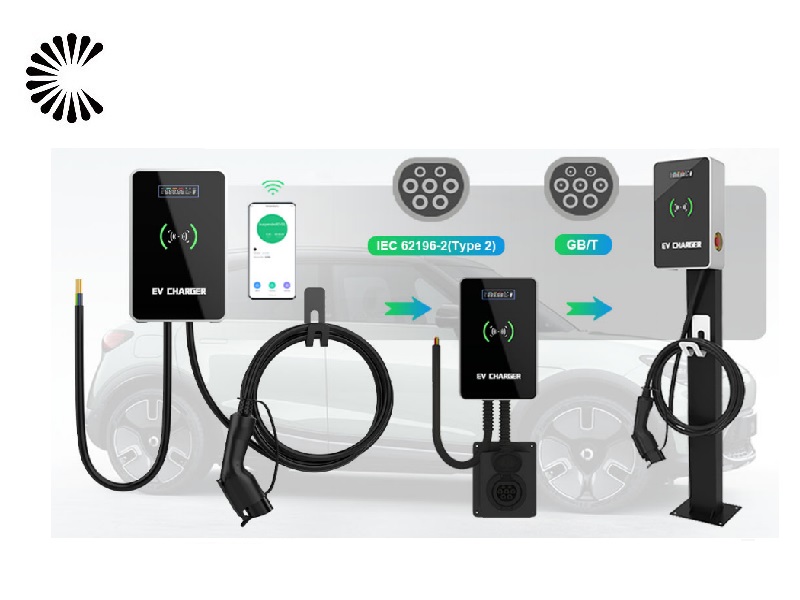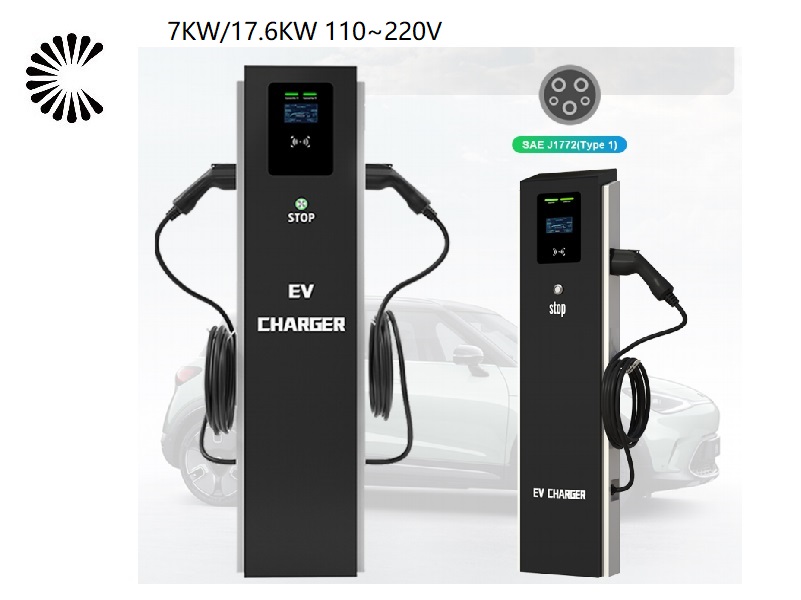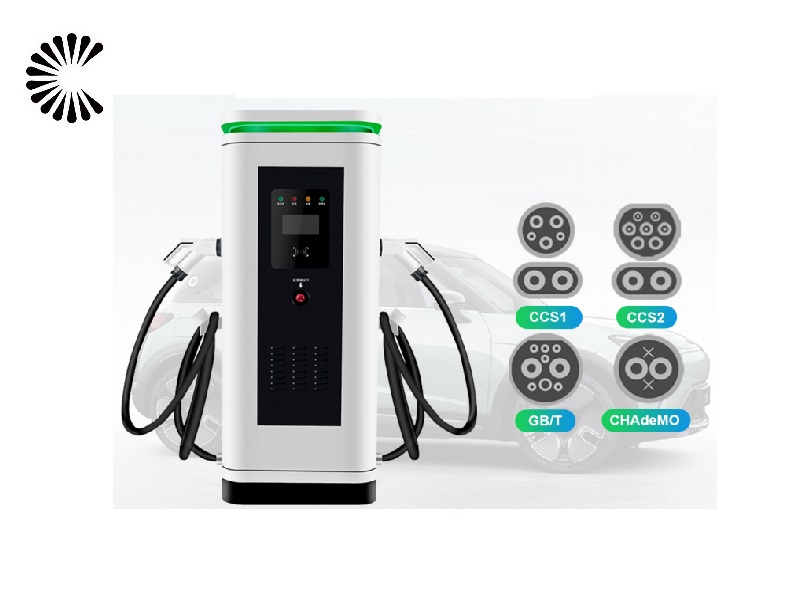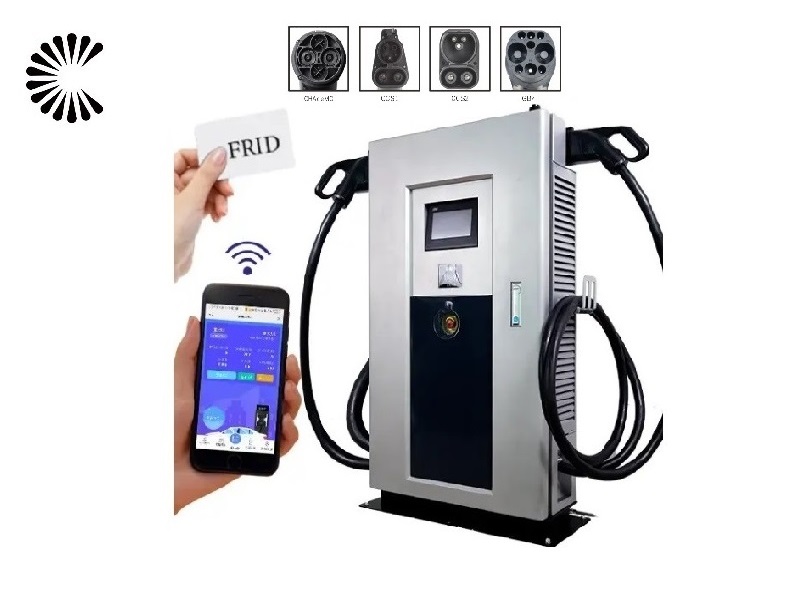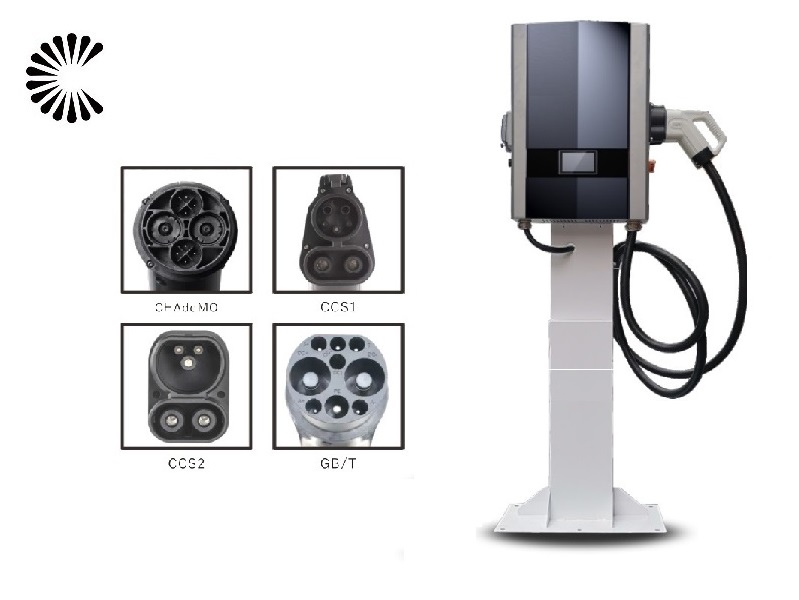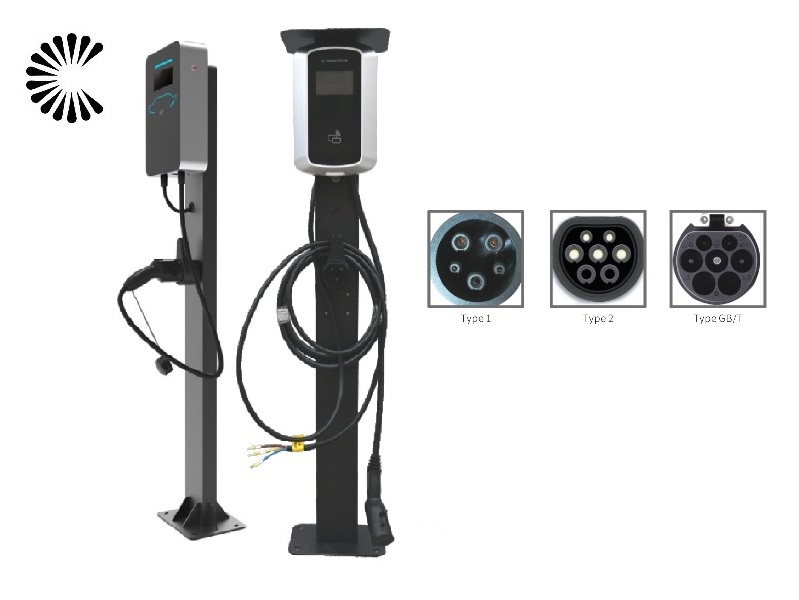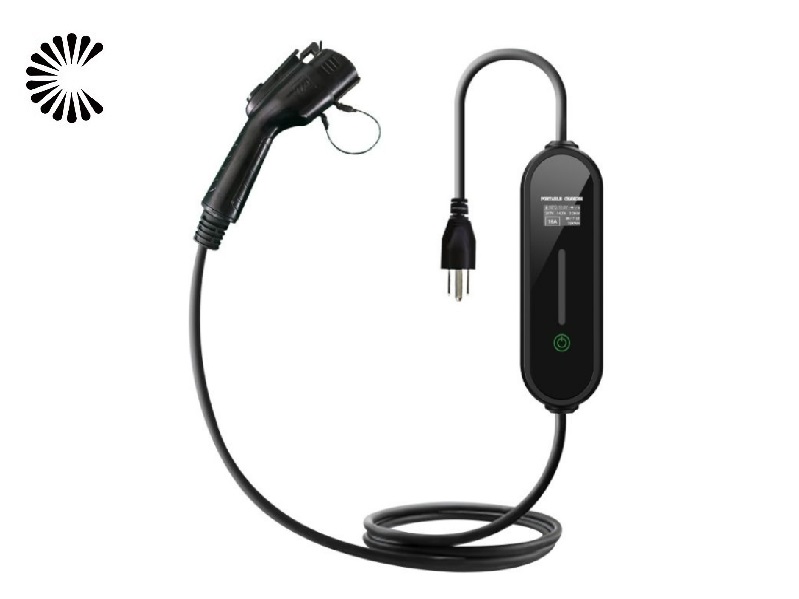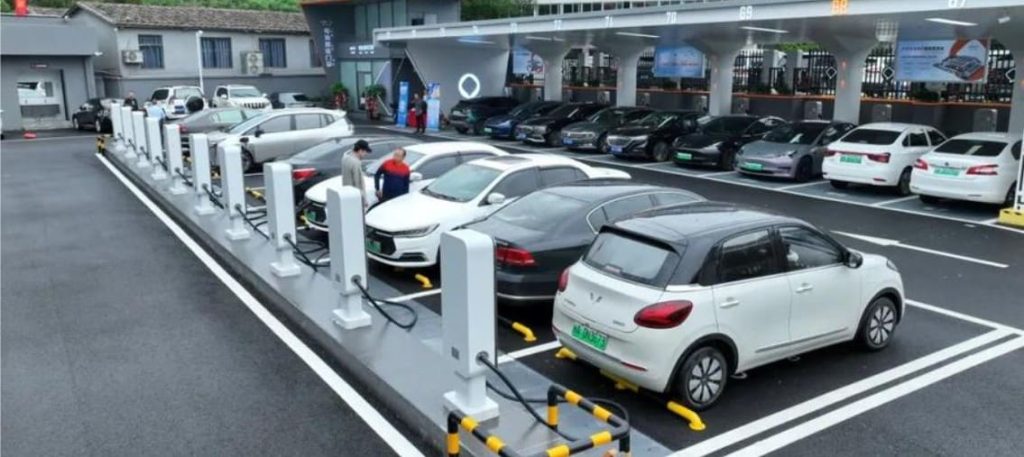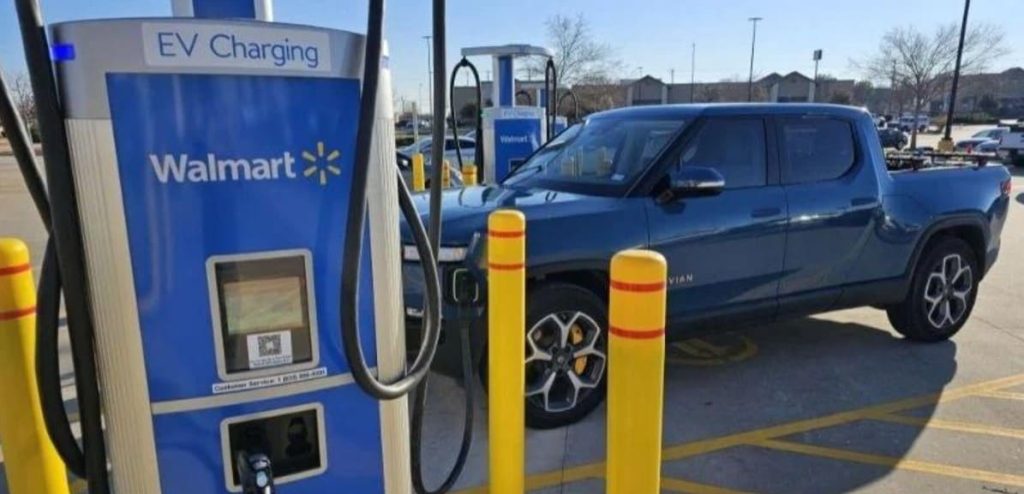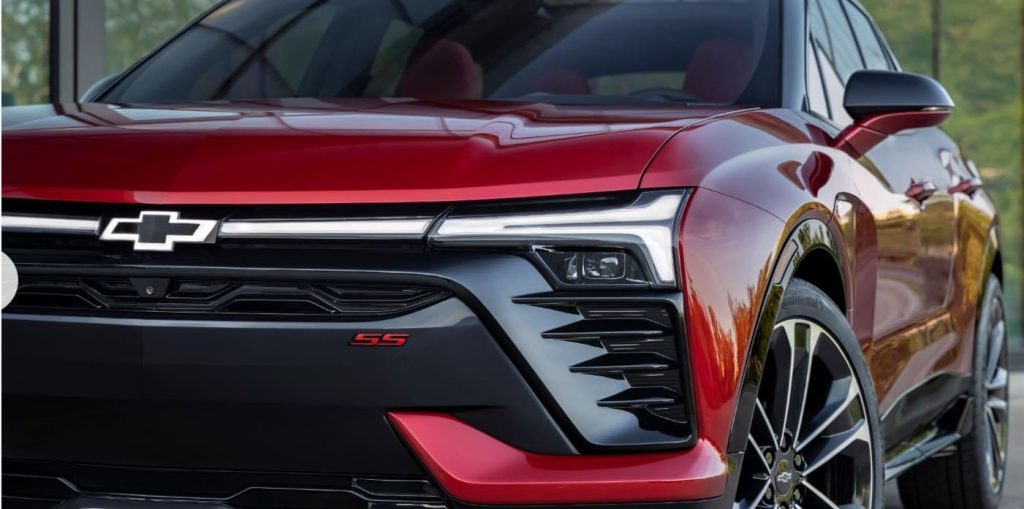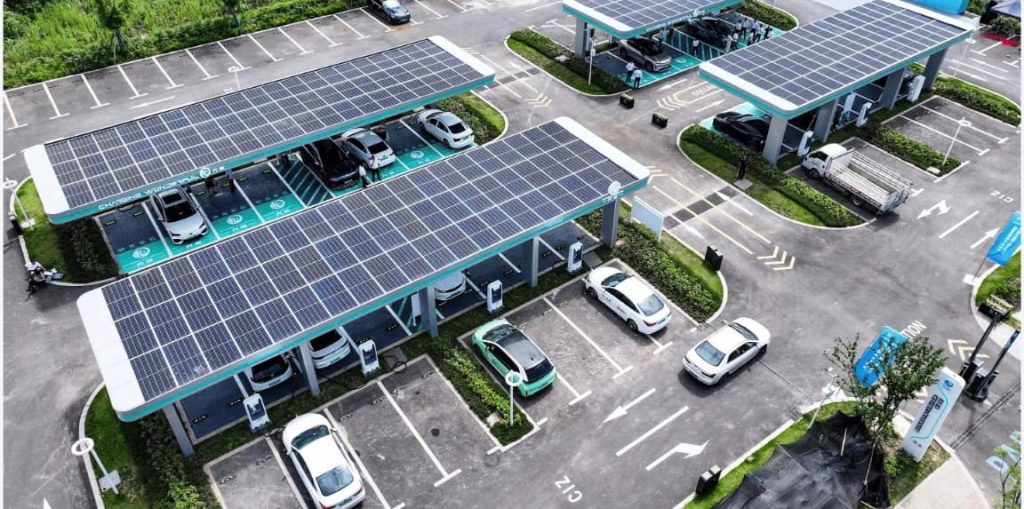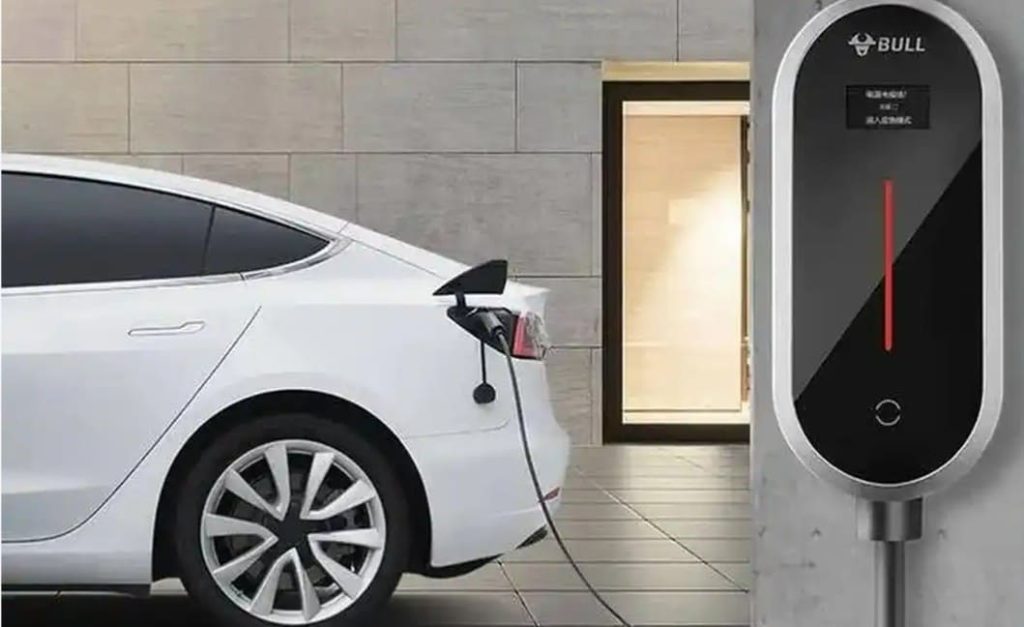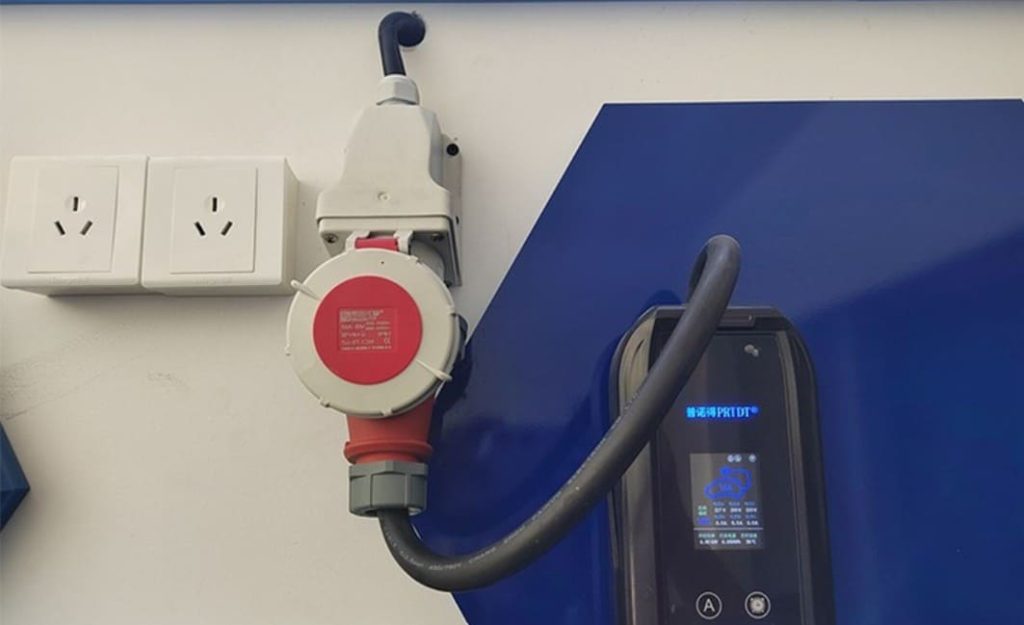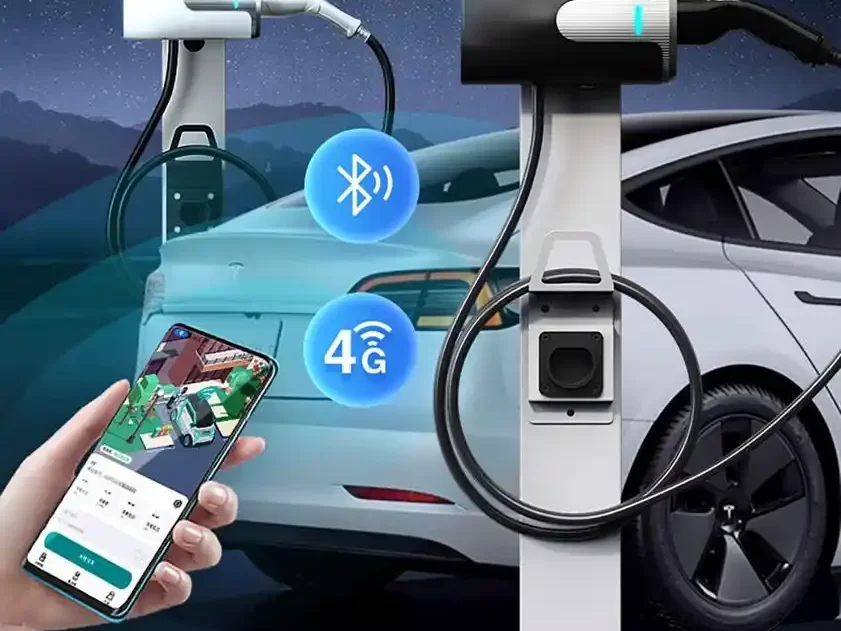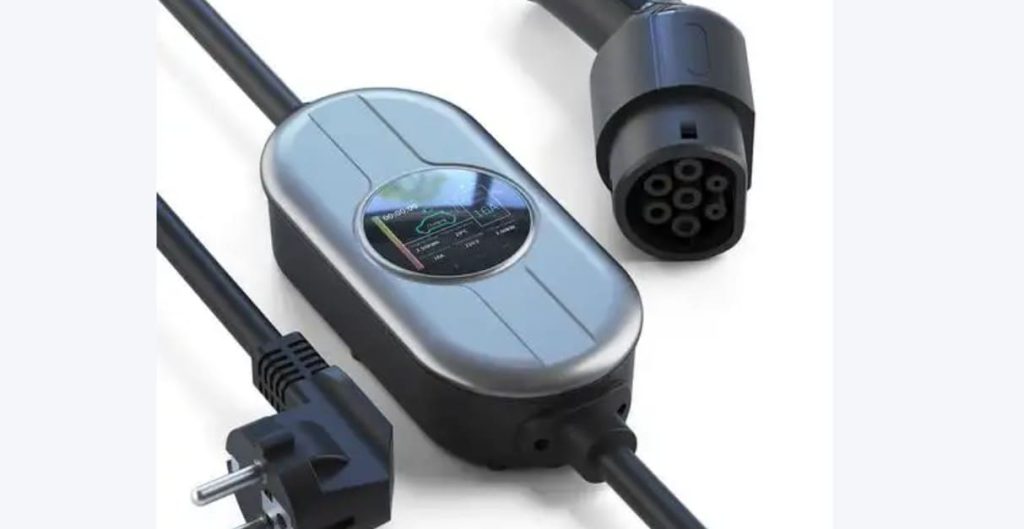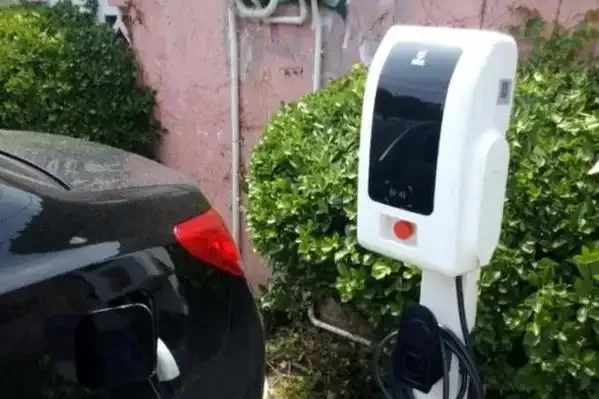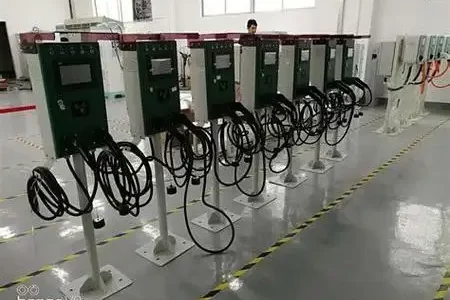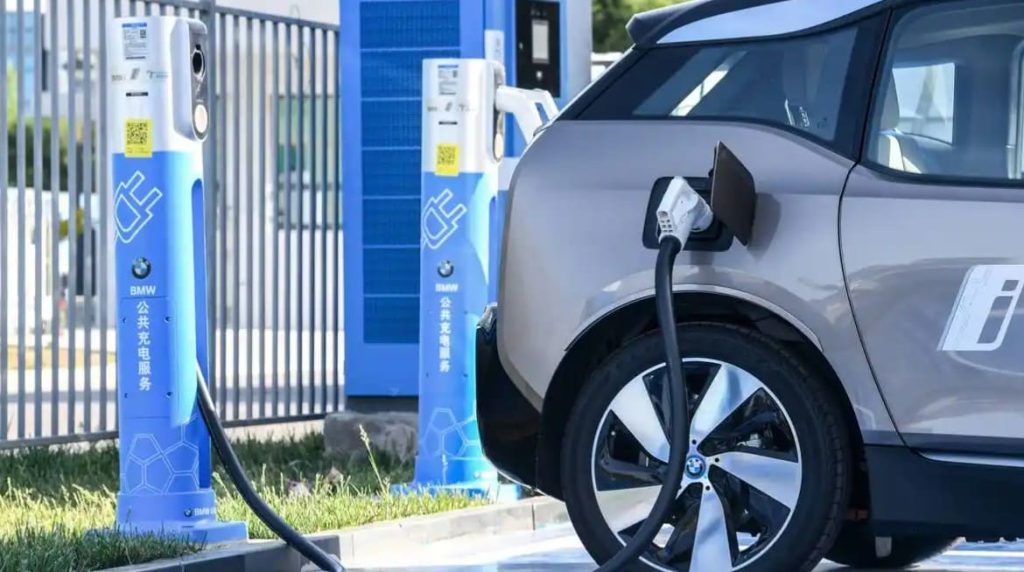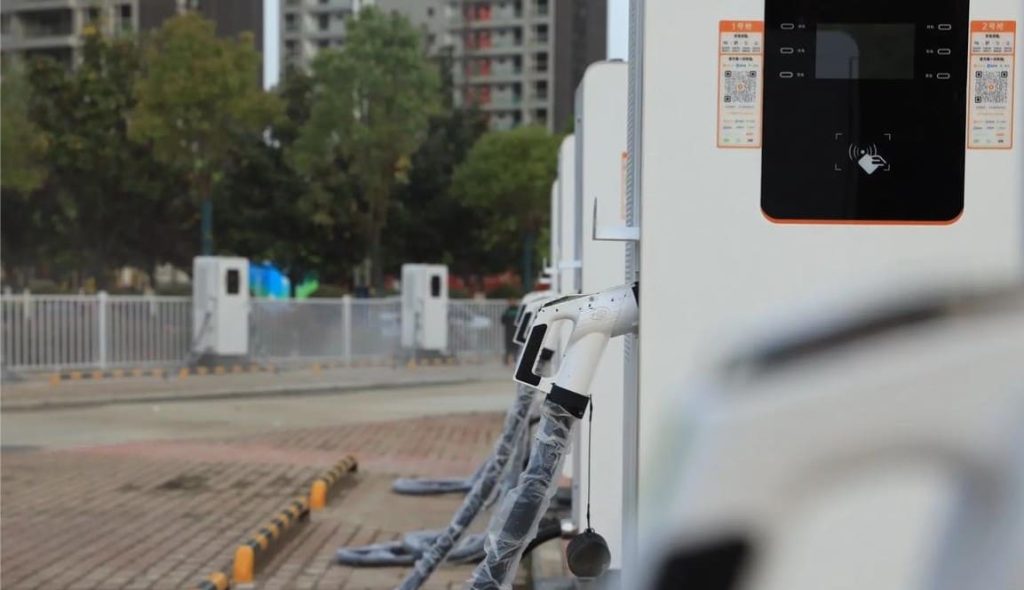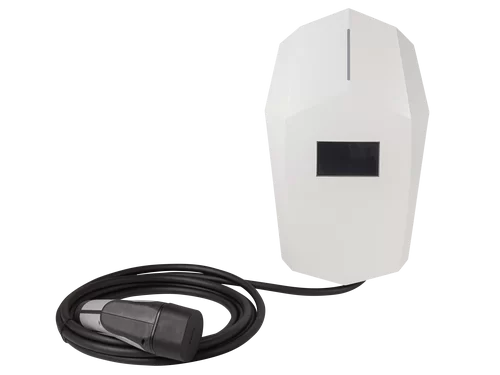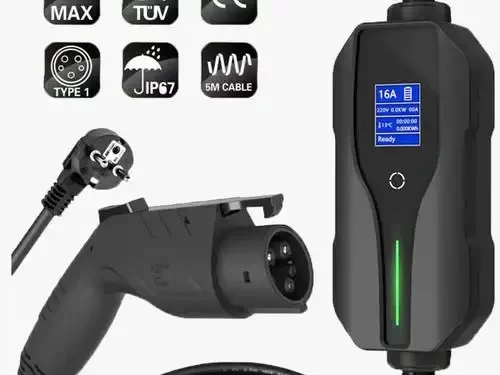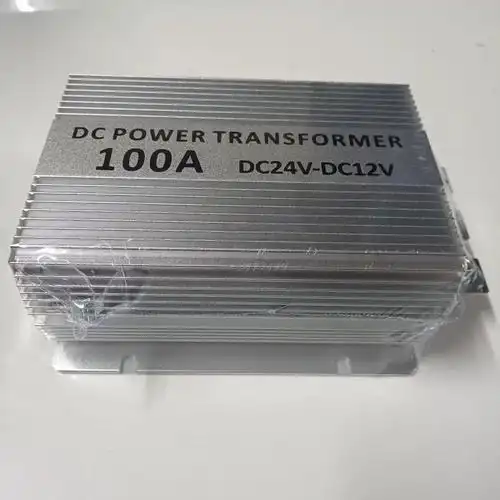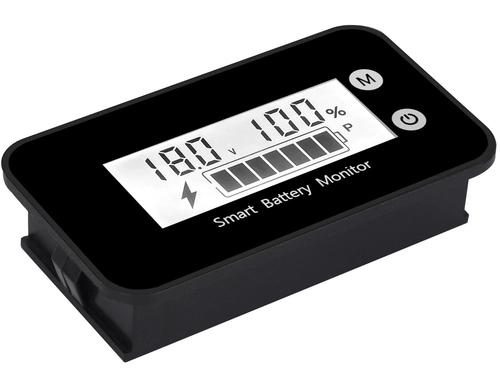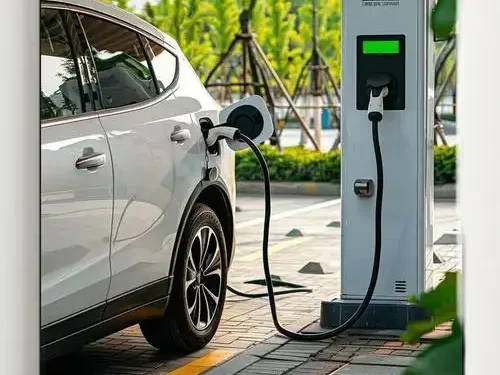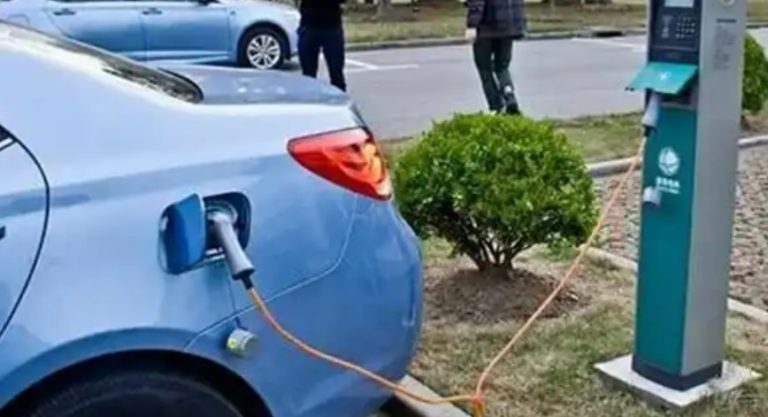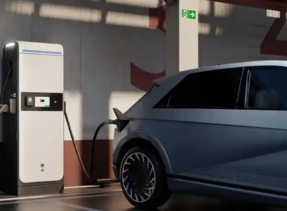FAQ for EV Charger

FAQ for EV Charger (Frequently Asked Questions) is a compilation of commonly asked questions and their corresponding answers related to electric vehicle (EV) charging equipment. This document aims to provide concise and helpful information to individuals seeking clarification about various aspects of EV chargers, their types, installation, usage, safety measures, and other relevant topics, cycle time, payment term, warranty information. The FAQ serves as a quick reference guide to address the most common queries and concerns that users may have when using or considering an EV charger for their electric vehicles.
FAQ About Production:
For over two decades, we have proudly served as a leading and reputable manufacturer specializing in innovative and sustainable energy applications. With our expertise and commitment to excellence, we have been at the forefront of the industry, delivering cutting-edge solutions to meet the ever-evolving needs of our customers. Our extensive experience in this field enables us to provide you with the highest quality products and services. We are dedicated to creating a positive impact on the environment through our sustainable energy solutions, and we look forward to continuing our journey of innovation and success in the years to come.
We are pleased to offer samples for products with ready parts in stock. Please note that while we provide the samples, customers are kindly requested to cover both the sample cost and the courier cost. This ensures that you can evaluate the product’s quality and suitability before making a purchase. If you have any further questions or require assistance, our dedicated team is ready to help. Your satisfaction is our priority, and we look forward to providing you with the best possible service.
We offer a comprehensive range of trade terms to cater to your specific needs. Our available trade terms include EXW (Ex Works), FOB (Free on Board), CFR (Cost and Freight), CIF (Cost, Insurance, and Freight), DAP (Delivered at Place), DDU (Delivered Duty Unpaid), and DDP (Delivered Duty Paid). Each option is designed to provide flexibility and convenience for our valued customers. If you have any questions or require further clarification regarding our trade terms, please don’t hesitate to reach out to our dedicated team. We are committed to providing you with a seamless and satisfying trading experience.
As a standard practice, our goods are carefully packed in brown cartons to ensure their safety during transit. However, if you hold a legally registered patent, we are delighted to accommodate your branding requirements. Upon receiving your authorization letters, we will be more than happy to pack the goods in your branded boxes. Your satisfaction is our priority, and we are committed to providing a customized packaging solution that aligns with your brand’s identity. Should you have any further questions or special requests regarding packaging, please feel free to share them with us. We look forward to meeting your packaging needs and delivering a seamless experience.
Absolutely!, we have 100% test before delivery. We ensuring the quality and reliability of our goods is our top priority. Before delivery, each product undergoes rigorous testing and quality checks to meet our high standards. We take pride in delivering only the best products to our valued customers. You can rest assured that your purchase will be thoroughly inspected and meet all necessary requirements before it reaches your hands. If you ever encounter any issues with our product, our dedicated customer support team is here to assist you promptly. Your satisfaction is essential to us, and we stand behind the quality of our goods wholeheartedly.
Yes, whether you provide us with samples or technical drawings, we have the capability to produce the desired product. Our skilled team can build custom molds and fixtures to meet your specific requirements. Rest assured, we are fully equipped to bring your vision to life with precision and quality. If you have any specific details or special requests, feel free to share them with us. We take pride in our ability to deliver exceptional results, and we are excited to work with you on this project.
For your convenience, our payment terms are as follows: 50% deposit via T/T (Telegraphic Transfer) before production begins, and the remaining 50% is due before delivery. To ensure transparency and your complete satisfaction, we will provide you with photos of the products and packaging once the order is ready. This way, you can review the items before making the final payment. If you have any queries or require further information about our payment process, our dedicated team is here to assist you. Your trust in us is essential, and we are committed to delivering a seamless and reliable payment experience.
Our products are covered by a comprehensive 12-month warranty period. During this time, we are dedicated to providing exceptional technical support and will replace any faulty parts at no cost to you. However, please note that while we take care of the replacement parts, customers are responsible for the delivery charges. Rest assured, we stand by the quality of our products and are committed to ensuring your satisfaction throughout the warranty period. If you encounter any issues or have any warranty-related inquiries, our dedicated team is ready to assist you promptly. Your trust in us is paramount, and we look forward to providing you with a reliable and hassle-free warranty service.
FAQ for EV Charger and Solar Panels
Charging your electric vehicle (EV) battery using solar panels offers a renewable and environmentally conscious method. To put it simply, solar panels function by transforming sunlight into electricity, which is then harnessed for charging your EV battery. These panels are commonly installed on the rooftops of residences or businesses and can be linked to support all your electrical appliances. They’re also integrated into the electrical grid, allowing surplus electricity to be sold back to the utility company via Smart Export Guarantee Tariffs. This setup essentially means that you can receive compensation for generating your own electricity at home – a rewarding advantage.
What’s even more appealing is the direct connection potential between your solar panels and EV charger. The electrons generated on your rooftop can flow directly into your car, making solar panels an excellent choice for minimizing your carbon footprint and achieving long-term cost savings by utilizing the energy you’ve generated.
Indeed, you can employ a regular EV charger in conjunction with solar panel charging, but a PV inverter unit is required to convert solar energy into electricity for initiating EV charging via solar panels. Most installations come with a standard inverter, though it’s essential to verify this. The inverter plays a key role in converting current from DC to AC, enabling the utilization of electricity from the panels to power your home and devices. EV home chargers operate on AC.
Certain EV chargers come equipped with this technology out of the box (such as the My Energi Zappi charger), enabling immediate charging. However, confirming this is crucial.
Furthermore, solar panels generate power during daylight hours, while many individuals charge their electric cars overnight while they sleep. Therefore, if you intend to charge your EV with solar power during nighttime, a battery storage system becomes necessary. This system stores the energy generated throughout the day and releases it when needed, such as at night for charging your EV.
How to Charge an EV at Home Using Solar Energy
Charging an electric vehicle (EV) with the power generated by your rooftop solar panels can be a relatively straightforward process, although it hinges on several factors. These factors include the size of your solar system, the time of day, and weather conditions. Achieving rapid EV charging solely through solar energy necessitates a sufficiently large solar setup and the assistance of a smart charger, which will be further elaborated upon later.
The ease of charging an EV using solar energy is influenced by the following variables:
Type of Charger Employed: Charging speeds can span from 2kW to 22kW.
Size of Your Solar System: Typical rooftop solar installations range from 5kW to 15kW.
State of the Vehicle Battery: How much charging is required?
Frequency and Distance of Travel: How often and how far do you drive?
While this might sound intricate, a solution is at hand. We’ve developed a complimentary solar and EV charging calculator that allows you to estimate the solar capacity needed for EV charging based on your driving habits and the type of charger used. If your driving patterns are infrequent, utilizing a simple plug-in (level 1) charger and a relatively modest 5kW solar setup can make charging an EV at home using solar energy quite straightforward. However, as detailed later, employing a more powerful level 2 charger for solar EV charging can present challenges, even with a considerably larger solar array. The issue arises because the solar system might not generate adequate power to sustain a level 2 charger operating at full capacity during cloudy or inclement weather. Fortunately, this is where intelligent EV chargers come into play, accompanied by various other solar charging alternatives explained below.
Understanding EV Battery Capacity (Kilowatt-hours or kWh)
Before delving deeper into the various charger types and charging rates, it’s crucial to grasp the concept of EV battery capacity and driving range. Battery capacity is measured in kilowatt-hours (kWh), and electric vehicles are available with a wide array of battery sizes, ranging from 24kWh to over 100kWh. Common EVs typically feature a battery capacity of around 65kWh, resulting in an approximate driving range of 350km, contingent upon driving conditions and efficiency. Each kWh of battery capacity yields approximately 5km to 8km of driving range. To put this into perspective, more lightweight and efficient EVs can utilize as little as 12kWh per 100km (1kWh = 8.2km), while larger high-performance EVs might consume 20kWh or more per 100km of driving (1kWh = 5km).
On average, an EV consumes around 16kWh per 100km (1.0kWh = 6.0km).
Driving at higher speeds curtails driving range due to heightened aerodynamic resistance. Nevertheless, most EVs incorporate regenerative braking, which recaptures a substantial portion of energy typically lost during braking to decelerate the vehicle. Regenerative braking proves especially beneficial in urban stop-and-go driving, enhancing efficiency while reducing brake dust and air pollution.
Yes,
Embracing solar panel charging for your EV is simply a logical step forward. Electric vehicles (EVs) are progressively becoming a more prevalent sight on American roads, a trend that intensifies with each passing year. Their affordability is on the rise, and the recent enactment of the Inflation Reduction Act allocates funds to establish the most extensive charging infrastructure ever witnessed in the nation.
Almost every major automobile manufacturer is incorporating an EV option into their lineup, a move that garners positive responses from consumers. In the span of just 2021, EV sales nearly experienced a twofold increase. The rationale behind this surge is multi-faceted: Not only does opting for an EV lead to substantial savings in fuel expenses compared to conventional gas-powered vehicles, but it also significantly diminishes one’s carbon footprint. The act of acquiring an EV initiates a virtuous cycle, lessening financial burden while simultaneously contributing to the fight against the looming challenge of climate change.
Nevertheless, the majority of individuals are unlikely to heavily rely on public charging stations, reserving their use mainly for travel purposes. A significant portion of EV owners intends to charge their vehicles during the night, ensuring they are fully charged and ready for daily use. This naturally gives rise to queries such as: What is the energy consumption of electric vehicles? Will adapting my home’s electrical infrastructure for nightly charging necessitate an overhaul? If modifications are required, what is the most efficient and budget-friendly approach?
Within the subsequent article, we will delve into the realm of electric vehicle electricity consumption, exploring methods for its calculation. Moreover, we will elucidate how a solar-powered EV charging station can serve as an optimal means to power up your vehicle.
Absolutely, as long as you plan ahead. This approach can actually lead to substantial savings compared to using grid power for charging. According to a survey by SolarReviews, the annual cost of charging your electric vehicle (EV) using solar power at your home is typically just $415, while it amounts to $662 using grid power and $1,058 on a public EV charger. In comparison, filling up a gas car’s tank annually can cost up to $1,260—this was even before the recent surge in fuel prices across most parts of the country.
Solar EV charging setups usually involve rooftop solar panels, microinverters, and a Level 2 EV charger. Not only is this the most environmentally friendly method to charge your EV, but over the typical lifespan of a solar system (around 25 years), calculations suggest it could save you approximately $16,250 over that time if you charge your EV at home—and that’s considering just one EV. If you happen to own two or more EVs simultaneously, these savings could double or even triple.
In most scenarios, to power a car throughout a year, you’ll need an additional 4,666 kWh of energy. With each kilowatt (kW) of solar capacity on your roof, you’ll generate approximately 4 kWh per day or roughly 1,500 kWh per year. Consequently, to charge a standard EV, you’d need to expand your system by about 3.1 kW, which translates to adding eight to twelve extra solar panels compared to what’s required to power your home.
If you’ve already made the move to solar energy, your existing system might actually be generating surplus energy. In such cases, you might not need to expand your current setup. Regularly reviewing your monthly electric bills will help you determine whether an expansion is necessary. Alternatively, considering the addition of a battery (discussed further here) is another avenue for charging your EV using your existing solar system.
Yes. Traditionally, we’ve been at the mercy of fluctuating gas prices, unable to control much beyond our driving habits and vehicle efficiency. But the landscape has changed. Embracing solar power allows us to control the actual cost of the fuel itself.
The U.S. Department of Transportation reveals that the average driver covers around 13,476 miles each year, roughly 37 miles per day. When you charge your electric vehicle (EV) using solar panels, consider a Tesla Model 3 driver achieving 3.33 miles per kWh. This choice could save you approximately $1,500 annually compared to filling a gas car (which gets 30 miles per gallon) at $4 per gallon.
Charging an EV through solar panels is also more cost-effective than utilizing grid energy or public EV chargers. Let’s break down the expenses for the Tesla Model 3 charged using solar, grid power, public chargers, and fueling a 30 mpg combustion car:
Charging Method Cost per Year
Model 3 on Home Solar $323.75
Model 3 on Grid Energy $671.77
Model 3 on Public Charger $1,618.40
30 MPG Combustion Car $1,777.04
To provide some context, charging an EV with solar power:
Is 51% cheaper than grid charging
Is 80% cheaper than public chargers
Is 81% cheaper than fueling a 30 mpg car at $4 per gallon
Keep in mind, these figures vary based on car models, driving distance, fuel prices, and the time frame. What remains constant is the cost of home solar energy. Once you install solar panels through solar.com, your EV charging costs stabilize at around 6 to 8 cents per kWh for the system’s lifespan.
This is in stark contrast to grid energy or gasoline costs. Since 1990, grid energy has annually risen by 1.98% on average, as per the U.S. Energy Information Administration (EIA). Similarly, gas prices have increased by an average of 3.89% per gallon over the last 87 years.
Considering a 25-year life span of a home solar system:
Over this period, charging an EV with solar panels saves:
Over $14,000 compared to grid energy
Nearly $70,000 compared to fueling a 30 mpg gas car
In a time of inflation, home solar provides a vital safeguard against rising energy and EV charging expenses.
Beyond cost, there’s a green advantage to home solar charging. While it’s true we can’t always control the energy source, home solar almost entirely eliminates driving emissions. The common argument against EV charging stems from the origin of the energy; if the local grid or charging stations use fossil fuels, EVs might too.
The U.S. Energy Information Administration estimates that renewables will constitute 24% of U.S. electricity in 2023. The silver lining is that EVs can thrive on clean energy, a trend that will grow with increasing renewables.
However, the same cannot be said for internal combustion engine vehicles (ICE). They consistently emit greenhouse gases, polluting the air and contributing to climate change.
As of now, home solar charging is the sole reliable method to power your EV with clean energy, cutting vehicle emissions. On top of this environmental advantage, charging at home is also convenient.
One of the main concerns about EV ownership is range anxiety—fear of being stranded due to limited charging stations. Imagine having your own solar-powered charging station at home. Picture waking up to a fully charged vehicle each day without enduring public charging queues or gas station visits. This setup not only offers convenience but also the lowest possible charging costs by integrating solar power.
In summary, solar-powered EV charging offers affordability, sustainability, and convenience. It’s a perfect match for renewable energy enthusiasts. To explore how much you could save by using solar panels to charge your EV, dive into the calculations.
To create the perfect combination for EV solar charging, you’ll definitely need one key ingredient: solar panels.
Whether you’re already equipped with a home solar system or not, adding solar panels to power your EV is typically a necessary step—just the number of panels required varies. The great news is that the Inflation Reduction Act (IRA) has elevated the solar tax credit to 30% for the next decade, significantly reducing the cost.
Let’s explore two common scenarios when it comes to EV-solar integration.
Scenario 1: Acquiring an EV Before Solar Panels
If you decide to get an EV before installing solar panels, fantastic! Your immediate task is setting up an EV charging station for convenient at-home charging using grid energy (which is the second most cost-effective option after home solar).
In this situation, it’s advisable to take a few months to understand your EV’s battery consumption and its impact on your energy bill. Gathering reliable data will empower solar experts to accurately assess the solar capacity you require to offset your energy usage.
Once you’ve established your baseline and are ready to slash your EV charging expenses, head over to solar.com for precise quotes on a solar system.
Scenario 2: Adding an EV to an Existing Solar Setup
If you’re already enjoying the benefits of solar power before getting an EV, that’s great! Similar to the previous scenario, your next step involves installing an EV charging station to enable home charging powered by solar energy.
You’ll likely discover that without additional panels to account for your EV’s consumption, your solar system might not fully cover your electricity usage, leading to potential yearly electricity bills.
There are two effective solutions:
Collect a couple of months’ worth of data to determine the exact solar capacity required to meet your EV charging needs.
Collaborate with a solar.com Energy Advisor to estimate the additional panels necessary to offset your EV usage.
Now, let’s crunch some numbers to get an approximate idea of the number of solar panels needed for EV charging.
The specific number of solar panels required to charge an EV using solar energy varies based on factors such as panel type, EV battery size, driving distance, and sunlight availability. However, as a general guideline, it typically takes anywhere from 5 to 12 solar panels to fully charge an EV through solar power alone (potentially fewer if you work from home).
Let’s illustrate this with the example of the Nissan LEAF SV Plus, which boasts a 62 kWh battery and a 215-mile range, making it eligible for the $7,500 Clean Vehicle credit.
Step 1: Calculate Output per Panel
To begin, we need to determine the energy output of an individual solar panel. This output relies on factors like the panel’s material, size, efficiency, age, and more.
Assuming 5 hours of daily sunlight, a standard 250-watt solar panel typically generates around 37.5 kWh of AC energy per month, equating to 1.25 kWh per day. Keep in mind that this is an estimate, as numerous variables influence production.
5 hours of sunlight daily × 250 watts = 1,250 watt-hours or 1.25 kWh per day
Step 2: Calculate EV Battery Usage
Now, let’s compute the solar output required to charge your EV battery.
Given an average daily driving distance of 37 miles and the LEAF’s efficiency of 3.7 miles per kWh, you’ll need 10 kWh of electricity daily.
You can adjust this calculation based on your driving patterns and EV efficiency.
37 miles daily / 3.7 miles per kWh = 10 kWh of electricity daily
Step 3: Divide EV Usage by Solar Panel Output
If one 250-watt solar panel generates approximately 1.25 kWh of AC electricity per day, and you require 10 kWh daily for your EV, you’d need eight 250-watt panels to fully charge your Nissan LEAF EV using solar energy.
10 kWh of EV usage / 1.25 kWh production per panel = Eight 250-watt panels
Should you opt for premium 400-watt solar panels producing 2 kWh daily, only 5 panels would suffice in this scenario. Conversely, if you’re exposed to only 4 hours of sunlight each day, you might require closer to 12 panels at 250 watts each to charge your EV.
Various scenarios exist, and it’s true that the calculations can become quite intricate. If you’re seeking clarity tailored to your situation, consulting with an energy advisor is advisable to address your specific requirements.
Let’s delve into the realm of solar energy output. Suppose you possess a 400 Watt photovoltaic (PV) panel and reside in an area receiving 4 hours of sunlight per day during October:
400W (output) x 4 hours = 1,600 Watt-hours per day
In essence, a single 400W solar panel exposed to 4 hours of daily sunlight during autumn can generate approximately 1.6 kWh in a day (1 kWh equals 1,000 Watt).
This trick can be applied to any other panel, providing you with pertinent figures that are relevant to your context.
Now equipped with knowledge about the energy output of a single PV panel, you can gauge the energy requirement of your electric car for charging. Remember, it’s not always necessary to recharge your EV fully from zero every time – or at least not on every occasion.
For instance, if your vehicle boasts a 40 kWh battery (like the Renault Mégane E-TECH Electric EV40) and you aim to replenish just ¼ of its capacity by day’s end, you’ll need around six solar panels producing 1.6 kWh daily.
40 kWh / 1.6 kWh ≈ 6 panels
If you’re also utilizing the panels to power other household appliances, it’s crucial to ensure you have enough energy to go around. Unless you’re comfortable with your refrigerator taking a hiatus for a few hours while your car charges. You can address this situation by either:
Opting for PV panels with greater capacity
Increasing the quantity of panels installed
Selecting higher-efficiency PV panels is a wise move, as this approach can save space.
Solar panels come in three primary types:
Monocrystalline (highest efficiency)
Polycrystalline (efficient)
Amorphous (least efficient)
The general consensus is that operating an electric car is considerably more cost-effective than using a gasoline-powered vehicle, whether powered by solar energy or not.
When delving into harnessing renewable energy for charging, the primary investment revolves around procuring the solar panels themselves. For instance, a 300W PV panel’s cost can range from EUR 150 to EUR 400, with the expense increasing in tandem with the panel’s capacity.
It’s important to note that along with the solar panels, you’ll require a charge controller, solar inverter, and possibly an additional battery if you wish to store your generated energy (which is usually a wise choice). However, the upfront costs associated with these components can be relatively high. Investing in all these elements solely for the purpose of charging your electric car might not be the most financially viable solution.
A more practical approach involves acquiring an adequate number of panels to power various other household devices as well. Think along the lines of a washing machine, oven, heating system, dishwasher, and more. In such cases, the decision to invest in supplementary units to harness PV panel energy becomes entirely rational.
As a benchmark, the average household typically consumes around 1,500 kilowatt-hours annually. For a family of four, this requirement escalates to approximately 4,500 kWh. If you wish to tailor these figures to your specific circumstances, it’s advisable to evaluate the energy consumption of the appliances you regularly employ at home. For instance, a modern TV draws between 50 and 60 watts per hour, while a washing machine utilizes around 800 to 1,000 watts (approximately 1 kWh).
Yes,
The appeal of solar power is easily grasped. Unlike fossil fuels, it’s abundantly available worldwide and comes at no cost. Consequently, it’s no surprise that global solar capacity surged twofold between 2018 and 2022, reaching an impressive one Terawatt (TW). Projections indicate that by 2025, this global solar capacity will climb to 2.3 TW – for context, that’s twice the energy output of France and Germany combined.
This surge is partly attributed to individuals and households opting for small-scale solar panel installations atop their roofs. Their objective is to foster independence from the power grid, curtail energy expenses, and reduce their ecological footprint.
Furthermore, in certain regions, solar energy is a means to provide electricity to individuals who were previously deprived of it. In Sub-Saharan Africa and South Asia, this could play a pivotal role in extending energy access to millions of people.
The Integration of Solar Energy into Home EV Charging
Although solar panels alone yield substantial cost savings, coupling them with an electric vehicle (EV) can magnify their advantages. Instead of relying solely on grid electricity, solar panels can generate power that’s directed towards charging your EV. This approach trims costs and guarantees that the electricity powering your car is sustainably produced.
While a conventional home solar setup may not suffice to fully power your EV, it can certainly contribute a portion of the electricity needed for your vehicle. For instance, on average in Western Europe, a solar panel can generate approximately 1 kWh of electricity per day. Consequently, a set of a dozen panels could produce around 10 kWh of electricity daily (varies by location).
This quantity is ample to offer a Standard Range Tesla Model 3 approximately 42 km of range, which exceeds the typical daily driving distance in the EU.
Smart EV Charging Station for Solar-Powered EV Charging: Necessity or Not?
You might be wondering whether you can directly employ the energy generated by your solar panels to charge your EV. The answer isn’t as straightforward as merely plugging your EV charging station into solar panels.
The challenge lies in the uneven and variable nature of power produced by photovoltaic panels. This energy cannot be directly channeled into an EV’s battery (or the power network).
Regardless, any solar panel installation requires an inverter to convert electricity, allowing it to be integrated into the home’s power network for appliance usage or EV charging.
Although a smart charging station isn’t obligatory for utilizing solar panel-generated electricity, it significantly aids in managing the charging process. This technology facilitates controlling when and how much solar-generated electricity is employed to charge the EV.
For example, with a smart charging station, you can opt to charge your EV exclusively when your solar panels are actively producing electricity. Collaborating with an Energy Management System enables forecasting the optimal charging times, ensuring your self-generated energy is employed sustainably. This approach eliminates the need to purchase electricity from the grid.
A significant challenge posed by solar power, particularly when utilized for EV charging, lies in the temporal discrepancy between energy production and consumption. Solar energy is predominantly generated during daylight hours when the sun is at its peak. However, most individuals tend to charge their EVs during the night, after returning from work.
A solution to this issue is to store the daytime-generated energy and utilize it during peak demand periods. This can be achieved by integrating a storage battery with your solar panels. This way, you can harness solar energy during the day, store it in the battery, and subsequently use it to power your home during nighttime or low solar output periods.
Of course, the process of acquiring a storage battery and integrating it with your home’s electrical system comes with associated costs. Excluding installation expenses, a lithium-ion storage battery can range between $7,000 and $14,000. In some locations, a more economical option could involve selling excess solar-generated electricity back to your utility company or energy provider. This allows you to send surplus power back into the grid when you’re not utilizing electricity – for instance, during your workday – and receive compensation for it.
Net Metering: An Overview
Typically, a bidirectional electricity meter records the kilowatt-hours (kWh) directed into the grid versus the amount drawn from it by the household. For each kWh supplied to the grid, you earn a predetermined credit that is subtracted from your overall energy bill.
This ability to generate your own energy and sell it back to the grid is referred to as net metering. While the specifics differ among countries and utility providers, generally, net metering permits homeowners to receive payment for contributing renewable energy to the grid.
This approach is an effective means of reducing electricity costs, even if you can’t utilize the energy generated by your solar panels at the time of production. For example, even if you charge your EV during the night, you can still benefit from reduced electricity expenses by selling your solar panel’s daytime output to the grid and deducting it from your overall consumption.
It’s important to note that not all countries, states, and utility providers allow net metering. Presently, many US states and numerous EU countries permit net metering. However, some countries and utilities have limited the practice to balance supply and demand.
Solar-Powered Vehicle-to-Home Integration
Beyond storage batteries and net metering, a promising future technology is emerging: Vehicle-to-Home (V2H), a subset of Vehicle-to-Grid (V2G) systems. This concept empowers an electric vehicle to function as a storage battery, storing energy for later use.
With V2H, your EV can serve as an energy reservoir. It charges during optimal solar production periods and utilizes the stored energy to power your home when solar output is limited.
Currently, V2H and V2G technologies are in their infancy and haven’t achieved widespread deployment. Nonetheless, they hold potential for our power grids by unlocking larger-scale battery storage and facilitating greater access to renewable energy throughout the day.
If you’re aiming to set up a solar PV system specifically for EV charging, it’s important to consider that larger batteries require more solar panels. To ensure the optimal size and type of system for your requirements, it’s advisable to consult a professional. On average, an EV can be powered by a solar panel system consisting of approximately 8-12 panels, but it’s recommended to confirm this with your solar panel installer.
If space is a limitation for installing solar panels but you still want to charge your EV with environmentally friendly energy, there’s a solution. Opting for a green EV tariff like those offered by Octopus Energy ensures that all your electricity comes from renewable energy sources like solar and wind farms. By driving an electric car and charging it in this sustainable manner, you’re actively contributing to the environment. For more details about charging your EV with solar energy, don’t hesitate to get in touch with us today.
Deploying solar photovoltaic (PV) systems can entail considerable costs during installation. The initial investment involved in procuring and setting up a solar PV system can be substantial. Fortunately, numerous countries provide substantial financial incentives for residential solar PV installations. It’s advisable to ascertain whether you qualify for grants or subsidies that can help offset the expenses.
Solar panel charging is reliant on sunny conditions. Solar PV systems exclusively generate electricity in the presence of sunlight. Consequently, if you reside in an area with frequent cloud cover, solar power might not be the optimal choice for charging your electric vehicle (EV). It’s worth noting that solar PV systems can still produce some electricity on overcast days. However, during wintertime, supplementing your solar PV system with grid power might be necessary.
Solar panel charging can be comparatively time-consuming versus grid charging. It’s accurate that using solar power for EV charging requires more time than grid charging. However, if you have a solar PV system installed, you can charge your EV overnight while you sleep, ensuring it’s ready for use the next day.
In a holistic assessment, harnessing solar panels for EV charging offers a multitude of benefits. Solar energy is both renewable and sustainable, typically costing less than grid electricity, and it’s an emissions-free source of power. Therefore, if contemplating a transition to solar panel charging for your EV, delving deeper into this option is undoubtedly worthwhile.
Determining the time it takes to charge an electric vehicle (EV) at home using solar energy is a nuanced question, contingent upon factors such as EV battery capacity and solar system size. In general, a typical sunny day can suffice to charge an average EV from 20% to 80% using a standard 6.5kW rooftop solar system. Naturally, greater solar capacity yields better results for EV charging from home, particularly in regions with colder and less sunny climates. Unless your daily driving exceeds 80km, EV charging via rooftop solar is usually uncomplicated with a standard solar setup, provided you are present at home during daylight hours. You can explore EV charging simulations using our solar and EV charging calculator.
Estimated Daily EV Charging Durations with a Rooftop Solar System (Sydney, Australia*).
6.5kW Solar System = Approximately 7 hours for 20% to 80% charge (* Hyundai Kona 64kWh)
10kW Solar System = Approximately 5 hours for 20% to 80% charge (* Hyundai Kona 64kWh)
Actual charging times can significantly vary based on the EV’s initial battery level, the type of EV charger used, and weather conditions. A larger 10kW rooftop solar array paired with a more potent 7kW Type 2 charger might accomplish an 80% charge within 6 to 8 hours on a sunny day. Meanwhile, a more robust 3-phase charger alongside a 15kW solar setup could potentially achieve this in as little as 5 hours. Many of these estimates presuppose minimal household electricity consumption and predominantly sunny weather, though real-world conditions aren’t always ideal. In such instances, a smart EV charger can offer assistance, helping you avoid relying on grid power for charging your EV at home.
The Environmental Protection Agency (EPA) has been diligently working to establish a measurement method for gauging the energy efficiency of electric vehicles (EVs). Traditional metrics like miles per gallon (mpg) no longer apply, given the absence of gasoline consumption. Consequently, the EPA has adopted a new approach: evaluating cars based on the number of kilowatt-hours (kWh) required for a vehicle to cover a distance of 100 miles.
In broad terms, most electric vehicles utilize around 7,200 watts (equivalent to 7.2 kilowatts) of electricity, contingent upon the specific car model and the EV charger selected for use. Generally, EV charging stations operate within the range of 32 to 40 amps and can be linked to a 240-volt outlet.
The prevalent energy consumption rate for electric vehicles presently in circulation within the United States hovers around 31 kWh per 100 miles, equating to roughly 0.31 kWh per mile. What sets EVs apart is their convenience for home charging. However, it’s important to note that you can’t merely plug your car into your existing garage outlet and call it a day.
To effectively charge your vehicle, you’ll need an EV charging station, which furnishes ample power to fully charge your car overnight. If your daily travel distance remains below 50 miles (which is the national average suggested by the U.S. Department of Transportation), this setup should suffice. If your home has a solar energy system, opting for a solar-powered EV charging station further reduces carbon emissions, as most electricity from the grid is still derived from fossil fuels.
However, if your residence lacks a solar energy system, determining your electricity requirements is the first step. Following this, you can embark on calculating the necessary size of your solar system to accommodate EV charging while simultaneously powering other household needs.
Approximately 80% of electric vehicle (EV) owners have their own home charging station. There are three primary advantages to combining an EV charger with solar panels:
Reduced charging expenses
Elimination of carbon emissions
Convenient home charging
To begin, let’s explore the potential cost savings when you charge your EV using solar panels.
Opting to charge your EV using solar panels is an excellent choice if you’re seeking an economical, environmentally friendly, and convenient driving experience.
In simpler terms, the answer is a resounding yes.
The primary concern often revolves around the initial costs associated with both electric vehicles and solar panels. However, it’s worth noting that the Inflation Reduction Act (IRA) has introduced robust incentives for both these aspects, featuring a $7,500 tax credit for new EVs and a 30% tax credit for solar installations and battery systems, which can significantly ease the financial impact.
Another perspective to consider is that charging your EV with solar energy costs roughly 50% less than charging via grid power and at least 75% less than resorting to public charging stations or conventional gasoline. Essentially, it’s akin to purchasing more than 25 years’ worth of fuel upfront at a substantial discount, much like making bulk purchases at a store like Costco.
Solar panels offer a cost-efficient avenue to power your electric car and could necessitate anywhere from 5 to 12 solar panels. You can utilize the average figures provided above as a reference point when conducting your own assessment. And remember, if you ever require assistance or guidance, don’t hesitate to engage with one of our knowledgeable energy advisors today!
The power consumption of an electric vehicle (EV) is influenced by several factors, such as:
- the specific type of EV you select
- your driving habits
- the battery configuration within your solar PV system
- Given that electric cars don’t rely on gasoline, their fuel efficiency is assessed using a distinct rating system established by the Environmental Protection Agency (EPA). Instead of the conventional miles per gallon (mpg), the EPA gauges EV efficiency based on the number of kilowatt-hours (kWh) necessary for the vehicle to cover a distance of 100 miles. For instance, the 2020 BMW i3 requires 30 kWh to travel 100 miles, while the 2020 Tesla Model 3 Long Range only needs 26 kWh to cover the same distance. The EPA further converts this rating into an “miles-per-gallon equivalent” (MPGe) metric, aiding consumers in identifying the most energy-efficient options in the market. To delve into a comprehensive analysis of the most energy-efficient EVs available, the official government website provides detailed data on both MPGe and kWh per 100 miles ratings.
The quantity of solar panels essential for powering your electric vehicle (EV) hinges greatly on your daily, weekly, or monthly driving habits. For instance, if your daily commute entails a round trip of 100 miles, a larger solar panel setup would be necessary. Conversely, individuals residing in bustling urban areas with shorter commutes and limited driving distances would require fewer solar panels to sustain their EV.
To compute the required number of solar panels, you must ascertain the daily energy consumption of your electric vehicle. Consider the following equation:
Electric Vehicle Energy Requirement = (Average Miles Driven / EV Efficiency) x Energy Consumption per Mile
The typical American drives roughly 1,100 miles per month. However, for those who prioritize minimizing their environmental impact, envision a family driving below the national average – about 600 miles per month or 20 miles daily. The earlier mentioned Tesla Model 3 necessitates approximately 26 kWh per 100 miles.
Utilizing the calculation outlined above, this translates to:
Electric Vehicle Energy Requirement Example
Assuming your solar panels receive approximately 5 hours of direct sunlight daily, a top-tier solar panel could generate around 1.5 kWh each day. Hence, to independently power your EV without relying on the grid, you would need a minimum of four 290-watt panels. It’s important to note that the more you drive, the greater the solar panel count required to fulfill your EV power needs.
Keep in mind that the solar panels necessary to power your electric vehicle contribute to your home’s overall energy needs. Thus, if you aim for carbon neutrality, you’ll need to slightly expand your solar PV array to accommodate the electricity demands of your EV.
Battery Storage
Apart from solar panels, you require a means to store the energy generated by these panels. This storage becomes vital because many households prefer to charge their EVs overnight, when sunlight isn’t available. A variety of home battery storage solutions are available today. For instance, the Tesla Powerwall 2 stands out as an excellent option for EVs, boasting a storage capacity of up to 13.5 kWh. This capacity should generally suffice to meet your daily mileage requirements.
Charging Station
Moreover, you’ll need an EV charging station, typically positioned in your garage or driveway, to plug in your vehicle. We recommend opting for level 2 chargers, as they significantly reduce charging times. Numerous choices are accessible in the market. For instance, the ChargePoint Home Flex EV Charger offers rapid charging, providing up to 37 miles of range for every hour of charging. This effectively reduces the overall time needed for a full charge. This charger is also WiFi-compatible, linking to your smartphone to keep you informed about the remaining charging time until your car is fully charged.
Now, let’s delve into the crux of the matter: how much potential savings can you reap by transitioning from a gas-powered vehicle to an electric one, despite the added investment in necessary equipment?
Imagine you presently own a gas-powered car with a mileage of 30 miles per gallon, and you cover an average distance of 30 miles each day. Assuming gas prices linger around $2.50 per gallon (and given the escalating scarcity of oil, prices are likely to keep climbing), your gas expenses would amount to $2.50 daily or $912.50 annually.
Should you switch to an EV averaging 3 miles per kilowatt-hour (kWh), with electricity costs averaging $0.13 per kWh, your daily expense would be around $1.30 or $474.50 annually for electricity, even if you charge your EV using the grid’s electricity.
Now, let’s explore an investment in a 1 kWh solar PV system, along with a Tesla Powerwall battery and an efficient charger. This investment opens the door to cumulative long-term savings in your transportation expenses. You can acquire a dependable household EV charging station for under $600, while the Tesla Powerwall 2 currently stands at $9,250, encompassing all necessary hardware. The cost of solar panels amounts to roughly $3 per watt or $3,000 for a 1 kW system. Accounting for installation expenses, you might be looking at an overall investment of approximately $13,000 for a PV system capable of autonomously powering an electric vehicle for up to 25 years (the average lifespan of solar panels).
Even if we assume that gas prices remain constant over the next 25 years (which is unlikely), your savings could exceed $12,000 during that period, even after incorporating the costs of setting up a solar-powered EV charging system. Furthermore, if you integrate a solar-powered EV system into an existing residential solar array, the expenses would be even lower.
In simple terms: Yes, you absolutely can charge your electric vehicle (EV) using solar power, and you don’t even necessarily require any advanced smart charging capabilities to do so. Before delving into the specifics of how this process works and the added benefits of smart charging, let’s delve into a deeper understanding of solar energy.
A Detailed Look at Solar Energy
When the topic of solar power arises, most individuals envision the solar panels adorning rooftops. However, it’s crucial to note that there’s a scientific distinction in the concept of “solar energy.” To simplify, solar energy refers to the radiant energy emitted by the sun, a portion of which reaches our planet. This solar energy can be harnessed to generate electricity, and this process is known as photovoltaics.
A photovoltaic (PV) panel, often termed a solar panel, comprises numerous solar cells, each constructed from a semiconductor material, usually silicon. These semiconductors absorb sunlight and transform it into electricity through a phenomenon that generates a flow of electrons, referred to as a current. This electricity can be utilized to power homes, businesses, or even be directed back into the electricity grid.
In common terms, this photovoltaic process is synonymous with what we recognize as “solar power,” especially within the context of generating energy for residential use. In the context of this article, the term “solar panels” is also interchangeably used to denote photovoltaic panels.
Indeed, Pod Point chargers have the capability to integrate with solar panels. This integration involves channeling the energy generated by solar panels into the mains supply. Consequently, this harnessed energy can be used to supplement the power needed to charge your electric vehicle (EV).
However, it’s important to note that these chargers cannot exclusively rely on solar panels to charge your EV. The reason behind this limitation lies in the fact that Pod Point chargers aren’t equipped to automatically adjust their built-in charging rates to align with the energy output from the solar panels.
Even if this adjustment were possible, it would likely result in a significantly slower charging process compared to the charger’s standard capabilities. To delve into specifics, solar arrays typically generate around 4 kW under ideal conditions, which are relatively rare in the UK. Consequently, if you possess a 7 kW charger or one with even faster charging capabilities, you would be constrained by the rate at which the solar array generates energy.
Conversely, if the energy generated by the solar array surpasses the maximum capacity of your charger, you wouldn’t be able to fully utilize the excess energy. For instance, if your charger has a capacity of 3.6 kW and your solar panels are generating 4 kW, your EV would still charge at a maximum rate of 3.6 kW.
Other FAQs:
The time it takes for a 50 kW EV charger to charge an electric vehicle depends on the battery capacity of the vehicle and its current state of charge. Charging time is typically measured in kilowatt-hours (kWh) and can vary from one electric vehicle to another.
To estimate the charging time using a 50 kW EV charger, you can use the following formula:
Charging Time (in hours) = Battery Capacity of the Electric Vehicle (in kWh) / Charging Rate of the EV Charger (in kW)
For example, let’s say an electric vehicle has a battery capacity of 60 kWh and is connected to a 50 kW EV charger:
Charging Time = 60 kWh / 50 kW ≈ 1.2 hours
In this case, it would take approximately 1.2 hours (or 1 hour and 12 minutes) to fully charge the electric vehicle using the 50 kW EV charger.
It’s important to note that charging times may vary depending on several factors, including the vehicle’s charging capabilities, the state of the battery (how depleted it is), and any charging restrictions imposed by the vehicle’s onboard charging system.
Additionally, some EV chargers may not provide a constant charging rate throughout the entire charging session. The charging rate may decrease as the battery approaches full capacity to protect the battery and ensure its longevity.
In conclusion, a 50 kW EV charger can significantly reduce charging time compared to slower chargers, making it a practical choice for EV owners who want a quicker way to charge their vehicles and get back on the road. However, the actual charging time will depend on the specific electric vehicle being charged and its battery characteristics.
As of my last update in September 2021, the highest kWh EV charger available in the market is typically around 350 kW. These ultra-fast chargers are commonly referred to as “350 kW DC fast chargers” or “ultra-fast chargers.”
A 350 kW EV charger can deliver an impressive 350 kilowatts of power to the electric vehicle, significantly reducing charging times compared to lower-powered chargers. With this high charging capacity, electric vehicles can be charged at an incredibly fast rate, making them ideal for long-distance travel or quick pit stops during road trips.
It’s essential to note that the actual charging speed will still depend on the electric vehicle’s capabilities and battery technology. Some electric vehicles may not be able to accept the full 350 kW charging rate, and the charging speed might be limited by the vehicle’s onboard charging system.
However, as the electric vehicle industry continues to evolve, new advancements in charging technology are continuously being made. Therefore, it’s possible that higher-capacity chargers may become available in the future, surpassing the 350 kW mark.
Keep in mind that the EV charging infrastructure is continuously expanding, and new developments may have occurred since my last update. It’s always a good idea to check with the latest information from manufacturers and charging network providers to stay up-to-date on the highest kWh EV chargers currently available.
The 150KW EV Charger offers numerous advantages that make it a game-changer in the world of electric vehicle charging. Here are some of the key benefits:
- Lightning-Fast Charging: The 150KW EV Charger’s high-power capacity enables it to charge electric vehicles at incredibly fast rates. With such rapid charging speeds, EV owners can significantly reduce the time spent waiting at charging stations, making long journeys and commutes more convenient and time-efficient.
- Reduced Downtime: Due to its quick charging capabilities, the 150KW EV Charger minimizes the downtime for electric vehicles. This is especially beneficial for commercial and fleet operators who rely on their vehicles for daily operations. Less time spent charging means more time on the road, maximizing productivity and profitability.
- Universal Compatibility: The 150KW EV Charger is designed to be compatible with a wide range of electric vehicles. From compact city cars to larger electric SUVs, this charger can cater to diverse charging needs, making it versatile and accessible for various electric vehicle owners.
- Optimal Battery Health: The charger is equipped with advanced charging protocols and safety features that prioritize the health of the electric vehicle’s battery. By preventing overcharging and overheating, the charger helps extend the battery’s lifespan and ensures long-term performance and efficiency.
- Future-Proof Investment: As electric vehicles and charging technology continue to evolve, the 150KW EV Charger provides a future-proof charging solution. With its high-power capacity, it is well-equipped to handle the charging demands of upcoming electric vehicle models that may have larger batteries and faster charging capabilities.
- Environmentally Friendly: Embracing electric mobility is a significant step towards reducing greenhouse gas emissions and combatting climate change. By encouraging the use of electric vehicles, the 150KW EV Charger plays a vital role in promoting sustainable transportation and contributing to a cleaner, greener environment.
- User-Friendly Experience: Despite its high-power capacity, the 150KW EV Charger is designed with a user-friendly interface and intuitive controls. EV owners can easily initiate and monitor the charging process, making it accessible to both experienced electric vehicle users and those new to the technology.
- Supporting Charging Infrastructure: The adoption of the 150KW EV Charger encourages the development of a robust charging infrastructure. As more of these high-power chargers are deployed, it enhances the charging network’s efficiency and coverage, making electric vehicle adoption more feasible for a broader audience.
In summary, the 150KW EV Charger’s advantages lie in its rapid charging speed, universal compatibility, battery health protection, and its contribution to environmental sustainability. By investing in this high-power charging solution, we can pave the way for a more efficient, eco-friendly, and convenient electric vehicle charging ecosystem.
A 150 kW charger refers to an electric vehicle (EV) charger with a power capacity of 150 kilowatts. The “kW” stands for kilowatts, which is a unit of power used to measure the rate at which electrical energy is transferred or consumed.
In the context of EV charging, the power capacity of the charger determines how quickly it can recharge an electric vehicle’s battery. A 150 kW charger is considered a high-power charger, capable of delivering a significant amount of electricity to the vehicle’s battery in a short amount of time.
To put it simply, a 150 kW charger can charge an electric vehicle at a rate of 150 kilowatts per hour. The higher the charger’s power capacity, the faster the charging process, reducing the time required to replenish the vehicle’s battery.
High-power chargers like the 150 kW charger are particularly useful for long-distance travel or quick pit stops during road trips. They enable electric vehicle owners to charge their vehicles rapidly, making electric mobility more convenient and practical for everyday use.
As electric vehicle technology continues to advance, high-power chargers like the 150 kW charger play a crucial role in supporting the growth of electric mobility and fostering a cleaner, greener transportation future.
The voltage for a 150 kW charger typically depends on the specific design and specifications of the charger. Electric vehicle (EV) chargers can operate at various voltage levels, but the most common ones for high-power chargers like the 150 kW charger are 400-480 volts for direct current (DC) fast charging.
DC fast chargers, also known as Level 3 chargers, are capable of delivering high-power charging rates to quickly recharge electric vehicle batteries. They are commonly used for fast-charging stations along highways, at public charging stations, and in commercial settings.
While the typical voltage range for a 150 kW DC fast charger is around 400-480 volts, it’s important to note that different manufacturers or regions may have slightly different voltage specifications based on their electrical infrastructure and safety standards.
As electric vehicle technology continues to evolve, it’s possible that new charger designs may emerge with different voltage requirements or innovative charging capabilities. Therefore, when considering a 150 kW charger or any EV charger, it’s essential to review the manufacturer’s specifications and ensure compatibility with the local electrical system and the electric vehicles you intend to charge.
Electric vehicle (EV) chargers typically use various voltage levels depending on the type of charger and the charging speed required. The three common voltage levels for EV chargers are:
120V: This is the standard household voltage in many countries, and some basic EV chargers are designed to operate at this level. However, 120V chargers are relatively slow and are often used for overnight charging or in situations where faster charging is not critical.
240V: 240V chargers are more powerful than 120V chargers and are commonly found in residential settings and public charging stations. They offer faster charging speeds compared to 120V chargers, making them more convenient for everyday use.
480V: This voltage level is used for high-power fast chargers, also known as DC fast chargers or Level 3 chargers. These chargers provide rapid charging for electric vehicles and are typically found in public fast-charging networks along highways, busy urban areas, and commercial locations.
It’s important to note that not all electric vehicles can be charged at all voltage levels. The vehicle’s onboard charger and battery capacity determine the maximum charging rate it can handle. For example, some older EV models might be limited to lower voltage levels, while newer models and high-end electric vehicles can take advantage of faster charging speeds provided by higher voltage chargers.
As the electric vehicle industry continues to evolve, we can expect to see advancements in charging technology, including even higher voltage levels and faster charging rates to further improve the convenience and accessibility of electric vehicle charging.
As of my last update in September 2021, the highest voltage level for electric vehicle chargers is typically 800 volts. These chargers are known as 800V chargers or ultra-fast chargers.
800V chargers are designed to provide extremely high-power charging capabilities to electric vehicles equipped with advanced battery systems. This technology allows for faster charging rates, significantly reducing the time it takes to recharge an electric vehicle.
One of the major advantages of 800V chargers is their ability to cater to the needs of high-end electric vehicles and those equipped with cutting-edge battery technology, such as some luxury electric car models or high-performance sports EVs. These vehicles are built to handle higher voltage charging and can take advantage of the rapid charging speeds offered by 800V chargers.
It’s important to note that the electric vehicle industry is constantly evolving, and there may have been advancements beyond 800V chargers since my last update. Manufacturers are continually pushing the boundaries of charging technology to enhance the convenience and efficiency of electric vehicle charging. Always check the latest information and specifications from reputable sources to stay up-to-date with the most current charging technologies.
A 7KW EV Charger is significantly faster than a standard household outlet for charging electric vehicles. It can charge your EV at a rate of up to 7 kilowatts, which means it’s about 3 to 4 times quicker than using a regular wall socket.
To give you an idea of the charging time, it might take around 4 to 8 hours to fully charge your electric vehicle with a 7KW EV Charger, depending on the battery capacity and how much charge your EV already has. This makes it much more convenient and time-efficient, especially for daily use or when you need to top up your vehicle’s battery during extended parking periods.
So, in simple terms, a 7KW EV Charger is a reliable and faster option for charging your electric car, making it a popular choice for both residential and commercial charging stations.
A 7kW charger will use a certain amount of energy, measured in kilowatt-hours (kWh), depending on how long it is actively charging an electric vehicle.
To calculate the energy consumption, you can use the following formula:
Energy (kWh) = Power (kW) x Charging Time (hours)
For example, if you use a 7kW charger to charge your electric vehicle for 2 hours, the energy consumption would be:
Energy (kWh) = 7 kW x 2 hours = 14 kWh
So, in this scenario, the 7kW charger would use 14 kilowatt-hours of energy to charge the electric vehicle for 2 hours. The actual energy consumption will vary based on the charging time and the charging power of the charger.
Yes, you can install a 7kW EV charger at home, provided you have the necessary electrical infrastructure to support it. Installing a 7kW charger is a popular and practical choice for many electric vehicle owners who want a faster and more efficient way to charge their cars at home.
However, before proceeding with the installation, there are a few essential considerations:
Electrical Capacity: Check if your home’s electrical system can handle the additional power demand. A 7KW EV Charger will require a dedicated electrical circuit with the appropriate amperage and voltage. It’s advisable to consult with a licensed electrician to assess your home’s electrical capacity and make any necessary upgrades.
Installation Requirements: Installing a 7KW EV Charger typically involves mounting the charger on a wall or charging pedestal in a suitable location, such as a garage or carport. Ensure that the installation complies with local building codes and safety regulations.
Charger Compatibility: Verify that the 7KW EV Charger you choose is compatible with your electric vehicle model. Most modern EVs support Level 2 charging, which includes 7kW chargers, but it’s essential to check the specifications to ensure compatibility.
Permits and Approvals: Depending on your location, you may need to obtain permits or approvals from local authorities before installing the charger. Be sure to follow the necessary procedures to comply with local regulations.
Professional Installation: While some EV charger models allow for DIY installation, it’s strongly recommended to have a professional electrician handle the installation. This ensures safety and proper electrical connections.
Cost: Consider the cost of the charger itself, installation fees, and any potential electrical upgrades needed for your home.
Installing a 7KW EV Charger at home can be a convenient and practical solution for charging your electric vehicle. It reduces charging time significantly compared to standard household outlets, making it more suitable for daily use and ensuring your vehicle is ready to go when you need it. However, ensure you take the necessary precautions and consult with professionals to have a safe and efficient installation process.
The time it takes to charge an electric vehicle (EV) with an 11kW charger depends on the capacity of the EV’s battery and its current state of charge. To estimate the charging time, we can use the formula:
Charging time (hours) = Battery capacity (kWh) / Charging power (kW)
For example, if your EV has a battery capacity of 60 kilowatt-hours (kWh) and you are using an 11kW charger:
Charging time = 60 kWh / 11 kW ≈ 5.45 hours
So, with an 11kW charger, it would take approximately 5.45 hours to fully charge the 60 kWh battery. Keep in mind that charging times may vary slightly due to factors such as charging efficiency, battery condition, and the charging station’s actual power output. However, this estimation provides a good indication of the expected charging duration with an 11kW charger.
The primary difference between an 11kW and a 22kW charger lies in their charging power output. Charging power is measured in kilowatts (kW) and determines how quickly an electric vehicle (EV) can be charged. Here’s a breakdown of the key distinctions between the two:
Charging Speed:
The 11kW charger can supply up to 11 kilowatts of power to the EV’s battery.
The 22kW charger, on the other hand, delivers a higher power output, up to 22 kilowatts.
Charging Time:
Due to the higher power output, the 22kW charger can charge an EV faster than the 11kW charger. The exact difference in charging time depends on the battery capacity of the EV being charged.
For example, if an EV has a battery capacity of 50 kilowatt-hours (kWh), it could take around 4 to 5 hours to charge it fully with a 22kW charger, while the same process might take around 8 to 10 hours with an 11kW charger.
Infrastructural Requirements:
Installing a 22kW charger typically requires a more robust electrical infrastructure than an 11kW charger. This is because the 22kW charger demands a higher electricity supply and might necessitate more extensive wiring and electrical modifications to support its increased power needs.
Availability:
As of now, 11kW chargers are more common and widely available than 22kW chargers in public charging networks and residential settings. This is primarily because 11kW chargers are sufficient for many EV drivers and offer a good balance between charging speed and infrastructure requirements.
Suitability:
The choice between an 11kW and 22kW charger depends on the specific needs of the EV owner. For individuals who drive shorter distances and can leave their vehicles charging overnight, an 11kW charger may be adequate. In contrast, those who require faster charging times, have larger battery capacities, or frequently undertake longer journeys might prefer the faster charging capabilities of a 22kW charger.
In summary, the key difference between an 11kW and 22kW charger is the charging speed and the resulting charging time for the EV. The choice between the two depends on the user’s driving habits, charging requirements, and the availability of suitable electrical infrastructure. As EV technology continues to advance, more powerful chargers may become more widely available and accessible, further transforming the landscape of electric mobility.
To calculate the amperage of an 11kW charger, you need to know the voltage at which it operates. The formula to determine amperage is:
Amperage (A) = Power (kW) / Voltage (V)
For an 11kW charger, the amperage will vary based on the voltage it operates at. Common charging voltages for electric vehicles are 240 volts (for residential charging) and 400 volts (for public fast chargers).
If the charger operates at 240 volts:
Amperage (A) = 11kW / 240V ≈ 45.83 amps
Therefore, an 11kW charger operating at 240 volts would draw approximately 45.83 amps to provide its maximum charging power to an electric vehicle.
If the charger operates at 400 volts:
Amperage (A) = 11kW / 400V ≈ 27.5 amps
In this case, an 11kW charger operating at 400 volts would draw approximately 27.5 amps.
The amperage of the 11kW charger will depend on the voltage it is designed to operate with. It’s important to note that different chargers may be designed for specific voltage levels, so it’s essential to consider the electrical specifications of the charger and ensure compatibility with your electric vehicle and charging infrastructure.
A 22kW EV charger is considered to be a fast charging option for electric vehicles. It delivers power at a rate of 22 kilowatts, which allows for relatively quick charging times compared to lower-powered chargers. However, it’s important to note that charging speed also depends on the battery capacity of the electric vehicle being charged. Generally, a 22kW charger can provide a substantial amount of power to replenish the battery of an electric vehicle, significantly reducing the charging time compared to lower-powered chargers. This makes it a convenient choice for drivers who want to charge their EVs relatively quickly, especially in situations where time is of the essence.
A 22kW EV charger can add approximately 60-80 kilometers of range per hour of charging to an electric vehicle. However, it’s important to note that the actual range added per hour may vary depending on various factors such as the specific electric vehicle model, battery capacity, charging efficiency, and driving conditions. This estimate serves as a general guideline and can give you an idea of the charging speed provided by a 22kW EV charger. It’s worth mentioning that higher-powered chargers, such as those with outputs of 50kW or more, can charge an electric vehicle at an even faster rate, adding more range per hour of charging.
A 30kW charger refers to a charging station or device that is capable of providing a power output of 30 kilowatts. To understand how fast this charger is, we need to consider the charging time required for a specific battery or device.
The charging speed of a 30kW charger can vary depending on several factors, such as the battery capacity, charging efficiency, and the charging protocol being used. However, we can make a general estimation of the charging speed based on the power output.
Let’s say we have a battery with a capacity of 30 kilowatt-hours (kWh), which is commonly used for electric vehicles. In this case, the charger can theoretically charge the battery from 0% to 100% in one hour, as the power output (30 kW) is equal to the battery capacity (30 kWh). However, it’s important to note that real-world charging times can be longer due to factors like charging losses and tapering of charging speed as the battery fills up.
If the battery has a higher capacity, such as 60 kWh, the 30kW charger would take approximately two hours to charge it fully. Conversely, if the battery capacity is lower, say 15 kWh, the charger would be able to charge it in about 30 minutes.
It’s worth mentioning that charging times can vary among different chargers, and newer fast-charging technologies may offer even faster speeds. Additionally, some devices may have built-in limitations that affect the charging speed.
In summary, a 30kW charger has a moderate charging speed, and the actual charging time depends on the battery or device being charged.
Yes, there are portable chargers available for electric vehicles (EVs). These portable chargers, also known as portable EVSEs (Electric Vehicle Supply Equipment) or portable charging stations, allow EV owners to charge their vehicles on the go or in locations where a fixed charging station may not be available.
Portable chargers for EVs typically come in the form of a compact and lightweight device that can be easily carried and connected to the vehicle. These chargers usually have a plug that can be inserted into a standard electrical outlet, such as a household socket, or sometimes they require a higher voltage outlet, like a NEMA 14-50.
When using a portable charger, the charging speed may be slower compared to dedicated charging stations with higher power outputs. The charging speed depends on the power rating of the portable charger and the capacity of the vehicle’s battery. Portable chargers often have power ratings ranging from 1.4 kW to 7 kW, which means they may take several hours to fully charge an EV, depending on the battery size.
Portable chargers provide a convenient option for EV owners who need to charge their vehicles in various locations, such as at home, at work, or during long trips. They can be carried in the trunk of the vehicle and used when needed, offering flexibility and peace of mind for EV owners.
It’s important to note that the compatibility of portable chargers can vary based on the make and model of the EV. It is advisable to check the specifications and requirements of the specific EV model to ensure compatibility before purchasing a portable charger. Additionally, it’s recommended to follow the manufacturer’s instructions and safety guidelines when using portable chargers to ensure proper and safe charging.
A 32 amp EV charger refers to a charging station or device capable of providing a charging current of 32 amperes. To determine how fast this charger is, we need to consider the charging power it can deliver.
The charging power is calculated by multiplying the charging current (amperes) by the charging voltage (volts). In the case of electric vehicles, the charging voltage is typically around 240 volts in residential settings.
So, a 32 amp charger operating at 240 volts would provide a charging power of approximately 7.7 kilowatts (32 amps * 240 volts = 7,680 watts or 7.7 kW).
When charging an electric vehicle, the charging speed is influenced by both the charging power and the battery capacity of the vehicle. Assuming an average electric vehicle battery capacity of 40 kilowatt-hours (kWh), we can estimate the charging time.
If we divide the battery capacity (40 kWh) by the charging power (7.7 kW), we find that it would take approximately 5.2 hours to fully charge the vehicle with a 32 amp charger.
It’s important to note that this estimation doesn’t account for charging losses and other factors that can affect charging efficiency. In reality, the charging time may be slightly longer.
Overall, a 32 amp EV charger offers a moderate charging speed, and it can be suitable for overnight or extended charging periods, such as when charging at home or during work hours. For faster charging, higher-powered chargers, such as those rated at 50 amps or more, may be preferred.
To determine the appropriate size of wire for an EV charger, you need to consider factors such as the charging current, distance between the charger and the electrical panel, and the electrical code requirements in your area. Generally, it is recommended to consult a qualified electrician for accurate guidance based on your specific situation. However, I can provide you with some general information.
The size of wire is determined by its gauge or AWG (American Wire Gauge) rating. A higher AWG number indicates a smaller wire diameter, while a lower AWG number represents a thicker wire. Thicker wires have a lower electrical resistance and are capable of carrying higher currents more efficiently.
For most residential EV chargers, the commonly used wire sizes are typically 8 AWG, 6 AWG, or 4 AWG. These wire sizes can handle the current required for charging most electric vehicles safely and efficiently.
However, the appropriate wire size also depends on the charging current of your specific EV charger. Different chargers may have different current ratings, such as 30 amps, 40 amps, or higher. Higher current chargers will require thicker wires to accommodate the increased current flow.
In addition to the charging current, the distance between the charger and the electrical panel also affects wire sizing. Longer distances require thicker wires to compensate for voltage drop, which can occur as electricity travels through the wire.
It’s crucial to comply with the electrical code requirements in your area to ensure safe and code-compliant installation. These requirements may specify the minimum wire size based on the charging current and distance.
To determine the exact wire size for your EV charger installation, it’s best to consult a qualified electrician who can assess your specific needs, consider local regulations, and make appropriate recommendations for your situation.
EVs come with specific charging ports, and different chargers have different connector types. Most EVs in North America use the J1772 connector for Level 1 and Level 2 charging. DC fast chargers often have a CHAdeMO or CCS connector. It’s essential to ensure compatibility between your vehicle and the charger before use.
The charging rate, also referred to as charging speed, is the rate at which an EV’s battery is replenished with electricity. It is typically measured in kilowatts (kW) or miles of range per hour. A higher charging rate means faster charging times.
No, not all EV chargers are free to use. Some public charging stations may require payment or a subscription to use their services. However, some businesses or organizations may offer free charging as an incentive or benefit for customers, employees, or visitors.
Yes, leaving your EV charging overnight is generally safe, especially when using a Level 1 or Level 2 charger. These chargers are designed to stop charging once the battery is full. However, it’s essential to use quality charging equipment and ensure proper electrical installations to minimize any potential risks.
It’s not recommended to use an extension cord with an EV charger, particularly for Level 2 chargers. Extension cords can cause voltage drops and overheating, leading to safety hazards and slower charging speeds. Whenever possible, connect the charger directly to a suitable power source.
The terms “fast” and “slow” EV chargers are used to describe the charging speed or power output of electric vehicle (EV) chargers. The charging speed determines how quickly an EV’s battery can be charged.
Fast EV charger:
A fast charger typically refers to Level 3 or DC fast chargers.
These chargers have a higher power output compared to Level 1 and Level 2 chargers.
Fast chargers can provide charging power ranging from 50 kW to 350 kW or higher.
They are designed to charge an EV’s battery quickly, significantly reducing charging time compared to slower chargers.
With a fast charger, you can often recharge an EV to 80% capacity in a matter of minutes, depending on the battery size and the charging rate supported by the vehicle.
Slow EV charger:
A slow charger typically refers to Level 1 or Level 2 chargers.
Level 1 chargers use a standard household outlet (120-volt AC) and have the slowest charging rate.
Level 2 chargers require a 240-volt AC circuit and offer faster charging than Level 1, but they are still slower than DC fast chargers.
Slow chargers are best suited for overnight charging at home, workplace charging stations, or destinations where the vehicle can be parked for extended periods.
In summary, fast EV chargers (Level 3 or DC fast chargers) are designed for rapid charging on the go, while slow EV chargers (Level 1 and Level 2) are intended for more extended charging sessions at home, work, or other stationary locations. The choice of charger depends on your charging needs, the availability of charging infrastructure, and the specific requirements of your electric vehicle.
In addition to the obvious appearance difference, the main protection level is different: wallbox charger protection level is IP54, available outdoors;And the Movable Charger protection level is IP43, rainy days and other weather can not be used outdoors.
A 60KW EV charger is impressively fast when it comes to charging electric vehicles. The “KW” stands for kilowatts, which is a unit of power. In the context of electric vehicle chargers, kilowatts represent the charging speed or how quickly the charger can replenish the vehicle’s battery.
To put it simply, a 60KW EV charger can charge an electric vehicle at a rate of 60 kilowatts per hour. The charging speed is considerably higher than standard home chargers, which typically range from 3 to 7 kilowatts. As a result, a 60KW EV charger can significantly reduce the time it takes to recharge an electric vehicle compared to slower chargers.
With a 60KW EV charger, you can top up your electric car’s battery much faster, making it ideal for various charging scenarios. Whether you’re on a road trip and need a quick charge during a pit stop or simply want to recharge your vehicle efficiently at a public charging station, the 60KW EV charger is designed to get you back on the road in a shorter amount of time.
It’s important to note that the actual charging time may vary depending on the electric vehicle’s battery capacity and state of charge. However, with its impressive charging speed, the 60KW EV charger offers a significant advantage in terms of convenience and practicality for electric vehicle owners.
The cost of a 50 kW charging station can vary depending on several factors, including the brand, features, and additional equipment or services included. As of my last update in September 2021, a basic 50 kW charging station typically ranged from $20,000 to $40,000.
However, it’s important to note that these are general estimates, and the actual cost may be higher or lower based on specific circumstances. Some factors that can influence the price of a 50 kW charging station include:
Brand and Quality: Well-known and established brands may charge a premium for their charging stations due to their reputation for reliability and performance.
Installation and Infrastructure: The cost of installing the charging station, including electrical work and any necessary infrastructure upgrades, can add to the overall cost.
Additional Features: Charging stations may come with various additional features such as smart capabilities, network connectivity, payment systems, and monitoring software, which can affect the price.
Government Incentives: In some regions, there may be government incentives, grants, or rebates available to reduce the cost of purchasing and installing charging stations, making them more affordable for businesses and charging station operators.
Bulk Purchases: Some manufacturers offer discounts for bulk purchases, making it more cost-effective for organizations looking to install multiple charging stations.
Maintenance and Support: Consideration of ongoing maintenance and support costs is essential for ensuring the charging station operates reliably over its lifespan.
As the electric vehicle industry continues to grow and technology advances, the prices of charging stations may change. Therefore, for the most up-to-date and accurate pricing information, it’s recommended to reach out to reputable charging station manufacturers, suppliers, or industry experts to obtain quotes and explore available options based on your specific needs and location.
The time it takes for a 150 kW charger to charge a car depends on the battery capacity of the vehicle and its current state of charge. Charging time is typically measured in kilowatt-hours (kWh) and can vary from one electric vehicle to another.
To estimate the charging time using a 150 kW charger, you can use the following formula:
Charging Time (in hours) = Battery Capacity of the Electric Vehicle (in kWh) / Charging Rate of the EV Charger (in kW)
For example, let’s say an electric vehicle has a battery capacity of 60 kWh and is connected to a 150 kW charger:
Charging Time = 60 kWh / 150 kW ≈ 0.4 hours
In this case, it would take approximately 0.4 hours (or 24 minutes) to fully charge the electric vehicle using the 150 kW charger.
It’s important to note that the actual charging time may vary depending on the electric vehicle’s battery capacity and the state of charge. Additionally, some electric vehicles may not be able to accept the full 150 kW charging rate, and the charging speed might be limited by the vehicle’s onboard charging system.
The 150 kW charger’s high-power capacity allows for rapid charging, making it ideal for long-distance travel or quick charging stops during road trips. However, charging times will vary depending on the specific electric vehicle being charged and its battery characteristics. It’s always a good idea to refer to the vehicle manufacturer’s specifications for more precise charging time estimates.
A Level 3 EV charger is also known as a DC fast charger or a high-speed charger. It operates at a voltage level of typically 400 volts or higher. The most common voltage for Level 3 EV chargers is 400 volts, but some fast chargers can operate at even higher voltages, such as 500 volts or 800 volts.
Level 3 chargers are designed to provide rapid charging for electric vehicles, allowing them to replenish their batteries much faster than Level 1 or Level 2 chargers. These chargers are commonly found in public charging stations, along highways, busy urban areas, and commercial locations.
The higher voltage of Level 3 chargers enables them to deliver a significant amount of power to the electric vehicle’s battery, resulting in faster charging times. With Level 3 chargers, EV drivers can add a considerable range to their vehicles in a short period, making them ideal for long-distance travel and reducing downtime for electric vehicles in commercial or fleet applications.
It’s important to note that the charging speed of a Level 3 charger also depends on the electric vehicle’s capability to handle the high charging power. Some electric vehicles are designed to support faster charging rates, while others may be limited to lower charging speeds, even when connected to a Level 3 charger. Always refer to the vehicle’s specifications and the charger’s capabilities to ensure compatibility and optimal charging performance.
For a 48 amp car charger, you will need a wire size that can handle the electrical load safely and efficiently. The appropriate wire size is determined by the amperage of the charger and the length of the wire run. Using the correct wire gauge ensures that the wire does not overheat and minimizes power loss during charging.
To determine the appropriate wire size, you can use the American Wire Gauge (AWG) standard. For a 48 amp car charger, the recommended wire size is typically AWG 6 or larger. AWG 6 wire is capable of safely carrying 48 amps of current for most charging scenarios.
Keep in mind that the length of the wire run also affects the wire size needed. For longer wire runs, a larger wire gauge might be necessary to account for voltage drop and maintain charging efficiency.
It is essential to consult with a qualified electrician or an electrical professional when installing an EV charger and selecting the appropriate wire size. They can assess your specific installation requirements and ensure that the wiring is up to code and meets safety standards for charging your electric vehicle. Electrical work can be hazardous if not done correctly, so it’s crucial to seek professional advice to ensure a safe and reliable charging setup.
A 7kW EV charger refers to an Electric Vehicle (EV) charging device that can deliver a charging power of 7 kilowatts. It’s a type of charging station specifically designed to recharge electric vehicles at a faster rate compared to standard household outlets.
The “kW” stands for kilowatts, which is a unit of power. In this context, 7 kilowatts means the charger can supply a charging rate of 7,000 watts. To put it simply, it’s like having a more powerful charging station for your electric car.
Using a 7KW EV Charger is beneficial because it reduces the time needed to charge your electric vehicle’s battery compared to slower chargers. It’s typically considered a Level 2 charger, which is commonly found in residential settings and some commercial locations. This type of charger is suitable for many modern electric cars and plug-in hybrids.
So, when you see a 7KW EV Charger, it means you have access to a charging station that can provide a faster and more efficient way to charge your electric vehicle, making it a practical choice for everyday use and convenient for keeping your car’s battery topped up.
Choosing between a 3.6kW and a 7kW charger depends on your specific needs and circumstances. Let’s break down the considerations to help you make an informed decision:
1. Charging Speed: The primary difference between the two chargers is their charging speed. A 7kW charger is faster than a 3.6kW charger. If you prioritize quicker charging times, the 7kW charger will be more suitable, especially if you frequently drive long distances and need to charge your electric vehicle more rapidly.
2. Electrical Infrastructure: Assess your home’s electrical capacity. Installing a 7kW charger requires a higher electrical capacity compared to a 3.6kW charger. If your home’s electrical system can handle the extra power demand and you have the necessary electrical upgrades in place, then a 7kW charger is a viable option.
3. Daily Usage and Driving Habits: Consider your daily driving habits and charging needs. If you mainly use your electric vehicle for short commutes and have enough time to charge overnight or during extended periods of parking, a 3.6kW charger may be sufficient. On the other hand, if you rely heavily on your electric vehicle and need quicker charging turnarounds, the 7kW charger would be more beneficial.
4. Vehicle Compatibility: Check if your electric vehicle supports Level 2 charging, which includes both 3.6kW and 7kW chargers. Most modern EVs are compatible with Level 2 charging, but it’s essential to verify your specific vehicle’s charging capabilities.
5. Budget: Consider the cost of the charger itself and any potential electrical upgrades needed for installation. Generally, a 7kW charger may be more expensive than a 3.6kW charger, but the price difference varies based on brands and features.
In summary:
Choose a 3.6kW charger if you have a limited electrical capacity, don’t need rapid charging, and are looking for a more budget-friendly option.
Choose a 7kW charger if you have a higher electrical capacity, want faster charging times, and are willing to invest in a more powerful and efficient charging solution.
Ultimately, the decision should align with your specific needs, driving patterns, and available electrical infrastructure. If you’re unsure, consider consulting with an electrician or EV charging expert who can assess your situation and provide tailored recommendations.
Yes, a 22kW charger is faster than a 7KW EV Charger in terms of charging speed. The “kW” in both cases stands for kilowatts, which represents the charging power output of the charger.
A 22kW charger can supply a charging rate of up to 22 kilowatts, while a 7KW EV Charger can provide a charging rate of up to 7 kilowatts. Therefore, the 22kW charger is significantly more powerful than the 7KW EV Charger.
Using a 22kW charger can result in much faster charging times compared to a 7kW charger. For example, if both chargers were used to charge an electric vehicle with the same battery capacity, the 22kW charger would charge the vehicle at a rate roughly three times faster than the 7kW charger.
However, it’s important to note that the charging speed also depends on the electric vehicle’s onboard charging capabilities. Some electric vehicles may not be able to fully utilize a 22kW charger’s maximum power output, while others can take advantage of the higher charging speed.
In summary, a 22kW charger is faster than a 7KW EV Charger, making it a desirable option for those who want to minimize charging time and have an electric vehicle that can take advantage of the higher charging power.
To determine the amperage of an 11kW charger, we can use the formula:
Amperage (A) = Power (kW) / Voltage (V)
Given that the charger’s power rating is 11kW, we need to know the voltage at which it operates to calculate the amperage accurately.
If the charger operates at a standard voltage of 240 volts (common for many residential charging setups):
Amperage (A) = 11kW / 240V ≈ 45.83 amps
Therefore, an 11kW charger operating at 240 volts would draw approximately 45.83 amps to provide its maximum charging power to an electric vehicle.
Electric vehicles (EVs) that are equipped with onboard chargers capable of handling 22 kilowatts (kW) of power can effectively charge at this rate. Many modern electric vehicles come with different charging capabilities, typically ranging from 3.7 kW to 22 kW or even higher. However, it’s important to note that the maximum charging rate depends on both the EV’s onboard charger capacity and the charging infrastructure it is connected to. Not all EVs can charge at 22 kW, as some may have lower onboard charger capacities or may not be compatible with charging stations offering such high power outputs. It’s always recommended to refer to the specific EV’s specifications to determine its charging capabilities.
No, the MG ZS EV cannot charge at 22kW. The MG ZS EV comes with an onboard charger capacity of 7.4kW, which means it can charge at a maximum power rate of 7.4 kilowatts. Therefore, it is not compatible with charging stations that offer 22kW charging speeds. To charge the MG ZS EV, you would need to use a charger that matches its onboard charger capacity.
A 16A charging rate can be considered relatively fast for certain electric vehicles. Charging rates are typically measured in amperes (A) and indicate the amount of electric current flowing to the vehicle’s battery during the charging process.
In general, a 16A charging rate falls into the category of Level 2 charging, which is faster than a standard household electrical outlet. Level 2 charging stations are commonly found in residential settings, workplaces, and public locations. They provide a more efficient and accelerated charging experience compared to slower alternatives.
However, it’s important to note that the charging speed can vary depending on the specific electric vehicle and its onboard charging capabilities. Some EVs may support higher charging rates, such as 32A or even 40A, allowing for an even faster charging experience.
Ultimately, while a 16A charging rate can be considered fast in comparison to a regular household outlet, it’s always advisable to refer to the vehicle manufacturer’s specifications to determine the optimal charging rate for your specific electric vehicle.
The maximum amperage (amp) for an electric vehicle (EV) charger can vary depending on several factors. The maximum amp for an EV charger is primarily determined by the charging standards and capabilities of the specific vehicle and the charging infrastructure being used.
For Level 2 AC chargers, which are commonly found in residential, commercial, and public charging stations, the maximum amp typically ranges from 16A to 80A. However, it’s important to note that the maximum amp capacity of the charger is often limited by the electrical infrastructure and wiring of the location where the charger is installed.
On the other hand, DC fast chargers, also known as Level 3 chargers, can provide significantly higher charging speeds. These chargers are typically found along highways, at rest stops, or in specific locations designed for fast charging. The maximum amp for DC fast chargers can range from 100A to 500A, depending on the charger’s capabilities and the EV’s compatibility.
It’s worth mentioning that the charging capabilities of electric vehicles themselves also play a role in determining the maximum amp that can be used. EV manufacturers specify the recommended charging rates for their vehicles, and these recommendations may vary. Some EVs can handle higher charging rates, allowing for faster charging, while others may have lower limits.
In summary, the maximum amp for an EV charger depends on the type of charger (Level 2 or Level 3), the specific charger model, the electrical infrastructure at the charging location, and the compatibility and recommendations provided by the EV manufacturer. It’s essential to refer to the manufacturer’s guidelines for both the charger and the EV to determine the appropriate maximum amp for safe and efficient charging.
A 32 amp electric vehicle (EV) charger can provide a relatively fast charging speed for compatible electric vehicles. The charging speed is typically measured in kilowatts (kW) and determines how quickly the EV’s battery can be replenished during the charging process.
To estimate the charging speed of a 32 amp EV charger, we need to consider the voltage at which the charger operates. In most cases, Level 2 chargers, including 32 amp chargers, operate at a voltage of 240 volts (V).
Using the formula: Charging Speed (kW) = Charging Rate (Amps) × Voltage (Volts) / 1000, we can calculate the approximate charging speed of a 32 amp charger operating at 240 volts:
Charging Speed (kW) = 32 Amps × 240 Volts / 1000 = 7.68 kW
Therefore, a 32 amp EV charger operating at 240 volts can provide a charging speed of around 7.68 kW. Keep in mind that this is an approximate calculation, and actual charging speeds may vary based on factors like the EV’s charging capabilities and battery size.
To put it into perspective, charging an electric vehicle with a larger battery capacity, such as a typical mid-range EV, at a 32 amp charging rate can replenish the battery at a rate of around 25-30 miles (40-48 kilometers) of driving range per hour of charging. This is significantly faster compared to using a standard household outlet, which typically offers charging rates of around 2-5 miles (3-8 kilometers) of range per hour.
In summary, a 32 amp EV charger operating at 240 volts can provide a charging speed of approximately 7.68 kW, enabling a relatively fast charging experience for compatible electric vehicles.
The size of wire needed for an electric vehicle (EV) charger depends on several factors, including the maximum current (amperage) the charger can handle, the distance between the charger and the electrical panel, and the voltage of the electrical circuit.
To determine the appropriate wire size, it is essential to consider the National Electrical Code (NEC) or the electrical standards specific to your region. These codes provide guidelines for wire sizing based on the maximum current rating and length of the wire run to ensure safe and efficient operation.
In general, EV chargers typically require larger wire sizes to accommodate the higher current they draw during charging. The wire size is usually measured in American Wire Gauge (AWG), with lower AWG numbers indicating larger wire diameters.
For residential Level 2 charging, which commonly operates at 240 volts and can range from 16 to 80 amps, the recommended wire sizes may vary. As a general guideline:
For 16-32 amp chargers, a wire size of 6 AWG or larger may be appropriate.
For 40-50 amp chargers, a wire size of 8 AWG or larger is typically recommended.
For 60-80 amp chargers, a wire size of 6 AWG or larger is often required.
However, it’s important to consult local electrical codes and regulations, as well as the manufacturer’s specifications for the specific EV charger, to determine the precise wire size required for your installation.
Additionally, it’s advisable to engage a qualified electrician who can assess your specific electrical system, consider factors like voltage drop, and provide professional guidance on the appropriate wire size for your EV charger installation. This ensures compliance with safety standards and optimal performance of the charging system.
In summary, determining the wire size for an EV charger involves considering factors such as the charger’s maximum current rating, the distance to the electrical panel, and local electrical codes. Consulting with a qualified electrician is recommended to ensure a safe and appropriate wire size for your specific installation.
An EV charger, short for Electric Vehicle charger, is a device used to supply electric power to recharge electric vehicles (EVs). It is similar to a gas pump for conventional cars but delivers electricity to recharge the EV’s battery.
There are primarily three types of EV chargers: Level 1, Level 2, and Level 3 (also known as DC fast chargers). Level 1 chargers use a standard household outlet, Level 2 chargers require a 240-volt power source, and Level 3 chargers are high-powered units found in public charging stations.
Charging times depend on the EV’s battery size and the type of charger. Level 1 chargers are the slowest and can take several hours to fully charge a vehicle. Level 2 chargers are faster, typically taking 4-8 hours, while Level 3 chargers are the quickest, providing an 80% charge in around 30 minutes.
Yes, you can install an EV charger at home. For Level 1 chargers, a standard electrical outlet will suffice. Level 2 chargers require professional installation and may need a dedicated 240-volt circuit. It’s recommended to consult a qualified electrician for installation.
Public charging stations are becoming more prevalent and can be found at various locations, including shopping centers, parking lots, airports, and along highways. Many smartphone apps and websites provide real-time maps to locate nearby charging stations.
As of my last update in September 2021, the fastest EV charger commonly available is the DC fast charger, also known as Level 3 charger or ultra-fast charger. It can provide high-power charging, significantly reducing the charging time compared to lower-level chargers like Level 1 (standard household outlet) or Level 2 (240-volt charging station).
DC fast chargers can deliver charging power typically ranging from 50 kW to 350 kW or even higher in some cases. However, the actual charging speed depends on the vehicle’s battery capacity and the charger’s power output.
It’s important to note that EV charging technology is continually evolving, and new chargers and charging standards may have emerged since my last update. I recommend checking the latest information and reviews to find the fastest EV charger available at the time you read this.
A fast charger, also known as a Level 3 charger or DC fast charger, typically has a power output of 50 kW to 350 kW or even higher. The specific power output of a fast charger can vary depending on the manufacturer and the charging station’s capabilities.
As technology evolves, charging stations with even higher power outputs may become available, allowing for even faster charging times for electric vehicles. Always check the specifications of the charger to determine its power output and compatibility with your electric vehicle.
A 350 kW EV charger is one of the fastest chargers commonly available. However, the actual charging speed depends on various factors, including the specific electric vehicle and its battery capacity.
To get an estimate of how fast a 350 kW charger can charge an EV, we can consider a few examples:
For a high-end electric vehicle with a large battery pack (e.g., 100 kWh):
Charging from 0% to 80% might take around 15-20 minutes.
Charging from 0% to 100% could take approximately 30-40 minutes.
For an electric vehicle with a smaller battery pack (e.g., 50 kWh):
Charging from 0% to 80% might take around 7-10 minutes.
Charging from 0% to 100% could take approximately 15-20 minutes.
Keep in mind that charging speed tends to decrease as the battery approaches full capacity due to safety and battery management considerations. Additionally, some EVs may not be able to accept the full 350 kW charging rate, as their onboard charging systems might be designed for lower power levels. Always check your vehicle’s specifications to know its maximum charging rate.
Moreover, the availability of 350 kW chargers is still relatively limited and might be more commonly found at high-traffic charging stations along major travel routes or in urban centers. As technology advances, charging infrastructure expands, and more EV models support higher charging rates, charging times are likely to improve even further.
Yes, you can charge an electric vehicle (EV) on a 240-volt outlet. In fact, a 240V outlet is commonly used for Level 2 charging, which is faster and more efficient than the standard 110-volt household outlet (Level 1 charging).
Level 2 charging, which operates at 240 volts, provides a higher power output compared to Level 1 charging at 110 volts. This means that when you charge your EV using a 240V outlet, it can charge the vehicle’s battery more quickly, reducing the time needed for a full charge.
To use a 240V outlet for charging, you’ll need a Level 2 EV charger, also known as a charging station. These chargers come with the appropriate connectors to match your vehicle’s charging port and the 240V outlet. Many EV owners choose to install a Level 2 charging station at home for faster and more convenient charging.
Charging on a 240V outlet is beneficial for regular use and longer trips, as it provides a practical and efficient charging solution. It’s important to note that the exact charging speed and time will depend on your EV’s battery capacity and the charging capacity of the Level 2 charger.
In summary, yes, you can charge an EV on a 240V outlet, and doing so with a Level 2 EV charger offers faster charging times and increased convenience compared to using a standard 110V outlet.
Charging an electric vehicle (EV) on a 220-volt outlet (Level 2 charging) is generally better than using a standard 110-volt household outlet (Level 1 charging) for several reasons:
Faster Charging: A 220V EV charger can charge your vehicle at a higher power output compared to a 110V outlet. This means it can replenish your EV’s battery more quickly, reducing the time needed for a full charge.
Convenience: Faster charging with a 220V EV charger provides greater convenience for EV owners. It allows you to top up your vehicle’s battery more efficiently, making it easier to use your EV for daily commutes and longer trips.
Home Charging: Installing a 220V EV charger at home enables you to charge your vehicle overnight or during off-peak hours, taking advantage of cheaper electricity rates. This option is more practical for overnight charging compared to the slower Level 1 charging.
Long-Distance Travel: When planning longer trips, a 220V EV charger offers a quicker way to charge your vehicle at public charging stations along the route. This reduces charging stops, making long-distance travel with an EV more feasible.
Vehicle Compatibility: Most electric vehicles are compatible with Level 2 charging and come with the necessary connectors for this type of charging. Charging infrastructure is also more readily available for Level 2 chargers.
However, it’s important to note that the best charging option depends on your specific needs and circumstances. If you have limited access to a 220V outlet or if your EV supports only Level 1 charging, it is still possible to charge your vehicle, but it will take longer. Additionally, Level 1 charging might be sufficient for occasional use or if you have a small battery and don’t drive long distances regularly.
In summary, if you have the option to use a 220V EV charger, it is generally better due to faster charging times, improved convenience, and greater compatibility with electric vehicles. Nonetheless, the decision depends on your EV model, charging infrastructure availability, and your personal charging requirements.
The speed of a 220V EV charger, also known as Level 2 charging, is significantly faster than a standard household 110-volt outlet (Level 1 charging). When you use a 220V EV charger, it can deliver charging power at a higher rate, allowing your electric vehicle’s battery to charge more quickly and efficiently.
The exact charging speed of a 220V EV charger can vary depending on several factors, including the capacity of your vehicle’s battery and the power output of the charger. However, as a general rule, Level 2 chargers can charge an electric vehicle at roughly double the speed of Level 1 charging.
For instance, if it takes around 8 hours to fully charge your electric vehicle using a Level 1 charger, a 220V EV charger can typically accomplish the same task in about 4 hours. This faster charging time is beneficial for EV owners, as it provides greater convenience and flexibility in their daily routines.
The 220V EV charger is a popular choice for residential and commercial charging installations due to its faster charging capabilities. It strikes a balance between faster charging times and lower installation costs compared to even faster chargers like DC fast chargers (Level 3), which require more extensive electrical infrastructure.
Overall, the 220V EV charger offers a substantial improvement in charging speed over Level 1 charging, making it an attractive and practical choice for electric vehicle owners seeking a faster and more efficient charging experience.
Yes, you can charge an electric vehicle (EV) with a 220-volt outlet. Many EVs are designed to be charged using a 220-volt electrical supply, which is commonly referred to as Level 2 charging. This type of charging is faster than using a standard 110-volt household outlet, which is known as Level 1 charging.
To charge your EV with a 220-volt outlet, you will need to use a Level 2 EV charger or charging station. This charger can be installed at your home, workplace, or other convenient locations. When you plug your EV into the Level 2 charger, it will draw power from the 220-volt outlet and charge your vehicle’s battery.
Using a Level 2 charger with a 220-volt outlet can significantly reduce charging time compared to Level 1 charging. It allows you to recharge your EV more quickly and efficiently, making it a popular choice for EV owners who want to charge at home or while they are parked at a destination for an extended period.
Keep in mind that the charging speed and time will vary depending on your EV’s battery size and the charging capacity of the Level 2 charger. Always check your vehicle’s manual or consult with the charger manufacturer to ensure compatibility and optimal charging performance.
About EV Home Charger:
For over two decades, we have proudly served as a leading and reputable manufacturer specializing in innovative and sustainable energy applications. With our expertise and commitment to excellence, we have been at the forefront of the industry, delivering cutting-edge solutions to meet the ever-evolving needs of our customers. Our extensive experience in this field enables us to provide you with the highest quality products and services. We are dedicated to creating a positive impact on the environment through our sustainable energy solutions, and we look forward to continuing our journey of innovation and success in the years to come.
We are pleased to offer samples for products with ready parts in stock. Please note that while we provide the samples, customers are kindly requested to cover both the sample cost and the courier cost. This ensures that you can evaluate the product’s quality and suitability before making a purchase. If you have any further questions or require assistance, our dedicated team is ready to help. Your satisfaction is our priority, and we look forward to providing you with the best possible service.
We offer a comprehensive range of trade terms to cater to your specific needs. Our available trade terms include EXW (Ex Works), FOB (Free on Board), CFR (Cost and Freight), CIF (Cost, Insurance, and Freight), DAP (Delivered at Place), DDU (Delivered Duty Unpaid), and DDP (Delivered Duty Paid). Each option is designed to provide flexibility and convenience for our valued customers. If you have any questions or require further clarification regarding our trade terms, please don’t hesitate to reach out to our dedicated team. We are committed to providing you with a seamless and satisfying trading experience.
As a standard practice, our goods are carefully packed in brown cartons to ensure their safety during transit. However, if you hold a legally registered patent, we are delighted to accommodate your branding requirements. Upon receiving your authorization letters, we will be more than happy to pack the goods in your branded boxes. Your satisfaction is our priority, and we are committed to providing a customized packaging solution that aligns with your brand’s identity. Should you have any further questions or special requests regarding packaging, please feel free to share them with us. We look forward to meeting your packaging needs and delivering a seamless experience.
By installing a residential charging station at your home or apartment, you can effortlessly charge your electric vehicle (EV) while you eat, sleep, and enjoy your daily activities, ensuring that your vehicle is always ready-to-go the next morning.
EV charging comes in three different levels: Level 1, Level 2, and Level 3. Among these, Level 2 charging stations are the most convenient and practical choice for homes and apartments. They are significantly faster than Level 1 stations and don’t usually require expensive upgrades to the power supply, as is the case with Level 3 (DC fast charging) stations.
Residential charging stations are typically Level 2 chargers, capable of delivering power outputs ranging from 3.7 to 22 kW. These charging ports connect to your home’s electricity supply through either 1-phase or 3-phase connectors. At maximum power output, an hour of charging with a Level 2 station can provide approximately 120 kilometers of range*.
In comparison, Level 1 charging stations plug directly into a standard wall socket and have a maximum output of 2.3 kW. With a Level 1 charger at its full capacity, one hour of charging will only give you about 20 kilometers of range*.
One of the significant advantages of using home chargers is their cost-effectiveness compared to public charging stations. Home chargers take advantage of cheaper electricity from the residential energy grid during off-peak hours, allowing you to save on charging costs. Additionally, if you have sustainable energy sources like solar panels, you can even charge your EV using clean, renewable energy.
With a Level 2 residential charging station, you can enjoy the convenience of faster charging times, cost savings, and the assurance that your electric vehicle will always be ready for your next adventure. So, charge up your EV at home and embrace a greener and more efficient way of driving!
*Note: The range provided is an approximate estimate and may vary depending on your specific EV model and battery capacity.
Are EV home charging stations compatible with all electric vehicles? In general, the answer is yes, residential charging stations should work with most electric passenger vehicles.
However, there are some variables to consider. The compatibility of a specific EV with a particular home charging station depends on factors like the vehicle’s socket, the type of connector on the charging cable (CHAdeMO or CCS2), and whether the charging station’s cable is fixed or not.
When looking to invest in a charging station for your home or apartment, it’s essential to pay attention to these details as they may impact the charging capacity for other vehicles with different charging ports.
What about charging a Tesla with home charging stations?
Again, the answer is yes. Most Level 2 charging ports can charge your Tesla, provided you have the right connection for the charging station. While Tesla does offer its own home charging installation setup, such as the Tesla Wall Connector, Tesla vehicles are compatible with many other brands on the market through a CC2 or CHAdeMO adapter.
Generally, Level 2 home charging stations, also known as EV home charging stations, are designed to be compatible with electric vehicles that have standard charging ports. These charging stations are typically equipped with either Type 1 or Type 2 connectors, which are widely used in modern EVs, making them suitable for a wide range of electric vehicles.
However, there might be exceptions. Some older EV models or specific manufacturers may use different types of connectors that might not be compatible with standard Level 2 charging stations. In such cases, an adapter or specialized charging station may be required.
To ensure a seamless charging experience, it’s crucial to check your electric vehicle’s specifications and the compatibility of the charging station before making a purchase. Vehicle manuals or official websites often provide information about charging options and connector types.
As electric vehicle technology continues to advance, the charging infrastructure also improves, leading to more standardized charging options. This means that the majority of modern electric vehicles can be easily charged using a Level 2 home charging station. Nonetheless, it’s wise to double-check compatibility to ensure a hassle-free and efficient charging process for your specific electric vehicle.
The cost of installing an EV home charger can vary depending on several factors. On average, the cost typically ranges from $500 to $1,500, including the cost of the charging station and installation.
The main factors that influence the cost are:
Type of Charging Station: The cost of the charging station itself can vary based on the brand, features, and power output. Basic Level 2 chargers are generally more affordable, while those with additional features like Wi-Fi connectivity or smart charging capabilities may be more expensive.
Electrical Panel Upgrades: In some cases, your home’s electrical panel may need to be upgraded to accommodate the additional power requirements of the EV charger. This upgrade can add to the overall cost.
Wiring and Installation: The complexity of the installation, the distance between the charging station and the electrical panel, and any necessary trenching or conduit work can impact the installation cost.
Permits and Inspections: Depending on your location, you may need permits and inspections for the installation, which can add to the total cost.
Additional Features: If you opt for additional features like wall-mounting or a longer charging cable, it may increase the overall cost.
Government Incentives: Some regions offer incentives or rebates for EV charger installations, which can help offset the cost.
To get an accurate estimate, it’s best to contact a licensed electrician or a reputable EV charging station installer. They can assess your specific electrical setup and provide you with a detailed cost estimate for the installation of an EV home charger.
Installing a 50kW charger at home is generally not recommended for several practical reasons. A 50kW charger is a high-power DC fast charger, commonly found at public charging stations along highways or at commercial locations. These chargers are designed for quick charging and are typically used by electric vehicles (EVs) during long journeys to rapidly top up their batteries.
There are a few reasons why a 50kW charger is not suitable for home installation:
High Power Requirements: A 50kW charger requires a significant amount of electrical power to operate at its full capacity. Most residential electrical systems are not designed to handle such high power demands. Installing a charger of this magnitude would likely require expensive upgrades to your home’s electrical infrastructure.
Costly Installation: The installation of a 50kW charger at home can be extremely expensive, not only due to the electrical upgrades but also because of the charger’s own cost and the necessary permitting and regulatory requirements.
Limited Usefulness: Home charging is primarily intended for overnight charging or topping up during the day. A 50kW charger is more suitable for rapid charging during long-distance trips, which is not a typical use case for home charging.
Availability of Alternatives: There are more practical and cost-effective options for home charging, such as Level 2 chargers with power outputs ranging from 3.7kW to 22kW. These chargers offer sufficient charging speed for most EV owners and can be easily integrated into residential electrical systems.
In summary, a 50kW charger is not recommended for home installation due to its high power requirements, expensive installation costs, limited usefulness for home charging, and the availability of more suitable alternatives. If you are looking to charge your EV at home, consider a Level 2 charger with the appropriate power output that aligns with your vehicle’s charging capabilities and your home’s electrical capacity. Always consult with a licensed electrician to determine the best charging solution for your specific needs and ensure a safe and efficient installation.
An EV home charger, also known as a Level 2 charger, is a device that allows you to charge your electric vehicle (EV) at home. It is a faster and more efficient way to recharge your EV compared to using the standard Level 1 charger that comes with most electric cars.
EV home chargers are typically installed in your garage or driveway and are connected to your home’s electricity supply. They provide a higher power output than Level 1 chargers, ranging from 3.7 to 22 kilowatts (kW), depending on the model and your home’s electrical capacity.
Using an EV home charger, you can charge your electric vehicle much faster, reducing the time it takes to fully replenish the battery. This is especially beneficial for daily charging needs, as you can conveniently charge your EV while you go about your usual activities at home, like sleeping or having a meal.
The charging process is straightforward: you plug your EV into the home charger, and it starts delivering electricity to your vehicle’s battery. The Level 2 charger uses a standard connector that is compatible with most modern electric vehicles, making it a versatile and practical charging solution for EV owners.
Having an EV home charger also allows you to take advantage of lower electricity rates during off-peak hours, helping you save on charging costs. Additionally, some home chargers come with smart features, allowing you to schedule charging times or connect to charging management platforms for further optimization.
Overall, an EV home charger is a convenient and cost-effective way to charge your electric vehicle at home, making EV ownership more accessible and enjoyable.
Absolutely!, we have 100% test before delivery. We ensuring the quality and reliability of our goods is our top priority. Before delivery, each product undergoes rigorous testing and quality checks to meet our high standards. We take pride in delivering only the best products to our valued customers. You can rest assured that your purchase will be thoroughly inspected and meet all necessary requirements before it reaches your hands. If you ever encounter any issues with our product, our dedicated customer support team is here to assist you promptly. Your satisfaction is essential to us, and we stand behind the quality of our goods wholeheartedly.
Yes, whether you provide us with samples or technical drawings, we have the capability to produce the desired product. Our skilled team can build custom molds and fixtures to meet your specific requirements. Rest assured, we are fully equipped to bring your vision to life with precision and quality. If you have any specific details or special requests, feel free to share them with us. We take pride in our ability to deliver exceptional results, and we are excited to work with you on this project.
For your convenience, our payment terms are as follows: 50% deposit via T/T (Telegraphic Transfer) before production begins, and the remaining 50% is due before delivery. To ensure transparency and your complete satisfaction, we will provide you with photos of the products and packaging once the order is ready. This way, you can review the items before making the final payment. If you have any queries or require further information about our payment process, our dedicated team is here to assist you. Your trust in us is essential, and we are committed to delivering a seamless and reliable payment experience.
Our products are covered by a comprehensive 12-month warranty period. During this time, we are dedicated to providing exceptional technical support and will replace any faulty parts at no cost to you. However, please note that while we take care of the replacement parts, customers are responsible for the delivery charges. Rest assured, we stand by the quality of our products and are committed to ensuring your satisfaction throughout the warranty period. If you encounter any issues or have any warranty-related inquiries, our dedicated team is ready to assist you promptly. Your trust in us is paramount, and we look forward to providing you with a reliable and hassle-free warranty service.
Home charging stations, also known as Level 2 chargers, offer significant advantages over the standard Level 1 chargers that come with most electric vehicles. Level 1 chargers, which use regular household outlets, are relatively slow and typically provide an output of around 2.3 kilowatts (kW).
On the other hand, Level 2 home charging stations are much more powerful, delivering charging speeds that range from 3.7 to 22 kilowatts (kW). The actual charging speed depends on the power rating of the charger and the capability of your electric vehicle’s onboard charger.
At maximum power output, a Level 2 charging station can provide an impressive amount of range per hour of charging. On average, an hour of charging at full capacity can add approximately 120 kilometers of range to your electric vehicle’s battery.
This increased charging speed makes Level 2 home charging stations highly convenient for daily use. It enables you to recharge your electric vehicle faster while you carry out your regular activities at home, such as eating, sleeping, or relaxing. Having a Level 2 charger at your residence ensures that your electric vehicle is always ready-to-go the next morning, saving you time and providing peace of mind.
Overall, home charging stations offer a more efficient and practical way to charge your electric vehicle, making EV ownership easier and more convenient. They provide faster charging speeds, cost savings compared to public charging stations, and the flexibility to charge your EV using sustainable energy sources like solar panels, if available. Embrace the power of home charging stations and enjoy the convenience of faster and more reliable charging for your electric vehicle.
It’s important to note that the charging speed of a residential charging station can vary based on factors such as the type of charging point (1-phase or 3-phase) and the power output (16 A or 32 A). Additionally, the charging time can be influenced by the electrical supply available in your residential location and the specific capabilities of your electric vehicle’s AC/DC converter. Understanding these details is crucial if you’re considering investing in EV charging for your residence. By choosing the right charging station that aligns with your home’s electrical capacity and your EV’s capabilities, you can optimize the charging process and ensure a seamless and efficient charging experience.
The cost of charging an electric vehicle (EV) at home can vary based on several factors, including your location, electricity rates, the capacity of your EV’s battery, and the efficiency of your home charging station. Here’s a general breakdown to help you estimate the cost:
Electricity Rate: The first step is to check your electricity rate, which is typically measured in kilowatt-hours (kWh). Your electricity bill should provide this information, or you can contact your utility provider. The rate can vary depending on the time of day and your location.
EV Battery Capacity: Know the capacity of your EV’s battery, which is usually measured in kilowatt-hours (kWh). This information can be found in your vehicle’s manual or specifications.
Charging Efficiency: Charging efficiency refers to the amount of energy that reaches your EV’s battery compared to the energy drawn from the grid. On average, charging efficiency is around 85% to 90%.
To calculate the cost of charging your EV at home, use the following formula:
Cost = (Battery Capacity in kWh) x (Electricity Rate per kWh) / (Charging Efficiency)
For example, let’s say you have an EV with a battery capacity of 60 kWh, and your electricity rate is $0.15 per kWh, with a charging efficiency of 85%:
Cost = (60 kWh) x ($0.15/kWh) / (0.85) = $10.59
So, it would cost approximately $10.59 to fully charge your EV at home in this scenario.
Keep in mind that the actual cost may vary based on your specific electricity rates and charging patterns. Additionally, some utility companies offer special EV charging rates, which can result in lower charging costs during off-peak hours.
Overall, charging your EV at home is typically more cost-effective compared to using public charging stations, especially if you take advantage of off-peak electricity rates or use sustainable energy sources like solar panels.
Yes, you can have an EV charger at home! Installing an EV charger at your residence is a great way to conveniently and efficiently charge your electric vehicle. To have an EV charger at home, you’ll need to meet a few requirements:
- Off-road parking: You’ll need access to a parking space on your property, such as a driveway, garage, or private parking area.
- Access to electricity: Make sure you have access to an electrical outlet or wiring near your parking space. Most EV chargers require a dedicated electrical circuit to provide the necessary power for charging.
- Proper electrical capacity: Depending on the charging station and your EV’s requirements, you might need to ensure that your home’s electrical system can handle the additional load of the charger.
- Permission from the landlord (if you rent): If you’re renting your home, you’ll need to get permission from your landlord before installing an EV charger.
Once you have these prerequisites in place, you can choose from various EV chargers that suit your needs and budget. Level 2 home chargers are the most common and efficient choice for residential use, providing faster charging times compared to standard Level 1 chargers.
Before installing the EV charger, it’s essential to consult with a licensed electrician to assess your home’s electrical capacity and ensure a safe and proper installation. They can help you select the right charger, set up the dedicated circuit, and make sure everything is up to code.
Having an EV charger at home allows you to charge your electric vehicle conveniently, making it ready for your daily commute or other adventures. It also gives you the flexibility to charge your EV during off-peak hours, potentially reducing your charging costs and benefiting the environment by using cleaner electricity sources.
The best EV home charger depends on various factors, including your electric vehicle’s make and model, your home’s electrical setup, and your charging needs. However, some top-rated EV home chargers that are highly recommended by users and experts are:
- ChargePoint Home Flex: ChargePoint is a reputable brand with a vast network of public charging stations. The Home Flex model is versatile and user-friendly, allowing you to schedule charging, monitor usage, and connect to your vehicle’s app. It offers different power output options and is compatible with most EVs.
- JuiceBox Pro 40: JuiceBox is known for its reliable and efficient chargers. The Pro 40 model is a powerful charger with a maximum power output of 40 amps, suitable for faster charging. It can be controlled through a smartphone app and supports dynamic load balancing for optimal energy management.
- Siemens VersiCharge: Siemens is a well-known name in electrical equipment, and their VersiCharge home charger is a reliable and affordable option. It comes in various power output options and is easy to install. The unit is compact and designed for both indoor and outdoor use.
- ClipperCreek HCS-40: ClipperCreek is a trusted brand for residential charging solutions. The HCS-40 model offers a simple and robust design with reliable performance. It is available in hardwired and plug-in versions and is compatible with a wide range of EVs.
- Tesla Wall Connector: If you own a Tesla, the Tesla Wall Connector is an excellent option. It provides faster charging specifically designed for Tesla vehicles. It is sleek, easy to use, and can be wall-mounted for a neat installation.
When choosing the best EV home charger, consider factors such as the power output, compatibility with your vehicle, installation requirements, smart features, and overall reliability. It’s also a good idea to consult with a professional electrician to ensure your home’s electrical system can support the charger and to get personalized recommend
Lowering your EV charging costs at home can be achieved through various strategies. Here are some effective ways to do it:
Take Advantage of Off-Peak Hours: Many utility companies offer discounted electricity rates during off-peak hours when overall demand is lower. Schedule your EV Home Charger to coincide with these periods to benefit from lower electricity rates.
Utilize Smart Charging: If your EV Home Charger has smart charging capabilities, use them to your advantage. Smart chargers can optimize charging times to coincide with low-cost electricity periods, helping you save money.
Consider Time-of-Use (TOU) Tariffs: Check with your utility provider if they offer time-of-use tariffs. These tariffs provide different electricity rates based on the time of day, allowing you to charge your EV during cheaper periods.
Install Solar Panels: If feasible, consider installing solar panels on your property. Solar energy can power your EV charging station, reducing or eliminating your dependency on grid electricity and lowering charging costs.
Charging Management Platforms: Some EV Home Charger can connect to charging management platforms that optimize charging based on electricity rates and demand. These platforms can help you save money and reduce peak-hour usage.
Charging Limit: If you don’t need a full charge, set a charging limit on your EV to avoid overcharging and wasting electricity. This is especially useful for overnight charging.
Energy-Efficient Home: Ensure your home is energy-efficient by using LED lights, energy-saving appliances, and proper insulation. A more energy-efficient home will reduce overall electricity consumption, including EV charging.
Monitor Charging Habits: Keep track of your charging habits and be mindful of how often and when you charge your EV. Avoid unnecessary charging or charging during peak hours when possible.
Check for Incentives: Some regions offer incentives or rebates for home EV charging installations or using electricity from renewable sources. Check if you qualify for any incentives to reduce upfront costs.
Negotiate Electricity Rates: If you have the option to choose your electricity provider, compare rates from different companies and negotiate for better rates that suit your charging needs.
By implementing these strategies, you can effectively lower your EV charging costs at home and make the most of your electric vehicle while saving money and reducing your environmental impact.
FAQ About Portable EV Charger:
As of the current market, there are several portable EV chargers available for sale that offer convenience and flexibility for electric vehicle owners. These chargers are designed to be lightweight, compact, and easy to carry, making them ideal for on-the-go charging needs. Here are some popular portable EV chargers that you can find on sale:
Introducing the ChargersGO – a revolutionary breakthrough in portable electric vehicle charging! While currently there’s just one model available, rest assured that more are on the horizon. This innovative device stands as a world-first in the realm of EV charging, and it’s set to transform the way we power our electric cars on the go.
Compact and convenient, the ChargersGO is no larger than a suitcase, complete with wheels for easy portability. It’s ingeniously designed to fit snugly into your EV’s boot, making it a perfect travel companion for your electric journeys.
Available in 4kWh to 8kWh sizes, this cutting-edge charger delivers impressive performance. Depending on your vehicle’s battery specifications, it can recharge your electric car for up to 20 miles in a mere 30-60 minutes. The flexibility and speed of charging make it a highly efficient solution for electric vehicle owners.
Co-founders Richie Sibal and Jonathan Carrier, boasting a combined 40 years of experience in the automotive industry, have put their expertise from iconic brands like Lotus, McLaren, and Jaguar Land Rover into creating the ChargersGO. Their dedication to innovation shines through in this game-changing product.
But that’s not all – the ChargersGO has even more to offer. Not only does it fit discreetly in your vehicle’s boot, but it also incorporates sustainability principles. By utilizing recycled materials, it promotes eco-friendliness, aligning with the goal of reducing environmental impact.
Additionally, the ChargersGO features remote device management, empowering you to control and monitor your charging activities from the convenience of your smartphone. It’s never been easier to stay in command of your EV charging needs.
And here’s the cherry on top: the ChargersGO has a unique way of helping you save and earn money. By providing on-the-go charging services to other EV owners, you can turn your charger into a revenue-generating asset. It’s a win-win situation – you’re not only benefiting yourself but also contributing to the widespread adoption of electric vehicles and cleaner transportation.
In conclusion, the ChargersGO represents a groundbreaking advancement in portable EV charging. With its compact design, rapid charging capabilities, eco-friendly approach, and potential for additional income, it’s undoubtedly a must-have for every electric vehicle enthusiast. Keep an eye out for more models to come, as this exceptional product promises to reshape the future of electric vehicle charging.
The choice between an EV home charging station and a portable charger depends on your specific needs and circumstances. Both options have their advantages, and the better choice will vary based on your lifestyle, daily driving habits, and charging requirements.
An EV home charging station is a fixed charging solution installed at your residence. It offers several benefits, such as faster charging speeds and the convenience of having a dedicated charging point. Home charging stations are typically more powerful than portable chargers and can charge your electric vehicle more quickly, especially if you opt for higher-powered options like a Level 2 charger. This is particularly advantageous if you have a long daily commute or if you frequently need to top up your vehicle’s battery.
Moreover, a home charging station eliminates the need to carry around a charging device and ensures that your EV is always ready to go whenever you need it. You can simply plug in your car at night, and by morning, it’ll be fully charged, providing you with peace of mind and hassle-free charging.
On the other hand, a portable charger offers flexibility and convenience, especially for those who travel frequently or do not have access to a dedicated parking spot with an electrical outlet. With a portable charger, you can charge your EV from different power sources, such as a standard household outlet or a higher-voltage outlet with the appropriate adapter. This means you can charge your vehicle wherever you have access to electricity, making it a great option for road trips or when you’re away from home.
The downside of a portable charger is that its charging speed may be slower compared to a dedicated home charging station. This could be a drawback if you have limited time for charging or rely on your electric vehicle for long distances regularly.
In conclusion, if you have a stable parking spot at home and prioritize faster charging speeds and convenience, an EV home charging station might be the better choice. It ensures your car is always ready for your daily driving needs. On the other hand, if you need more flexibility and travel frequently or don’t have a dedicated parking spot, a portable charger can be a valuable companion, allowing you to charge your EV on the go. Ultimately, consider your specific charging requirements and lifestyle to determine which option suits you best.
Yes, you can have a fast EV charger installed at your home. Installing a fast EV charger, often referred to as a Level 2 charger, is a popular choice for electric vehicle owners who want faster charging speeds compared to standard Level 1 chargers.
Level 2 EV chargers are more powerful and can deliver charging speeds of up to several times faster than Level 1 chargers, which typically come with the vehicle. These chargers require a 240-volt electrical circuit, similar to what’s used for large household appliances like electric dryers or ovens. They provide a significant improvement in charging time, making it much more convenient to keep your electric vehicle charged and ready for your daily needs.
Having a fast EV charger at home offers several advantages. First, it reduces the time needed to charge your electric car, making it especially beneficial if you have a long daily commute or if you frequently use your EV for long-distance travel. Additionally, the convenience of charging at home means you can plug in your car overnight and wake up to a fully charged vehicle, ready to go without any worries about finding public charging stations.
When considering installing a fast EV charger at home, it’s essential to ensure that your home’s electrical system can support it. You may need to have an electrician assess your electrical infrastructure to ensure it can handle the increased power demand. Also, check with your EV manufacturer or a qualified charging station installer to find the right Level 2 charger that is compatible with your electric vehicle model.
In conclusion, having a fast EV charger at home is indeed possible and can significantly enhance your electric vehicle ownership experience. It allows for faster and more convenient charging, making it a popular choice for many electric vehicle owners who want to optimize their charging capabilities.
Yes, there is a portable charger available for EV (electric vehicle) cars. The charger is called the ChargersGO, and it’s a remarkable innovation in the world of electric vehicle charging. This portable device is about the size of a suitcase and even comes with wheels for easy transportation. You can conveniently store it in your EV’s trunk or boot, making it a perfect companion for your electric journeys.
The ChargersGO is designed to provide efficient charging for electric cars. It comes in different sizes, ranging from 4kWh to 8kWh, allowing you to choose the right capacity for your needs. Depending on your vehicle’s battery specifications, it can charge an electric car for up to 20 miles in just 30-60 minutes. That’s quite impressive!
The co-founders of this groundbreaking product, Richie Sibal and Jonathan Carrier, have extensive experience in the automotive industry, having worked for renowned brands like Lotus, McLaren, and Jaguar Land Rover. Their expertise has gone into creating this exceptional portable charger for electric cars.
Not only is the ChargersGO practical and powerful, but it also adopts environmentally friendly practices. The device uses recycled materials, making it more sustainable and contributing to reducing its environmental impact.
What’s even more exciting is that the ChargersGO has a feature for remote device management. You can control and monitor the charging process from your smartphone, providing you with convenience and flexibility.
Another fascinating aspect is that the ChargersGO has a unique way of helping you make some extra money. By offering charging services to other electric vehicle owners while you’re on the go, you can turn your portable charger into a revenue-generating asset. It’s a clever way to benefit yourself and support the wider adoption of electric vehicles and eco-friendly transportation.
In summary, the ChargersGO is an incredible portable charger designed for electric cars. Its compact size, rapid charging capabilities, eco-friendly materials, and the potential for additional income make it an essential tool for all electric vehicle enthusiasts. Keep an eye out for more exciting developments in portable electric vehicle charging as technology continues to advance.
Yes, Tesla does offer a portable charger for their electric vehicles. It’s called the “Tesla Mobile Connector.” This portable charging solution is designed to provide Tesla owners with flexibility and convenience when charging their cars.
The Tesla Mobile Connector comes with different plug options, so you can easily plug it into various power sources. It usually includes adapters for a standard household outlet (NEMA 5-15), a higher-powered outlet (NEMA 14-50), and sometimes an adapter for the European Mennekes Type 2 connector. These options allow you to charge your Tesla from a regular household socket or a higher-voltage outlet, depending on your charging needs.
The portability of this charger means you can take it with you wherever you go, making it ideal for road trips or situations where you might not have access to Tesla’s Supercharger network or other charging stations. It’s especially handy for travelers who want to have a backup charging option while exploring areas with limited charging infrastructure.
One of the benefits of the Tesla Mobile Connector is that it’s relatively easy to use. You simply plug it into the appropriate power source, then connect the other end to your Tesla’s charging port. Once connected, your vehicle will start charging, and you can monitor the charging progress through the car’s display or the Tesla mobile app.
While the Tesla Mobile Connector is convenient, it’s worth noting that its charging speed might not be as fast as Tesla’s high-powered wall connectors or the Supercharger network. The charging speed will depend on the power source you’re using and the specific model of your Tesla vehicle.
Overall, the Tesla Mobile Connector provides Tesla owners with a portable and versatile charging solution, ensuring they can keep their electric vehicles powered up wherever they may roam.
FAQ About EV Charging Station Outdoor
Having delved into the distinctions between a Level 1 and a Level 2 EV charging system, let’s now delve into the discussion of which EV charger stands as the superior choice for outdoor usage.
In the realm of outdoor electric vehicle charging, the clear recommendation is to opt for nothing less than a Level 2 EV charger. The myriad uncertainties that accompany outdoor charging – ranging from inclement weather and curious pets to various environmental factors – render Level 1 charging inadequate for the task at hand.
Granted, there might be some initial trepidation due to the upfront costs associated with transitioning from a Level 1 setup to the acquisition of a Level 2 charging system. However, it’s vital to recognize that upgrading to a Level 2 charger offers significant time-saving benefits over the course of your vehicle ownership journey. Moreover, this choice represents the safer and more practical avenue for conducting at-home EV charging.
In essence, while the upfront investment might be a consideration, the advantages of a Level 2 charger in terms of efficiency, reliability, and long-term convenience make it a robust choice for outdoor EV charging.
When it comes to the decision between indoor and outdoor charging solutions for your home, industry wisdom points firmly towards indoor charging. Opting for indoor charging brings with it a layer of protection, safeguarding both your charging system’s connector and your precious vehicle from potential hazards like animals, people, and the unpredictable elements.
For those who opt for an exterior charging setup, investing in a specialized enclosure for your charging equipment becomes a smart move. Regardless of your neighborhood’s safety, adopting the added precaution of securing your equipment and charger accessories ensures that you always have a dependable charge at your disposal.
Outdoor charging systems are exposed to the forces of weather, which can expedite wear and tear. However, it’s heartening to note that numerous JuiceBox home customers have reported prolonged and reliable usage well beyond the three-year warranty period. If you’re considering a new exterior charging system installation, while a weatherproof enclosure might not be obligatory, it does contribute to maintaining the resale value of your charging station, should you opt for an upgrade in the future.
A significant advantage of a Level 2 EV charger lies in its versatility – it can seamlessly find its place indoors or outdoors, with the added bonus of a customizable cable length to reach your parked vehicle. A popular approach for outdoor charging is setting up the charging system within the garage and then procuring a longer cable to extend to your car. However, if this setup is on your radar, remember to keep your garage door open with ample clearance to prevent any pinching or obstruction. Preventing damage to your cable caused by garage doors is crucial, as the need for frequent cord replacements can be rather frustrating. Prioritizing care and positioning the cord away from potential harm’s way is a prudent choice.
In essence, your choice between indoor and outdoor charging ultimately hinges on your specific circumstances and preferences. While indoor charging is generally favored for its protective attributes, outdoor solutions offer flexibility and can thrive with proper care. The key takeaway remains clear: ensuring the longevity and reliability of your charging setup, regardless of its location, should always be a priority.
There are several types of home EV charging stations available to suit different needs and preferences. The primary distinctions among these types revolve around the charging speed, voltage, and installation method. Here are the main types of home EV charging stations:
Level 1 Charging Station: Level 1 charging stations use a standard household 120-volt outlet. They are the slowest charging option, typically providing around 2 to 5 miles of range per hour of charging. Level 1 chargers are most commonly used when no other charging options are available, such as when parking in a regular household outlet. They are relatively affordable and don’t require any special electrical installation.
Level 2 Charging Station: Level 2 charging stations operate at 240 volts and offer a faster charging rate compared to Level 1. They are the most common type of home charging stations and are usually installed by a certified electrician. Level 2 chargers provide around 10 to 40 miles of range per hour of charging, making them suitable for overnight charging and daily use.
Level 3 Charging Station (DC Fast Charger): Level 3 charging stations, also known as DC fast chargers, provide the fastest charging rates. They use direct current (DC) to rapidly charge the battery and are typically found in public charging stations along highways and major routes. Level 3 chargers can provide around 75 to 1,200 miles of range per hour of charging, making them ideal for quick top-ups during long trips. However, they are expensive and require specialized electrical infrastructure, often beyond what a typical home can provide.
Plug-In or Hardwired: Charging stations can either be plug-in or hardwired. Plug-in stations are more flexible and can be easily installed by plugging them into a dedicated outlet. Hardwired stations are directly connected to your electrical system and require professional installation by an electrician.
Smart Charging Stations: Many modern charging stations come with smart features such as smartphone connectivity, Wi-Fi capability, and remote monitoring. These features allow you to schedule charging, track usage, and even manage energy costs more effectively.
Portable Charging Stations: Portable charging stations are versatile and can be used at different locations. They are often plug-in chargers and can be easily carried in your vehicle for charging wherever you have access to a suitable outlet.
When choosing a home EV charging station, consider factors like your daily driving needs, available electrical capacity, budget, and installation preferences. It’s recommended to consult with an electrician and consider the charging capabilities of your electric vehicle to ensure you select a charging station that meets your requirements.
Unlocking the Speed: Factors Influencing EV Battery Charging
The swiftness at which an EV battery attains a full charge hinges on three pivotal elements:
- Battery Size and Capacity, a trait that varies among different EV models.
- Power Acceptance Rate, a distinctive attribute inherent to each EV model.
- Maximum Power Delivery Rating of the EV charging station, a variable trait linked to the charger itself.
When gauging how rapidly a specific EV charger will replenish a given EV’s battery, a few fundamental principles come into play:
- If the charging station’s power delivery falls below the vehicle’s maximum acceptance rate, the charging station emerges as the determinative factor influencing the charging duration.
- Conversely, if the EV’s acceptance rate is lower than the charging station’s maximum output capacity, the vehicle’s characteristics will then dictate the charging pace.
To calculate your estimated total charge time, a simple formula applies: Divide your vehicle’s battery pack rating by the lesser of the two factors – the vehicle’s acceptance rate or the charging station’s output rate.
In essence, comprehending these interplays between battery, vehicle, and charging station empowers you to grasp the mechanics behind the speed at which your EV battery rejuvenates, facilitating more informed charging decisions.
Unlocking the Speed: Factors Influencing EV Battery Charging
The swiftness at which an EV battery attains a full charge hinges on three pivotal elements:
- Battery Size and Capacity, a trait that varies among different EV models.
- Power Acceptance Rate, a distinctive attribute inherent to each EV model.
- Maximum Power Delivery Rating of the EV charging station, a variable trait linked to the charger itself.
When gauging how rapidly a specific EV charger will replenish a given EV’s battery, a few fundamental principles come into play:
- If the charging station’s power delivery falls below the vehicle’s maximum acceptance rate, the charging station emerges as the determinative factor influencing the charging duration.
- Conversely, if the EV’s acceptance rate is lower than the charging station’s maximum output capacity, the vehicle’s characteristics will then dictate the charging pace.
To calculate your estimated total charge time, a simple formula applies: Divide your vehicle’s battery pack rating by the lesser of the two factors – the vehicle’s acceptance rate or the charging station’s output rate.
In essence, comprehending these interplays between battery, vehicle, and charging station empowers you to grasp the mechanics behind the speed at which your EV battery rejuvenates, facilitating more informed charging decisions.
Navigating Home EV Charging Options: Level 1, Level 2, and Beyond
When embarking on the journey of installing a home EV charging station, your choices boil down to two main options: a level 1 or a level 2 charger. Level 1 chargers operate at 120 volts, sporting the advantage of being more budget-friendly both in terms of purchase and installation costs. However, it’s crucial to note that a level 1 charging station extends a considerably slower charge to your vehicle compared to its level 2 counterpart. A full charge with a level 1 station often demands a minimum of eight to 12 hours. Typically, a level 1 station grants you the ability to gain approximately two to five miles of driving range for every hour of charging.
On the other hand, level 2 EV charging stations boast a robust 240-volt capacity, affording a swifter charging experience courtesy of the added power. With a level 2 station in play, you can typically garner anywhere from 10 to 40 miles of driving range for every hour of charging. This translates into the practical assurance that a level 2 station can comfortably rejuvenate your vehicle to full charge overnight, a convenience that isn’t always guaranteed with a level 1 station.
Diving further, a third option enters the scene: the level 3 or DC fast-charge station. This variant is often synonymous with public charging points and holds a prominent presence in public spaces. Depending on your specific vehicle, a level 3 station can potentially deliver a range of 75 to 1,200 miles per hour of charging, and it’s capable of propelling your battery from empty to full in approximately 30 minutes. However, it’s important to acknowledge that level 3 charging stations can carry substantial costs and often necessitate electrical systems that surpass the capabilities of most residential setups.
In essence, understanding the dynamics of these charging station tiers empowers you to make an informed decision tailored to your needs, convenience, and budget considerations.
One of the primary advantages of opting for outdoor charging lies in the potential for a more convenient placement of your charger in relation to your electric vehicle, particularly if you regularly park your car outdoors at home. The good news is that our JuiceBox smart home charging stations are engineered to thrive in all weather conditions – a testament to their water and fire resistance. These stations bear the UL certification and have undergone rigorous testing, rendering them suitable for both indoor and outdoor usage.
Interestingly, your electric vehicle is no stranger to challenging weather scenarios. The port where the charging cord connects to your car’s battery is purposefully designed to facilitate water drainage, ensuring protection against moisture. Furthermore, the charging cord itself is adept at repelling water. Once your level two charging system establishes a connection with your car’s battery port, a secure watertight seal comes into play. This robust seal guarantees a dependable and safe charging experience, even when subjected to the most adverse weather conditions. Whether it’s rain or snow, you can rest assured that your vehicle’s charging capability remains intact, allowing you to power up with confidence.
Navigating Public Charging: From Roadside to Destination
While the preferred approach for many is overnight charging via a personal station, there are instances where you find yourself with a dwindling battery while on the road. In such scenarios, the recourse lies in utilizing public charging stations to ensure you reach your intended destination.
Prior to plugging in at a public charging station, it’s essential to ascertain the type of charge your vehicle requires. Given the diverse range of electric vehicle models available, it follows that there exist various charging station options at your disposal. Outdoor charging stations commonly offer multiple designated spots for charging, catering to varying vehicle needs. If your car is teetering on low battery levels, opting for a high-speed fast charger might be the optimal route.
However, it’s worth noting that with high-speed EV charging stations, their efficiency extends only until your car attains an 80% charge. Beyond this threshold, the battery’s power flow and intake are deliberately restricted. Ergo, if your vehicle registers a charge of 80% or higher, the most effective approach involves switching to a Level 2, 240-volt charger to efficiently conclude the charging process.
In the grand scheme of public charging, understanding the charging station types, their capabilities, and the nuances of charging thresholds becomes paramount. By making informed decisions at these crucial junctures, you ensure a seamless transition from road-side charging to being back on the move towards your intended destination.
Yes, you can typically charge your electric vehicle (EV) when it’s raining or snowing outside. Most modern electric vehicles and charging equipment are designed to withstand various weather conditions, including rain and snow. Electric vehicle charging connectors and cables are designed to be weather-resistant and provide safe charging even in wet conditions.
However, there are a few important considerations to keep in mind:
Safety: Charging your EV in the rain or snow is generally safe as long as you’re using equipment that is designed to be weather-resistant. Always ensure that the charging station, connectors, and cables are in good condition and free from damage before connecting your EV.
Outdoor Charging Stations: If you have an outdoor charging station, make sure it is designed to withstand outdoor elements. Many charging stations have weatherproof enclosures and protections to prevent water from affecting the charging process.
Proper Connection: When connecting and disconnecting your EV for charging in wet conditions, take extra care to keep the connectors and cables dry to avoid any potential electrical hazards.
Avoid Submerging: While EVs and charging stations can handle rain and snow, it’s important to avoid submerging the equipment in water. Plugging and unplugging should be done with dry hands, and the connectors should not be submerged in puddles or standing water.
Regular Maintenance: To ensure safe and effective charging in various weather conditions, periodically inspect your charging equipment for signs of wear, damage, or corrosion. Cleaning off snow or debris from connectors before charging is also a good practice.
Always refer to the manufacturer’s guidelines and recommendations for your specific EV model and charging equipment. If you have any doubts or concerns about charging in specific weather conditions, it’s a good idea to consult your vehicle’s manual or contact the manufacturer’s customer support for guidance.
For electric vehicle owners, the decision to install a personal EV charging station at home yields significant advantages compared to relying solely on public charging stations. One of the most conspicuous benefits is the unparalleled convenience of charging your car overnight while you rest.
Beyond convenience, the financial aspect comes into play. Having your own EV charging station on your premises is typically considerably more cost-effective than bearing the high surcharges often associated with public charging points. Public charging stations often demand an average cost ranging from $0.30 to $0.60 per kilowatt-hour (kWh), whereas the present average electricity rate in Wisconsin hovers around $0.11 per kWh. This translates to a potential reduction of anywhere from one-third to one-sixth of your charging expenses by installing a home EV charging station.
In light of these compelling factors, embracing a personal EV charging station at home emerges as a judicious choice. However, with the conviction established for home installation, the next contemplation revolves around whether to have it placed within your garage or outdoors. To provide clarity, let’s delve into the diverse types of home EV charging stations, dissecting the advantages and drawbacks of both indoor and outdoor installation scenarios.
Navigating Installation Choices for Your EV Charging Station
After deliberating between a level 1 and a level 2 station, the next crucial step is to carefully contemplate the optimal location for your charging station installation. Guidance from EV industry experts and charging station manufacturers predominantly leans towards indoor installation if it’s feasible. Even if your garage’s dimensions don’t permit direct vehicle charging indoors, you can still set up the charger within the garage and route the cord to your car parked outside.
Charging your vehicle outdoors, even amidst heavy rains or snowstorms, is generally deemed risk-free. This safety assurance is anchored in the design of your vehicle’s charging port, which effectively redirects water to prevent any potential harm to the port or the vehicle. Furthermore, the charging cord itself is meticulously crafted to be fully waterproof, forging a watertight seal upon connection to your car’s battery port.
However, a minor conundrum surfaces when you choose indoor installation while opting to charge your vehicle outdoors. In this scenario, the challenge arises from the inability to fully close and secure your garage door while charging, as doing so could potentially damage the charging cord. This predicament can be elegantly surmounted by installing a small access panel, allowing you to discreetly guide the charging cord through your wall instead of underneath the garage door. Alternatively, the solution involves leaving your garage accessible and unlocked during your vehicle’s charging sessions.
The principal rationale behind the widespread recommendation for indoor charging station installation revolves around protection – safeguarding the charging station from the vagaries of weather, potential animal interference, and inadvertent human contact. Consequently, indoor charging stations often boast prolonged lifespans and more comprehensive warranties compared to their outdoor counterparts. Despite outdoor charging stations being engineered to be completely waterproof and weather-resistant, the durability of an outdoor station may not rival that of an indoor one.
However, it’s worth highlighting that opting for outdoor installation remains a valid and viable choice. In fact, installing the charging station outdoors can even provide enhanced security, particularly when compared to the potential security risks of leaving your garage door unsecured to accommodate the charging cord. Yet, in the context of outdoor charging, a level 1 station might not suffice due to the heightened uncertainties associated with outdoor conditions and the relatively longer charging times compared to a level 2 charger. Additionally, considering methods to secure your outdoor charging station against unauthorized access is a prudent step.
The motivation behind outdoor installation often hinges on convenience. Placing the charger outdoors permits you to select a location that’s in closer proximity to your parking spot, obviating the need for a lengthy cord snaking from your garage to your vehicle. Conversely, if your garage can accommodate your vehicle, opting for indoor charging station installation generally proves to be the superior choice. This preference stems from the charger’s extended longevity indoors and the absence of security concerns that could arise from leaving your garage unlocked overnight.
Irrespective of your installation choice, enlisting a certified electrician is imperative for the task. Both level 1 and level 2 stations necessitate dedicated circuits, and an electrician’s expertise is indispensable in ensuring the safe and accurate installation of the circuit and charging station components.
FAQ About EV Charger Gun
A charging gun in the context of electric vehicles (EVs) is a device used to connect an electric vehicle to a charging station in order to charge its battery. It’s also commonly referred to as a charging cable or charging connector. The charging gun has a plug on one end that fits into the charging port of the EV, and the other end is designed to connect to a charging station’s socket.
The purpose of the charging gun is to facilitate the transfer of electricity from the charging station to the EV’s battery, allowing the vehicle to recharge its battery and extend its driving range. Charging guns come in various shapes and sizes, depending on the type of charging connector used by the EV and the charging station. Different regions and countries might use different standards for charging connectors, so there are several types of charging guns to accommodate these variations.
Overall, the charging gun is a crucial component for electric vehicle charging, enabling the connection and flow of power between the vehicle and the charging infrastructure.
Tesla: Known for its Supercharger network, Tesla has a vast network of high-speed charging stations primarily for their own vehicles. These chargers are designed specifically for Tesla models.
ChargePoint: ChargePoint operates one of the world’s largest networks of EV charging stations. They provide charging solutions for various types of electric vehicles, including residential, commercial, and public charging options.
ChargersGO: ChargersGO focuses on fast-charging stations and has a significant presence in the United States. They offer charging solutions for both individual EV owners and commercial partners.
IONITY: IONITY is a collaboration between major automakers and aims to establish a high-power charging network across Europe. Their focus is on providing fast-charging options along major highways.
ABB: ABB is a global technology company that provides a range of solutions, including EV charging infrastructure for both private and public use.
Blink Charging: Blink operates charging stations across the United States and offers both Level 2 and DC fast-charging options.
Shell Recharge: Part of the Shell Group, Shell Recharge is expanding its electric vehicle charging network at various locations, including gas stations.
Enel X: Enel X is a subsidiary of Enel Group, offering EV charging solutions in various regions, including Europe and North America.
Pod Point: Based in the UK, Pod Point focuses on residential and public charging solutions for electric vehicles.
Greenlots: Greenlots provides EV charging software and hardware solutions for utilities, businesses, and other organizations.
Remember that the electric vehicle charging industry is rapidly evolving, with new players entering the market and existing companies expanding their networks. For the most up-to-date information, I recommend checking recent news and industry reports.
The charging capacity is divided into 3 types.Level 1 and Level 2 use 120 and 240 volts AC, respectively. That’s your wiring.Level 3, also known as DC fast charging. It is a high voltage (400 to 800 volts). DC charge that takes place on a dedicated public EV charger and charges much faster. Dc fast chargers can cost hundreds of thousands of dollars to install, so you won’t install them at home.
The Level 1 is called constant current charging stage, the Level 2 is called constant voltage charging stage, and the Level 3 is called trickle charging stage.The Level 3 charger extends battery life and reduces charging time.
L Charging “levels” usually refer to charging speed. Level 1 is very slow (it is thought to take days to fully charge). Level 2 is good enough for home use (it can be charged overnight). And level 3 is the fastest (a half hour recharge can add up to 80%). Technically, the difference is the voltage that feeds the energy into the electric car. Level 1 is 120 volts, like a typical home outlet, with a typical charging rate of 1.4 kilowatts. Stage 2 voltage is 240 volts and ranges from 5.8 to 19.2 kilowatts, depending on the amperage of the circuit.Level 3 is DC fast charging, typically operating at 400 or 800 volts and charging rates up to 350 kilowatts。.
- Different power supply modes:
- The vehicle charger is a charger fixed on the electric vehicle. The vehicle charger is connected with the AC socket through the plug and cable, so it can also be called the AC charger. The advantage of the vehicle charger is that when the battery needs to be charged, it can be charged as long as there is an available power socket.
- The non-on-board charger is fixed outside the electric vehicle and connected to the AC grid to provide direct current energy for rechargeable energy storage systems such as electric vehicle power batteries.
Two, different components: - As a power electronic system, the vehicle charger is mainly composed of power circuit and control circuit.Power circuit is composed of AC voltage, transformer and power tube, DC/DC converter is an important part of it.The control circuit realizes the serial communication with the power management, and controls the output voltage and current of the power drive circuit according to the demand.
- The non-vehicle charger is composed of power unit, control unit, measurement unit, charging interface, power supply interface and man-machine interaction interface.The output voltage of the non-on-board charger is divided into five levels according to the voltage level of the power battery system.
Yes, our factory provides not only excellent products, but also a full range of EV Charging solutions such as redesign of external apprerance. We can also provide both OEM and ODM Services to our customer. OEM services range is including color, length, logo, packaging, etc. ODM service range is including product appearance design, function setting, new product development, etc. MOQ is depend on different customized requests. If usual products, we have stock, there’s no MOQ, and can support one piece sample to customer for the sample quality checking.
1) We offer customization services to logos, brand name, packaging, and cable colors.
100% inspection for all products before shipment. The warranty period of all our products is one year. The specific after-sale plan will be free for replacement or charging a certain maintenance cost according to the specific situations.
Two types of EV Chargers: Type 1 and Type 2. basically using type 2 as the standard type. When checking the model of EV Charger please double confirm with our sales team.
No need. There are 3 types of charging station, and the basic plug are standard type. But for convenience you can have home ev charger so that you can charge anytime you want.
EXW, FOB, CFR, CIF, DAP, DDU, DDP are acceptable. The detail price please check with our sales team.
Yes, we have CE and ROHS certifications.
Step 1: Make inquiry to our sales team, tell us the model, size, quantity and other needs.
Step 2: Confirm the order and do the first payment.
Step 3: Design confirmation before production.
Step 4: We start production and report to customer the progress.
Step 5: Do 100% inspection and testing take picture and videos and send to customer for confirmation.
Step 6: Customer arrange for the Balance.
Step 7: Arrange for the shipment.
Step 8: Customer receive the products and feedback the satisfacations.
Generally speaking, the higher the Amp’s, the quicker that the vehicle can finish charge 100% electricity. A 16 amp charging point will charge an electric car in around 7 hours. Comparatively, at 32 amps, the charge will take around 3.5 hours, almost half of time to finnish charging. Sounds simple to understand? Well not all cars are able to be charged at 32 Amps. That’s the car which decides on the speed.
If the car is configured for 16-amp charging, even it’s connecting a 32-amp charge lead, the elctricity will be charged faster.
Let’s do some calculation according to the real situation: We take the standard model Telsa Model 3 for example, with the 50 kWh battery it would take 13-14 hours to finish 100% fully charging time. If the vehicle is Long Range version and the Model Y would take more time, about 19-20 hours because of their larger battery packs. Another example of a Hyundai Kona or a Kia Niro would take about 17-18 hours and if for a Nissan Leaf with the 40 kWh pack would take 11 hours.
The first one that we’ll be looking at is one of the best-selling 16 Amp chargers, the Megear Level 1-2 Portable Charger. Because this unit works on a 16 Amp circuit, it can deliver up to 3.84 kW of charging power.
Modern electric cars have gone further than their predecessors, but the question remains: How far can you go on a single charge?Electric vehicle (EV) range varies according to several factors we will explore here.
How many miles can an electric car go on a full charge?
According to the Plug-in Hybrid and Electric Vehicle (PHEV) Research Center at the University of California, Davis, the average figure for how far you can go on a single charge is 250 miles (as of this writing in June 2022).Some models will get less mileage, and some models can get 350 miles or more.But what accounts for the difference in scope?Why don’t all electric cars get the same mileage on a charge?
The answer depends on factors such as the size of the EV’s battery and how old the vehicle is.Driving behavior and weather also play a significant role in how far an EV can go on a charge.
Data collected by the EV database shows that there is a wide gap between the minimum and maximum average range of an EV on a single charge.At the lowest end of the spectrum is the Smart EQ Forfour, which has an average practical range of 55 miles but can reach 90 miles in ideal conditions.At the high end, the Lucid Air Dream Edition R has an estimated average range of 430 miles.
At the time of writing, the average range of most mid-range vehicles is between 200-300 miles.The U.S. Department of Transportation (DOT) estimates that people drive an average of 13,476 miles per year or about 36 miles per day, and even mid-range EVs are enough to meet typical daily driving needs.
It’s worth noting that, at the time of writing, almost all of the most numerous EVs on the market are expensive and probably not what most drivers deal with in terms of range.Most people buying into the electric vehicle market today will get a figure closer to the average of 250 miles at the UC Davis research center.As battery technology advances, we are likely to see an increase in average range over the next few years
Another important caveat is that these range estimates apply to all-electric, battery-powered vehicles.Hybrid cars that switch fuel between the tank and the battery will get higher average mileage.
What will affect the range of an electric car?
Multiple variables, from weather to battery size, affect the range of an electric car.
Cold weather, for example, drains the batteries of electric cars more quickly because the liquid components thicken and the reactions that generate electricity slow down.Built-in battery heating and cooling systems help alleviate this problem, but it’s something potential EV buyers should know about.Electricity is also needed to run a car’s heating system, because electric motors do not generate their own heat as gasoline engines do.
The size of an electric car’s battery pack is crucial to its range.The larger the pack, the more lithium-ion batteries are used to store electricity to power the engine.The more energy you store, the longer the car will go.Ev battery pack capacity is measured in kilowatt-hours, and the larger the number, the greater the capacity.The Lucid Air Dream listed above has a battery capacity of 118kWh, while the Smart EQ Forfour has a battery pack capacity of 16.7kwh.The Lucid Air’s larger battery pack gives it more capacity and therefore longer range.
Driving habits also affect range.A lot of highway driving or rapid acceleration will drain the battery faster, because those things require extra power.Stop-and-go traffic, by contrast, gives regenerative braking a chance to regain some of the lost energy.
Level 3 charging, also known as DC quick charging, is the fastest way to charge your vehicle.The Hyundai IONIQ 5 is used as an example to show how fast a battery can be charged using L3.The L3 charger can charge the IONIQ 5 battery from 10% to 80% in about 18 minutes.It’s great, perfect for long trips that require hitting the road as soon as possible.
Ultra-fast charging like this can only be done using public chargers, so you won’t be able to install one of these in your home.And, to be honest, installing one of these chargers in your home is pointless.You’d better use the public one and go home.
You should definitely avoid completely draining your EV’s battery.Doing so can negatively affect the battery’s capacity and shorten its life.The optimal charging range for electric vehicle batteries is usually between 20 and 80%, so try to stay within that range.
Thankfully, many modern electric cars come with alarms that tell you when your battery is low.Some higher-end products will even alert you when you’re near a charging station so you can recharge immediately.You can usually see how many miles you have left to go before the battery dies, so you can recharge well before you get stuck.
Unlike gasoline cars, where you can sometimes go a few miles further from the tank when the gas light is on, electric cars finish when it reaches zero.When this happens, you will be towed to a charging station, so please avoid letting your battery die.A full day or a night at home can go a long way toward eliminating this problem.
How do you know what range to look for in an electric car?
To know what range you need, count the number of times you drive each day and go from there.Can the average range of the electric vehicle you want meet this demand?If so, this is a good candidate.
Consider what charging infrastructure is near you.Can you use public charging stations?Can you top up at work?Charging at home at night?Longer range doesn’t make much sense if it’s too hard to charge where you live.
What’s the climate like where you live?If it is very hot or very cold, you need to take this into account as it will at least reduce your range.
Finally, know that an electric car’s battery degrades over time, which means it loses some of its original range.Most likely it won’t be a huge number – it’s usually 5% in the first few years – but it will happen.Take the original estimate range, calculate 10 percent, and subtract that number from the original range to see if it still meets your needs.
These factors together should give you a good idea of whether range will be an issue for you when driving an electric vehicle.People often find they can get around just fine in an electric vehicle, but it’s best to do your homework to avoid unpleasant (and expensive) surprises.
Level 1 is the standard for home charging using a 120-volt wall plug and is the slowest EV charging device type.
Level 2 chargers are usually used at public charging stations and run at 240 volts.
The DC Fast charger is the most powerful of the three, with a charging voltage of 480+ volts.
Dc fast chargers are currently the fastest way to charge an electric car.
Level 1 and 2 chargers supply alternating current (AC) from the grid, and since EV batteries can only accept DC, the EV’s battery must convert AC to DC.
This conversion makes Level 1 and 2 chargers much slower than DC fast chargers.
The Level 3 EVSE is designed for fast charging in commercial locations.The level 3 system requires 440 volts DC power and is not suitable for home use.
In order to facilitate management and reduce the occurrence of fire accidents, some communities encourage owners to park their bicycles to the parking place for charging, and set the electricity price to about 0.5 yuan per degree. The electricity price of charging piles installed in commercial places is about 0.8 yuan per degree, which is flexibly fixed according to operators. As an investment product, electric vehicles need to be purchased and installed at a cost. The specific charging standard needs to be determined by investors according to the local electricity price and the use of the vehicle. For example, the battery capacity of a certain brand of car is 82kwh, that is to say, the battery is fully drained and then filled up to 98 degrees (82 degrees ×1.2(general charging loss rate)=98.4). According to the general household first step electricity price of 0.4883 yuan/degree, it needs 48 RMB.
All three charging station types are available.If you have a PHEV with a small battery pack, you may only need Type 1 charging.For all-electric vehicles, types 2 and 3 will be the ones you use most often, if not all the time.
No, there are only level 1, level 2 and level 3 ev chargers.
The installation process of charging pile is roughly divided into three steps: property consent — installation of electricity meter — installation of charging pile
Property — Consent to property
(In addition to the above materials, other materials required by the power supply company shall also be provided, which shall be handled by the business office.)
Fill in the Registration Certificate to obtain the property consent and seal
State Grid – Installation of new energy meters
(Submit materials, on-site survey, installation of electricity meters)
Install new energy meters
The following information is required to apply for an electricity meter:
1. Application form for electricity use
2. Valid identification of customer
3. Certificate of property right of fixed parking space or license certificate of property right unit
4. The property management shall issue the certificate materials agreeing to use the charging and changing facilities and external access construction
5. Technical parameters and materials of charging pile
Installation service providers on-site installation of charging pile
Charging pile installation service provider — install charging pile and provide relevant installation qualification and product qualification
So now the owners of the pile home installation service process is not very clear, today Xiaobian will give you a detailed chat pile home installation service process:
1. Customer orders
2. The customer shall contact the owner within two working days after placing the order
Check the information. Postpone the weekend
3. Generally, charging pile installation will be completed within a week
The customer can trace the installation progress after placing the order:
Follow Zhuangjia wechat public account — charging service (installation progress query) — Input your mobile phone number and verification code to view your installation progress
If you do not find a professional installation service provider to install and choose to install by yourself, note the following:
Before installation: Check the power points
※ When selecting power points, the independent meter is preferred.For some property power supplies and transformer power supplies, due to the power points, abnormal current and voltage fluctuations may be too large, beyond the allowed charging range of the vehicle, and the charging will be terminated by the vehicle BMS.
If the power point does not meet the preceding standards during no-load measurement, do not install the power point.If you insist on installation, you shall bear the responsibility for any loss.Even if the power source passes the no-load test, it may fail to be charged due to power points after installation.After the installation is complete, observe the installation for seven days.
To ensure normal charging, the power point must be reliably grounded.
Select the installation location:
Specifications for installation materials:
Meter → leakage protection, please use YJV cable
220V charging pile: no less than 3*6mm (within 80 meters)
Or not less than 3*10mm (within 160m)
380V charging pile: no less than 5*6mm (within 80 meters)
Or not less than 5*10mm (within 160 m)
Leakage protection → charging pile, please use YJVR or RVV cable
220V charging pile: not less than 3*6mm
380V charging pile: not less than 5*6mm
※ The cable shall not be exposed during the whole installation. It needs to be protected by a hard pipe
The inner diameter of the protective pipe shall not be less than 1.5 times the outer diameter of the cable (including the protective layer).
How to charge for charging pile installation?
The charging pile installation cost is mainly divided into the construction cost of the installation personnel and the cable material cost
The installation price of charging pile is determined according to the specific situation, and the installation environment is simple and the cable is less.
If the installation environment is complex, the cable length will cost more.
Therefore, it is recommended that owners inspect their parking Spaces in advance and reduce installation costs by designing short routes. Generally, there will be multiple distribution rooms in the community. Owners can choose a relatively close parking space to save a lot of costs during installation.
Home use charing equipment are similar to the USC cables that are used to charge for your mobile phone. The difference is you connect it for your vehicle instead of your mobile phone. The main difference is the output capacity, normally calculated as Amp, such as 16A, 32A, 64A and so on. Or calculated as power, 7kw, 11kw, 22kw and so on. Power is the number for charging speed, and whether it’s ok to connect with wi-fi. Usually it can monitor and controlled with your mobile phone app.
The first step:
Apply to the property.At present, the installation of charging pile is generally required to own the parking space.In addition, some older communities are not suitable for installing charging piles. If the installation of charging piles requires additional investment in technical equipment, it is necessary to communicate with the property management in advance whether the installation conditions are available.If the residential property approval can proceed to the next step.
02
The second step:
Prepare charging piles. If the 4S shop has charging piles for free when buying new energy vehicles, you can skip this step.If the charging pile is not presented, the owner needs to buy the charging pile products of well-known brands and safe and reliable by himself.
03
Step 3:
Prepare the documents.The MATERIAL USUALLY includes ID CARD photocopy, PARKING space property right proof, village property AGREES TO install proof.The first two steps are the key to our installation process, and once we’ve approved these two key steps, the rest of the process will be smooth sailing.
04
Step 4:
Field trips.When the installation conditions are available, the owner shall inform the engineer of the charging pile company of a time, at which time the property electrician, the after-sales staff of the charging pile company, the power company and the owner shall be on site to determine the final construction plan.
05
Step 5:
The installation.In this step, the after-sales staff of the charging pile company will conduct training on the operation and maintenance of the charging pile for the owner and the property electrician. After the installation is completed, the new energy vehicle will be driven to the parking space and the function of the charging pile will be tested. If there is no big difference in the length of the wire, it can be done.
The last step is acceptance. After the construction is completed, the owner or the entrusted property will report to the power company, and the power company will go to the site for acceptance. After the acceptance, the meter will be sealed, and then the power company will make corresponding power cards, or the owner can get them by himself.And then you can charge it.
1). We provide to our customer professional product advice and purchase suggestions.
2). 24 hours*5 days response of email and phone, what’s app in working days.
Normally we have stocks for most of models, and can deliver within 5 working days after recive the payment from customer. If need customization, the cycle time is 3 working days.
Our major markets are Europe, Southeast Asia, the Middle East, India, Africa and South America and other countries and regions.
Two factors that affect the charging time: 1). the electric battery capacity of the EV; 2). The voltage an power output of the EV Charger. The estimate charging time is as below: 3kw charger 6 to 8 hours; 7kw charger 3 to 4 hours; 22kw charger 1 hour; 43kw to 50kw charger 30 minutes.
Our payment term is T/T 100%, 50% is first payment, rest of the balance payment finish by customer before shipment. We will send video for customer green light of shipment.
Yes. We do 100% of quality inspection for all products before shipment. We will send the video for products to customer for shipment green light before customer finish the final payment.
1). We can customize the packing box for the EV Vharger.
2). The printed logo can customize according to customer request.
3). Cable length color can also be customized.
Take Tesla for example, it can be adjusted to use anywhere from 5 to 32 amps at 120 or 240 volts from a variety of kinds of AC current output. At 5 amps 120 volts it would take 7 days to get 100% fully charge electricity from empty. At 32 amps 240 volts it takes about 10 hours to charge from near empty to 100% full. This number can give you an estimate idea about charging time.
Any country you are in, now in worldwide normal outlets are 220–240 volts, a 13–16 amp outlet would be enough for you. Such an outlet adds about 12 miles (20 km) of range per hour of charging. Moreover, most of the plug-in electric and hybrid vehicles can only accept a maximum of 16 to 32 amps while charging on a Level 2 charging station.
At this moment, choosing to installing a Level 2 charging station is a very good way to charge your car at home, and save your charging time for most cars to just a few hours. Any standard 16-amp charging port will get the job done. However, it can take up to 15 hours to get a full charge on an electric vehicle.
We don’t recommend you install by yourself, unless you’re an electrician with experience in installing EV chargers. Normally need to have an experienced and certified installer to finish the installation. Maybe it’s expensive, but for safe consideration, it’s neccessary.
The differences between AC charging pile and DC charging pile are mainly as follows:
1. Charging time.The most essential difference between slow charge and fast charge is the charging time. Generally, it takes 1.5~3 hours to charge the power battery with DC charging pile.The charging with AC charging pile usually takes 8~10 hours to fully charge.
2. Vehicle charging machine.If AC charging pile is used to charge the power battery, it needs to be charged by the on-board charger on the car, while DC charging pile can be directly charged, which is also the biggest difference with DC charging.
Dc charging pile is commonly known as “fast charge”, which is fixed outside the electric vehicle and connected to the AC grid. It is a three-phase four-wire 380V stable frequency of 50HZ and can provide DC power for non-on-board electric vehicle power batteries.The AC charging pile, also known as “slow charge”, but the AC charging pile has no charging function, and must be connected to the vehicle charger to charge the electric vehicle, which only plays a role of power control.
1.The magnitude and direction of alternating current change periodically with time.Direct current does not change direction.
2. Ac has no positive and negative poles, DC positive and negative poles can not be interchangeable.
3 storage characteristics: DC can be stored, such as a variety of batteries, strong mobility.Alternating current cannot be stored and can only be generated as needed.

- AC charger is slower than DC Charger.
- Assplication scope: AC EV Charger can be used home and public, DC EV Charger used most in public.
- AC Charger is smaller and cheaper than DC EV charger.
- AC Charger power between 2KW to 43KW while DC EV Charger between 50KW to 150KW.
To confirm the charger is no problem to connecting with the power.
To confirm connect the charger with your vehicle when the model 3 charging cable .
Press the start button on the charger to start charging process.
High quality and competitive price to ensure our customers profit;
Good after-sale services and highly respect our customers.
We Can Supply The one piece of Sample if we already have finish good in stock. One picec sample is high supported for customer to check the quality and test market. If customization special parameters, we have MOQ request rather than one picec, the quantity of MOQ is different for each model.
If the charging process is finished, The charger will stop automatically;
Disconnect the cable from the charger;
There are emergency button for you if you want to stop it immediately.
How much does it cost to install a commercial ev charger? We can assign our engineer to go fo
When you ask this question, you may mentions two questions:
1. How much it cost if you want to buy an EV Charger?
2. How much it cost to install an EV Charger?
1. How much it cost if you want to buy an EV Charger?
The cost of an EV charging station depends on several different factors, such as the type of charger, the number of chargers and whether you install a level 2 or level 3 charger. Typically, level 2 chargers cost between $600 and $6,000, while level 3 chargers cost between $15,000 and $80,000. Of course, there are many other factors to consider when budgeting for an EV charging station, such as installation costs, permits, and ongoing maintenance.
However, initial costs are a good starting point when conducting research.
Ultimately, the decision of whether to install an EV charging station in your business should come down to a cost-benefit analysis.
Weigh the upfront costs against the potential benefits of being a sustainable business that meets the needs of employees and customers.
If the benefits outweigh the costs, then electric vehicle charging stations are a great choice for your business!
Most commercial facilities choose a level 2 or DC fast charger.
As you might correctly assume, Level 1 chargers are the cheapest, level 2 chargers are in the mid-range, and DC fast chargers are the most expensive.
2. How much it cost to install an EV Charger?
It’s very simple to install an EV Charger, you can install by your own electrician with our guide of installation.
The charging station is designed with cutting-edge hardware technology, which is safe and reliable, while providing drivers with a user-friendly and high-quality charging experience.
We rigorously test all our products to make sure they are strong and durable and can withstand various elements.Charging stations are part of a complete solution, with charging management software and features and plans for every industry as well as world class service and maintenance.The station provides high-power charging for commercial and industrial environments.
These solutions allow homeowners, businesses, and government organizations to provide fast charging in places where charging time is limited, such as highway corridors and retail and hotel locations.
Level 2 charging refers to the voltage (240 volts) in an EV charger. Level 2 chargers come in a variety of current intensities, typically ranging from 16 amps to 40 amps. The two most common level 2 chargers are 16 amp and 30 amp, also known as 3.3kW and 7.2kW respectively.
The level 1 voltage is 120 volts, and charging at this level usually takes more than 8 hours for a small electric vehicle, or more than a day for a car with a larger battery capacity, such as the Tesla Models. This level is generally for home use only and is charged overnight at night. In fact, this level is unique to the United States, because the home voltage in the United States is 120 volts, so it is not applicable to Chinese users, unless we are preparing to produce electric vehicles for export to the United States, in general we don’t have to pay attention to it.
The level 2 is 240 volts. At this level, the average electric car takes between four and eight hours to charge. This level generally requires the use of specialized charging posts equipped with coils capable of carrying currents from 20 to 80 amps.Because the household voltage is 220 volts AC, the charging piles used in production are also adjusted accordingly.
The first two levels of input and output are alternating current, while the third level is the familiar DC fast charge.Its input voltage is generally between 480 and 600 volts alternating current, output voltage is direct current. This DC quick charge can charge the battery to 80% full capacity in 30 minutes, but not so fast if it continues to charge.The input voltage of DC charging piles in our country is generally used in the three-phase four-wire AC 380 Volt.
With the increasing number of new energy vehicles, the charging pile industry is also emerging, and charging pile detection is also one of the key projects for safety consideration.
What are the main test items of charging pile inspection?Noah detection experts explain: Charging pile detection is mainly divided into two directions, one is the electrical parameters of the test items, the other is the compatibility of the test items.
I. Charging pile compatibility test items
When charging, to ensure that the connection between the charging plug and the interface is safe and properly charged, it is necessary to conduct a compatibility test.Noah Test Chen Gong said: the compatibility test includes charging interface compatibility test, charging control compatibility test and charging communication compatibility test.
Second, the charging pile electrical parameters test items
To achieve stable charging, it is necessary to ensure that the output voltage, current and accuracy meet the requirements and reach the rated standard of charging the car.For example, charging pile output test is mainly aimed at the output voltage, current and accuracy of the standard unity.There are safety requirements test, mainly including output overvoltage and input undervoltage, emergency stop and other items for unified regulations.
3. Other test items
In addition to the above two charging pile detection methods, there are other charging pile detection methods, such as mechanical strength test, noise test, environmental test and other safety test detection.
In the charging pile test project, Noah test can solve the practical difficulties for enterprises, not only can improve the charging pile and its performance from the technical level, but also can provide a perfect service system.



